

Scotland Travel Guide
Last Updated: April 1, 2024
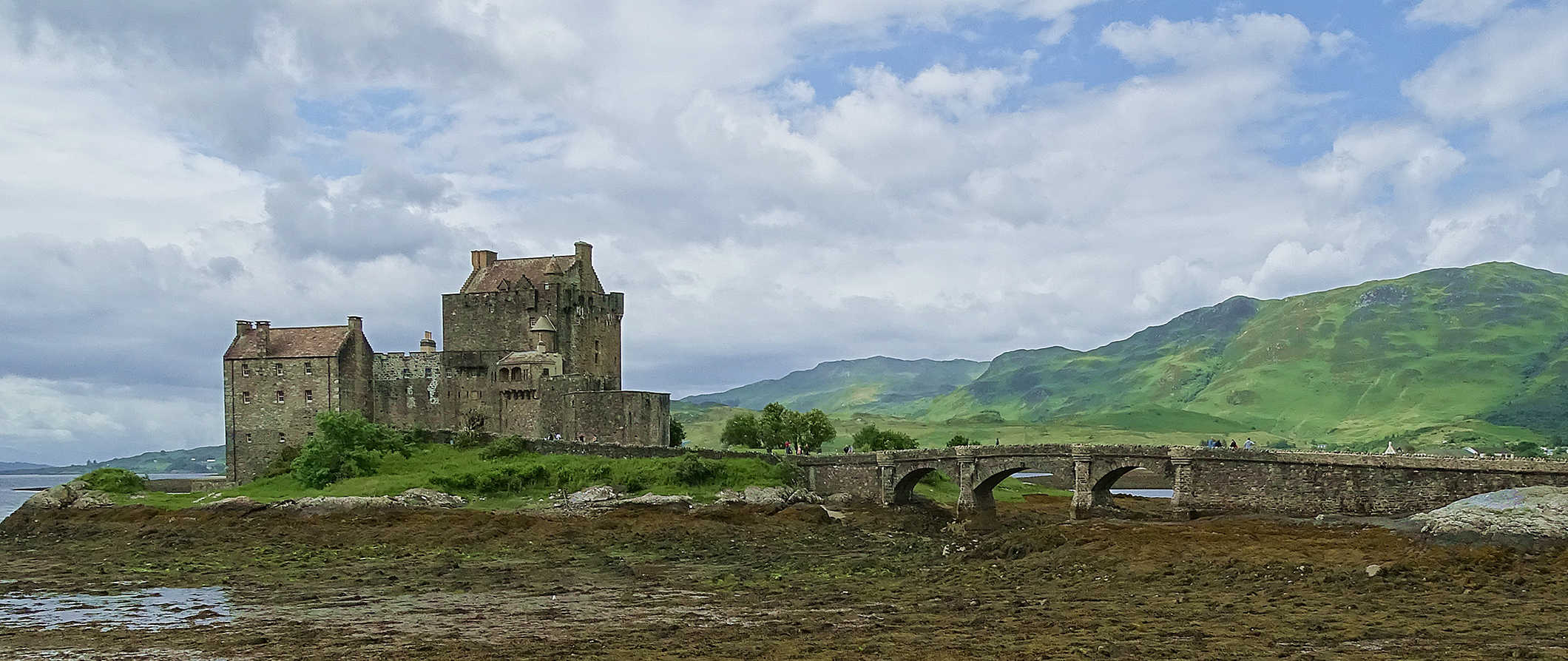
Partially conquered by the Romans, Scotland is a land with a turbulent past. It was invaded countless times by the English during the Middle Ages before the Treaty of Union in 1707 united the continent (an unpopular move at the time). Since then, it’s been a part of the United Kingdom (though there is a growing movement for independence).
While Scotland may be a small country (only 5.4 million people call it home), it’s had a huge impact on the direction of the world. Economist Adam Smith, inventor of the telephone Alexander Graham Bell, novelist Robert Louis Stevenson (he wrote Treasure Island ), philosopher David Hume, ecologist John Muir — the list of famous Scots goes on.
I love visiting Scotland. The people, the jovial spirit, the landscape, the booze — Scotland never disappoints (ok, maybe a little with the food). It’s an incredible destination for road trips so make sure you get out of the cities and into the highlands with their rich jagged landscapes. And be sure to head west to the islands of Islay, Jura, and Mull.
This travel guide to Scotland can help you plan where to go, what to see, how to save money, and everything in between!
Table of Contents
- Things to See and Do
- Typical Costs
- Suggested Budget
- Money-Saving Tips
- Where to Stay
- How to Get Around
- How to Stay Safe
- Best Places to Book Your Trip
- Related Blogs on Scotland
Click Here for City Guides
Top 5 things to see and do in scotland.
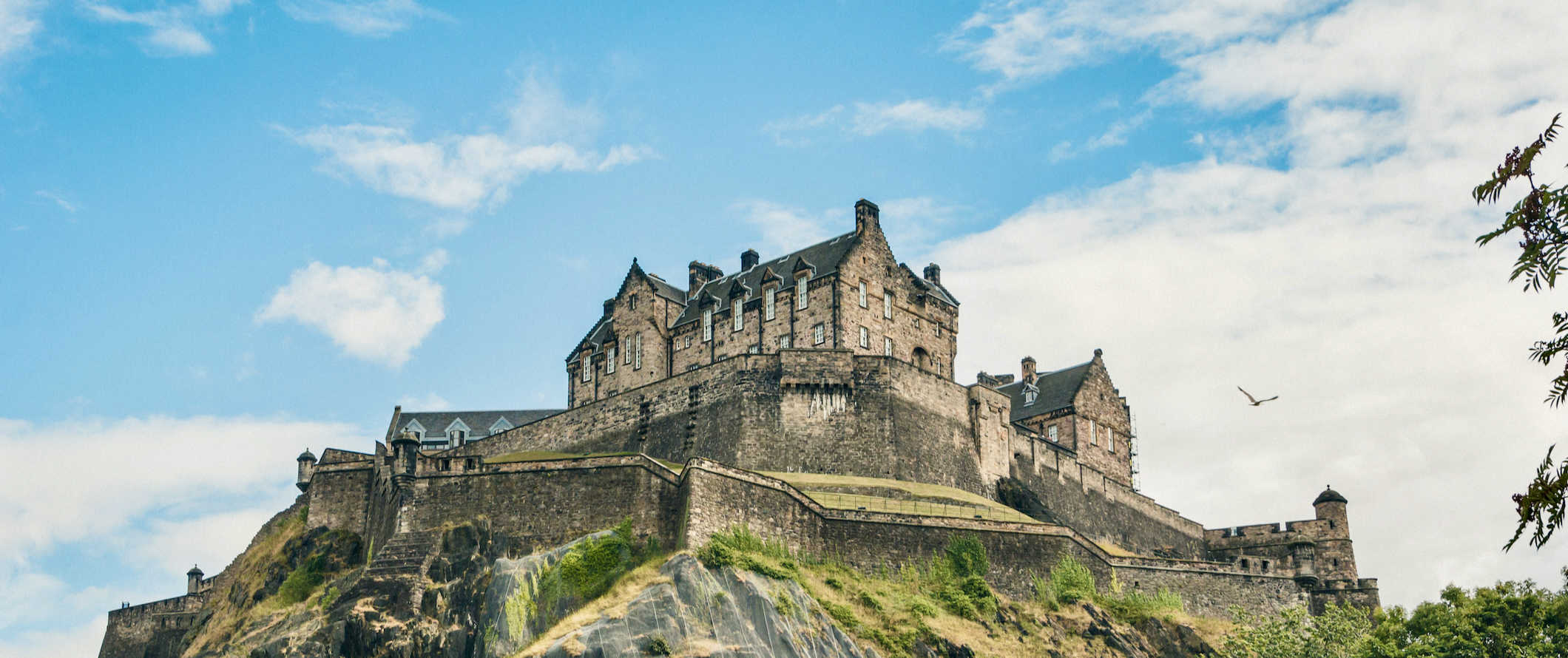
1. Explore the Scottish Highlands
Visit the highlands of Scotland for moody mountains, rugged terrain, glaciers, lochs, and kilt-clad Scotsmen. While the land may be harsh and unforgiving, you haven’t really seen Scotland until you’ve been here. Don’t miss Glencoe, Cairngorms National Park, Inverness, and the Isle of Skye.
2. Visit Edinburgh
Edinburgh is a glorious city filled with medieval cobblestone streets, lots of green space, free museums, a huge castle, and maybe even some ghosts. There’s a lot to do here so be sure to spend a few days. It’s an amazing place.
3. Celebrate Hogmanay
Hogmanay is one of the largest New Year’s celebrations in the world, attracting over 100,000 people for the two-day festival. The modern iteration has musical acts, a torchlight procession, multiple fireworks displays, and a large street party.
4. Drink whisky in Islay
Whisky has a long history on Islay . It’s been made there since the 16th–century — first in backyards and then, starting in the 19th-century, in big distilleries. Over the years, whisky from the island came to be considered a specialty and is famous around the world.
5. Visit Inverness
Besides the historic buildings in the Old Town, there is a great selection of places to eat and drink, Inverness Castle, the Inverness Museum and Art Gallery, and a Victorian Market. Plus, it is close to Loch Ness (it’s less than a 30-minute drive away), a bunch of distilleries, and a few golf courses.
Other Things to See and Do in Scotland
1. try to find nessie.
Loch Ness is one of the most famous lochs (lakes) in Scotland. It’s the alleged home to Nessie, aka the Loch Ness Monster, a creature said to live in the loch. The first “sightings” date back to the 1870s, though there is no definitive proof that any such creature exists. Nonetheless, the myth perseveres, making Loch Ness a popular destination to visit. While here, you can take a cruise, hike in the nearby hills, and enjoy some of the smaller nearby towns and villages like Dores or the nearby ruins of Urquhart Castle. The best way to get here is to travel to Inverness, from which Loch Ness is close enough to take a day trip to (it’s just a 25-minute drive from Inverness to Lochend, the top of Loch Ness).
2. Wander around Glasgow
Glasgow is a busy and bustling city, home to a youthful population (there is a university here) and a picturesque downtown. With plenty of parks, historical monuments, and museums, there is plenty to do here if you’re on a budget. It’s also a vegan and vegetarian hotspot too! Don’t miss the Kelvingrove Art Gallery and Museum, relaxing in Glasgow Green, seeing the cathedral, and day-tripping to the nearby Loch Lomond and the Trossachs National Park.
3. See the cathedrals
The cathedrals in Scotland are marvelous with their unique Gothic architecture and imposing heights. A few of the top cathedrals to visit are Dunfermline Abbey and Palace in Fife, St. Magnus Cathedral in the Orkney Islands, St Giles in Edinburgh, and Melrose Abbey in the Borders. Also, don’t miss the Glasgow Cathedral, which was built in 1136 and is the oldest building in Glasgow. Admission is free though donations are encouraged.
4. Puzzle over Rosslyn Chapel
This historic chapel near Edinburgh is ripe with intricate artwork and symbolism that has spawned many conspiracy theories (not to mention books). (Like why is there corn on the wall if corn wasn’t discovered until centuries later?). it was featured heavily in The Da Vinci Code and is located just an hour outside Edinburgh. Admission costs 9.5 GBP.
5. Play golf
The Scottish invented golf in the 15th century. If you’re not lucky enough to play a round at St. Andrews (the most famous course in the country) there are plenty of other immaculate and challenging courses to keep any golf player happy. Try to play during the low season (between November and March) if you want the lowest prices (St. Andrews, for example, costs 220 GBP to play in high season, versus 98 GBP in low season). Castle Stuart (Inverness), Royal Dornoch (Dornoch) , and Muirfield (Gullane) are some other great courses worth playing.
6. See the Cuillin
This dramatic mountain range dominates the Isle of Skye. There are two main ridges (the red and the black), which can be visited as a day trip or a longer two-day hike. Much of the mountain range, which stretches 14 kilometers (8.6 miles), can be hiked, though some peaks require more technical climbing skills. There are campgrounds and a hostel nearby in Glenbrittle as well. Some of the most popular trails are Rubh’ an Dùnain (3-5 hours, easy), Coire Lagan (2 hours, moderate), and Sgùrr Alasdair (6-8 hours, hard).
7. Visit Ruins of Melrose Abbey
Robert I (also known as Robert the Bruce) was the King of Scotland from 1306 until his death in 1329. Legend has it that his heart is buried in the ruins of Melrose Abbey. The abbey, founded in the 12th century and located in Melrose, was repeatedly destroyed by the English in the 14th century. You can still see marks on the surviving walls from cannonballs during the English Civil War. The abbey ruins (which is only a ruin of its former self, composed of several standing walls and arches) are decorated with intricate artwork carved into the remaining stone walls. Admission is 6 GBP.
8. Explore Dundee
Dundee is a lively student city along the coast with a lot of interesting museums. It’s a UNESCO City of Design and is the sunniest spot in the country too. Don’t miss a visit to Discovery Point to learn about the famous Antarctic expedition that launched from here in 1902 on the RSS Discovery (which you can board at the visitor center). Also, be sure to take in the great street art, the Vaults (a series of underground tunnels that date back to the 1750s), and The McManus Art Gallery as well.
9. Visit the Mystical Smoo Cave
The sleepy town of Durness, located 193 kilometers (120 miles) north of Inverness, is the access point for Smoo Cave , a coastline cave complex that can be explored independently or on a tour. Evidence from charcoal samples shows that it may have been inhabited over 4,000 years ago. The cave is free to enter but guided tours, which take you deeper into the cave, are 10 GBP. You get to see a lot more on the tour than you would if you just visit independently. Tours last around 20 minutes.
10. Head to the Isle of Arran
Located 2.5 hours west of Glasgow, this isle is a popular tourist destination for its charming scenery of jagged hills and rugged coasts, walking trails, and historic villages. Visit Brodick Castle, go for a hike, keep a lookout for seals and golden eagles, and enjoy the remote scenery. Don’t miss the Machrie Moor Stone Circles (which are sort of like Stonehenge) — they date back almost 5,000 years!
11. Explore the Cairngorms
Cairngorms National Park is the largest national park in the UK, spanning 4,528 square kilometers (1,748 square miles). Located two hours from Edinburgh by car, it makes for a great getaway for anyone looking to get out and see the highlands. The park is dotted with beautiful B&Bs in historic stone buildings and there are several campgrounds available for anyone traveling in a camper van or with a tent. Wild camping is also permitted, providing you do so responsibly. The park offers lots of hiking trails too. Don’t miss Ryvoan Pass (easy), Dalraddy to Ruthven (moderate), and Ben Macdui (difficult). If you visit in the winter, you can also go skiing on Cairn Gorm Mountain. If you’re lucky, you may spot some of the reindeer that call the park home (it’s the only herd in the British Isles). Admission to the park is free.
12. Attend the Edinburgh Fringe Festival
The Edinburgh Festival Fringe is the world’s largest arts festival. It usually lasts three weeks and takes over the entire city of Edinburgh. There are tens of thousands of performances including plays, musicals, live music, puppet shows, and much more! There are literally thousands of different shows held and hundreds of venues around the city. It’s a massive festival and brings in upwards of 3 million visitors. It’s a zany, inspiring, and entertaining festival and one that shouldn’t be missed. Just make sure you book your tickets and accommodation in advance as things fill up fast.
13. Tour the Isle of Skye
This popular island off the northwestern tip of the country is a scenic place to take a road trip. The island offers sweeping views over the rugged coastline, hiking trails, castles, waterfalls, and quaint villages and B&Bs. While most people just visit for a day, I suggest spending a few days driving around and getting off the beaten path. You can visit by bus if you don’t have a car, however, having your own vehicle will give you much more freedom. Don’t miss Dunvegan Castle, the Old Man of Storr rock formation, and brother’s point.
For more information on cities in Scotland, check out these guides:
- Edinburgh Travel Guide
- Glasgow Travel Guide
Scotland Travel Costs

Accommodation – Most 6-8-bed dorms in Scotland cost 18-22 GBP per night, though prices rise a few pounds in the summer and drop a few in the winter (you can find hostels for as little as 12 GBP in the off-season). Free Wi-Fi and lockers are standard, and most hostels also have self-catering facilities. Private rooms in a hostel cost around 40-65 GBP per night.
Budget hotels cost around 55-75 GBP per night with standard amenities like free Wi-Fi, TV, and coffee/tea makers. Some include free breakfast.
Airbnb is widely available in Scotland and is especially useful in the smaller towns and villages where there are fewer traditional hotels and hostels. A private room generally costs 25-30 GBP per night while entire homes/apartments start at 55 GBP per night, though most options are 70 GBP and above.
If you want to camp, expect to pay around 17 GBP per night for a basic plot (a small flat space for a tent without electricity). Most campgrounds close for the winter so availability is limited come late October/early November. If you’re in a car or campervan, you can use the app “park4night” to find paid overnight parking, free overnight parking, and campgrounds.
Food – Scottish food is hearty, heavy, and filling. Seafood is abundant, and popular traditional dishes include blood pudding, minced beef, fish and chips, smoked herring, neeps and tatties (turnips and potatoes), and of course haggis (a dish composed of minced sheep’s organs and spices inside a sheep’s stomach casing). Porridge is a common breakfast choice, though a larger breakfast of sausage, eggs, beans, and bread is not uncommon either. Sticky toffee pudding is a favorite dessert, and of course, you can’t visit Scotland without sampling some scotch.
Expect to pay around 10-12 GBP for a basic meal (like a Scottish breakfast). For pub food like a burger or fish and chips, prices are usually between 12-20 GBP for a meal. For a full three-course meal at a mid-range restaurant, prices begin around 27 GBP.
A pint of beer is around 4 GBP while a glass of wine is around 5.50 GBP. A latte or cappuccino is around 2.70 GBP.
If you’re looking for fast food (think McDonald’s), expect a combo meal to cost around 6 GBP. A classic fish and chips from a no-frills takeaway spot is around 6 GBP, while Chinese takeaway is around 8-10 GBP. Street food (like from a food truck) costs around 6-8 GBP. Eat near the universities for the cheapest food options.
A week’s worth of groceries costs around 40-60 GBP. This covers basic staples like pasta, rice, seasonal produce, and some meat. The cheapest supermarkets to look out for are Aldi, Lidl, Asda, and Tesco.
Backpacking Scotland Suggested Budgets
On a backpacker budget, you can visit Scotland for around 55 GBP per day. On this budget, you’re staying in a dorm room or camping, cooking all of your meals, using local transportation, sticking to mostly free activities (like hiking, museums, or free walking tours), and limiting your drinking.
On a mid-range budget of about 105 GBP, you can stay in a private Airbnb room, eat out at cheap local restaurants for a few meals, enjoy a few drinks, take the occasional taxi to get around, and do more paid activities like visiting castles or doing a whisky tasting.
On a “luxury” budget of 210 GBP or more per day, you can stay in a hotel, eat out for every meal, drink what you want, take the train between cities or rent a car, and visit as many museums and attractions as you’d like. This is just the ground floor for luxury though — you can easily spend more if you want to splash out!
You can use the chart below to get some idea of how much you need to budget daily, depending on your travel style. Keep in mind these are daily averages — some days you’ll spend more, some days you’ll spend less (you might spend less every day). We just want to give you a general idea of how to make your budget. Prices are in GBP.
Scotland Travel Guide: Money-Saving Tips
While Scotland is expensive, there are lots of ways to lower your costs. Here are some tips to help you save money in Scotland:
- Get the Edinburgh City Pass – If you’re planning to explore Edinburgh, get the City Pass. For 45 GBP, you get access to 22 attractions as well as free transportation to and from the airport. There is also a two-day pass for 55 GBP and a three-day pass for 65 GBP.
- Eat in a pub – The best food is often in the pubs at a fraction of the price compared to a proper restaurant. Also, pubs generally give you a true taste of Scottish culture. Scotland is pub-land – they’re everywhere.
- Eat during lunch – Many cafes, bakeries, and chains offer lunch deals for as little as 3-5 GBP.
- Visit the free museums – The public museums in Scotland are free so take advantage! Free museums include The National Museum of Scotland, Scottish National Gallery, Royal Botanic Garden Edinburgh, and the Scottish National Gallery of Modern Art.
- Use buses – If you need to go anywhere, buses are by far the cheapest way to reach the widest range of places on a regular schedule. You can even find tickets for just 1 GBP from Megabus if you book far enough in advance.
- Avoid eating and shopping in the city centers – Both Glasgow and Edinburgh get significantly more expensive the closer you get to the city center. There are plenty of good restaurants and quirky shops outside of the center, so go for those. Trust me, you won’t be disappointed.
- Use apps to get food deals – On the app Too Good to Go, participating eateries sell severely discounted meals/groceries/baked goods at the end of the day. You just sign up, see what is being offered near you, and pick up your cheap food at the end of the day. It has good coverage all across Scotland, particularly in Edinburgh. For discounts on takeout try the app Secret Takeaways which supports local restaurants in Edinburgh and Glasgow by cutting out the delivery app middleman (and their high fees).
- Stay with a local – Couchsurfing is the best way to save on accommodation in Scotland. You’ll not only save some money but get access to a knowledgeable local who can help point you to some of the country’s hidden gems. It may not be fancy, but you’ll get a unique experience and learn far more about the destination than if you stayed in a hotel!
- Take a free walking tour – If you want to understand more about the history, architecture, and people of Scotland then be sure to take a free walking tour. They usually last a couple of hours and are a great introduction to the city. New Europe has a great free tour in Edinburgh and Visit Scotland offers one in Glasgow.
- Cook your own meals – Eating out in the UK isn’t cheap. Save yourself some money and cook a few meals for yourself. It may not be as fancy as eating out, but your wallet will thank you!
- Rent a campervan – If you’re planning to get out of the city, rent a camper van. You can get them for as little as 30 GBP per day. They come with basic self-catering facilities so you can cook your food and have somewhere cheap to stay. There are lots of free places to park around the country. Just use the app park4night to find them.
- Use BlaBlaCar – BlaBlaCar is a ridesharing app you can use to travel in between cities. It’s faster than the bus and usually just as cheap. You have to find a ride, which can sometimes be hit or miss, but the profiles are verified and reviewed so it’s quite safe. Plus, it’s a great way to connect with other locals/travelers.
- Use discount websites – Groupon, Wowcher and Living Social have good deals on accommodation, attractions, and dining out.
- Bring a water bottle – The tap water here is safe to drink so bring a reusable water bottle to save money and reduce your plastic use. LifeStraw is my go-to brand as their bottles have built-in filters to ensure your water is always clean and safe.
Where to Stay in Scotland
Accommodation in Scotland isn’t cheap, but there are nevertheless lots of great hostels to stay at to help you meet people and save money. Here are my favorite hostels in Scotland:
- Castle Rock (Edinburgh)
- Edinburgh Backpackers (Edinburgh)
- Kick Ass Grassmarket (Edinburgh)
- Glasgow Youth Hostel (Glasgow)
- Euro Hostel Glasgow (Glasgow)
- Broadford backpackers (Isle of Skye)
- Stirling Youth Hostel (Stirling)
How to Get Around Scotland

Public Transportation – Public buses and trams cost around 1.50-2 GBP for one-way ride. For a single-day pass, expect prices to start at 4 GBP per person. In Glasgow, a 7-day public transportation pass costs 17 GBP.
Only Glasgow has a subway system and the tickets for the bus and metro are not interchangeable as they are operated by two different companies (though prices between the two are comparable).
Airport shuttles cost around 6-8 GBP each way.
Flying – Flying around Scotland is both inconvenient and expensive. There are very few direct flights, making it slower to fly than to take the bus. I would avoid flying and just take the bus or train.
Bus – Buses are a popular and affordable way to get around the country as they link most destinations in the country. Scottish Citylink, Stagecoach, Megabus, and National Express are the four main companies that operate here. Tickets can be found for as little as 1 GBP via Megabus, though they’re usually around 10-25 GBP.
Edinburgh to Glasgow, for example, is a one-hour bus ride that costs 8 GBP while the three-hour journey from Glasgow to Inverness costs around 20-30 GBP. The sooner you book your ticket, the lower the price, so always try to book in advance. The coaches here are modern and comfortable with bathrooms and Wi-Fi as well.
Train – Trains connect all the major cities in Scotland (as well as the towns and villages they pass through). When purchased in advance (12 weeks out is the sweet spot), tickets are only a little more expensive than the bus. For example, Inverness to Glasgow takes about as long as the bus and is only 30 GBP while Edinburgh-Glasgow is 30 minutes faster than the bus for just 1-2 GBP more. Just be sure to book early to get the best prices. Last-minute tickets can be expensive!
Car rental – Scotland is a great road trip destination. You can get cars for 20 GBP per day and campers for 30 GBP per day. Just remember that traffic flows on the left. Most vehicles are manual transmissions as well. Renters need to be at least 21 years of age.
Rideshare – Ridesharing apps like Uber are a reliable but expensive way to get around in cities like Glasgow and Edinburgh. Skip them if you can.
For longer distances, use BlaBlaCar. It’s a ridesharing app that pairs you with drivers who are traveling to other cities. They have profiles and reviews (similar to Airbnb) so it’s quite safe. It’s usually not as cheap as the bus, but it’s faster and more comfortable.
When to Go to Scotland
Summer is the most popular time to visit Scotland. In July and August, there’s warm weather and minimal rain, with temperatures reaching highs of around 20°C (68°F). This is also the busiest time of the year, so expect crowds in the cities and lots of people out enjoying the national parks. The Edinburgh Fringe Festival takes place in August, which is a huge multi-week festival. Be sure to book your accommodation in advance if you’re visiting during this time.
September is a rather wet month, though in October there’s incredible fall foliage. Overall, October is a great time to visit — especially if you plan on renting a car or camper and heading into the Cairngorms (Scotland’s biggest national park). Seasonal businesses and accommodations start to close in mid-October so be sure to keep that in mind when planning. Expect October temperatures to hover around 12°C (55°F) during the day.
The spring is a great time to visit, with April and May offering minimal rain and no crowds. There’s still snow and cool temperatures in the highlands, but the cities are lively without being crowded.
Winters in Scotland are cold and dark. December is relatively dry, with temperatures dipping below 0°C (32°F). It’s nevertheless a popular time to visit, with many tourists coming to Edinburgh for the huge Hogmanay New Year’s Eve celebration (one of the biggest New Year’s festivals in the world). Book your accommodation well in advance if you plan to attend.
By February, snow is common so keep that in mind if you plan on renting a vehicle. Unless you’re coming to engage in winter sports, I’d avoid a winter visit unless you don’t mind the grim and grey atmosphere of the country.
How to Stay Safe in Scotland
Scotland is a safe country, even for solo travelers, and even for solo female travelers. Like in all cities, stay vigilant when you’re in crowded tourist areas or on public transportation as that is when pickpockets usually strike. If you keep your valuable secure, however, you shouldn’t have any issues.
Additionally, solo female travelers don’t need to worry in Scotland, however, women should take the standard precautions when traveling alone at night (don’t travel alone intoxicated, keep an eye on your drink, etc.).
Keep in mind that traffic flows on the left here. Most vehicles are manual transmissions and have the gear shift on the left (which is opposite to most other countries). Driving might take some getting used to so drive carefully — especially in cities and when going through roundabouts.
If you are hiking, make sure you have the appropriate equipment and notify your accommodation of your plans just in case as the weather can change quickly in the highlands.
While scams here are rare, you can read about common travel scams to avoid here if you’re concerned.
If you experience an emergency, dial 999 for assistance.
Always trust your gut instinct. Avoid isolated areas at night and be aware of your surroundings at all times. Make copies of your personal documents, including your passport and ID.
If you don’t do it at home, don’t do it in Scotland!
The most important piece of advice I can offer is to purchase good travel insurance. Travel insurance will protect you against illness, injury, theft, and cancellations. It’s comprehensive protection in case anything goes wrong. I never go on a trip without it as I’ve had to use it many times in the past. You can use the widget below to find the policy right for you:
Scotland Travel Guide: The Best Booking Resources
These are my favorite companies to use when I travel. They consistently have the best deals, offer world-class customer service and great value, and overall, are better than their competitors. They are the companies I use the most and are always the starting point in my search for travel deals.
- Skyscanner – Skyscanner is my favorite flight search engine. They search small websites and budget airlines that larger search sites tend to miss. They are hands down the number one place to start.
- Hostelworld – This is the best hostel accommodation site out there with the largest inventory, best search interface, and widest availability.
- Booking.com – The best all around booking site that constantly provides the cheapest and lowest rates. They have the widest selection of budget accommodation. In all my tests, they’ve always had the cheapest rates out of all the booking websites.
- Get Your Guide – Get Your Guide is a huge online marketplace for tours and excursions. They have tons of tour options available in cities all around the world, including everything from cooking classes, walking tours, street art lessons, and more!
- SafetyWing – Safety Wing offers convenient and affordable plans tailored to digital nomads and long-term travelers. They have cheap monthly plans, great customer service, and an easy-to-use claims process that makes it perfect for those on the road.
- LifeStraw – My go-to company for reusable water bottles with built-in filters so you can ensure your drinking water is always clean and safe.
- Unbound Merino – They make lightweight, durable, easy-to-clean travel clothing.
- Top Travel Credit Cards – Points are the best way to cut down travel expenses. Here’s my favorite point earning credit cards so you can get free travel!
- BlaBlaCar – BlaBlaCar is a ridesharing website that lets you share rides with vetted local drivers by pitching in for gas. You simply request a seat, they approve, and off you go! It’s a cheaper and more interesting way to travel than by bus or train!
Edinburgh Travel Guide: Related Articles
Want more info? Check out all the articles I’ve written on backpacking/traveling Scotland and continue planning your trip:
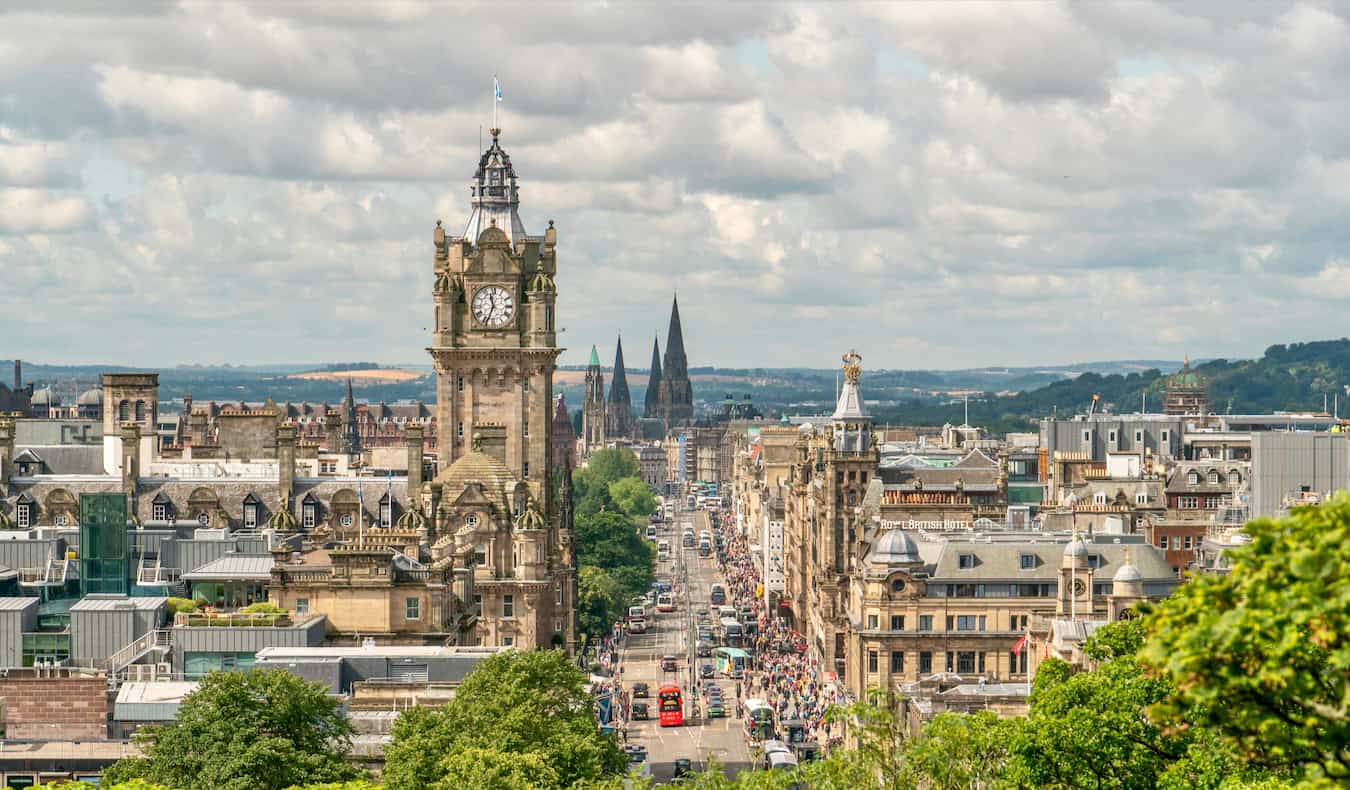
The 7 Best Hostels in Edinburgh

10 Scotland Road Trip Tips You Need to Know Before You Go
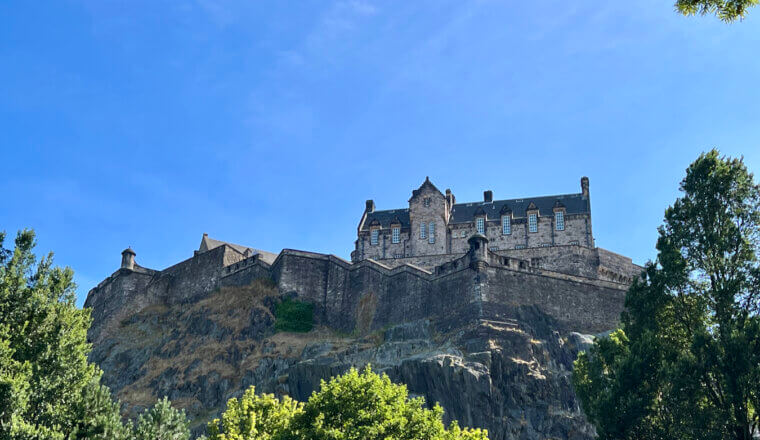
The 6 Best Hotels in Edinburgh
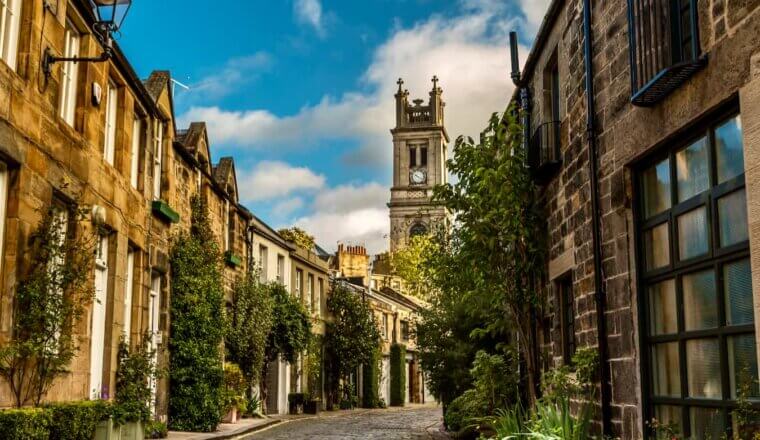
The Best Walking Tours in Edinburgh
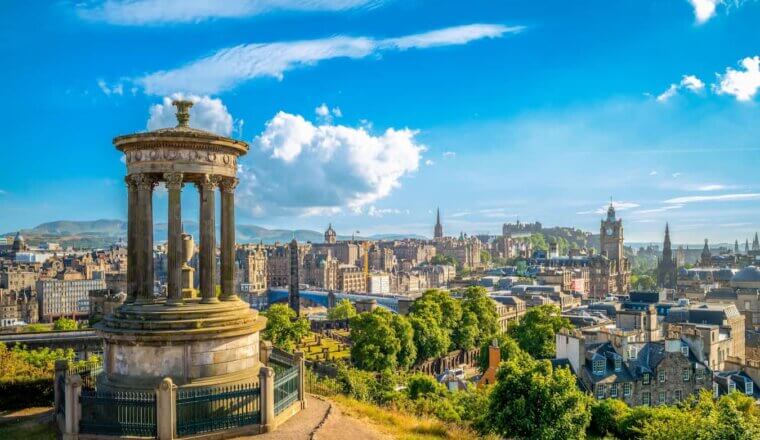
Where to Stay in Edinburgh: The Best Neighborhoods for Your Visit
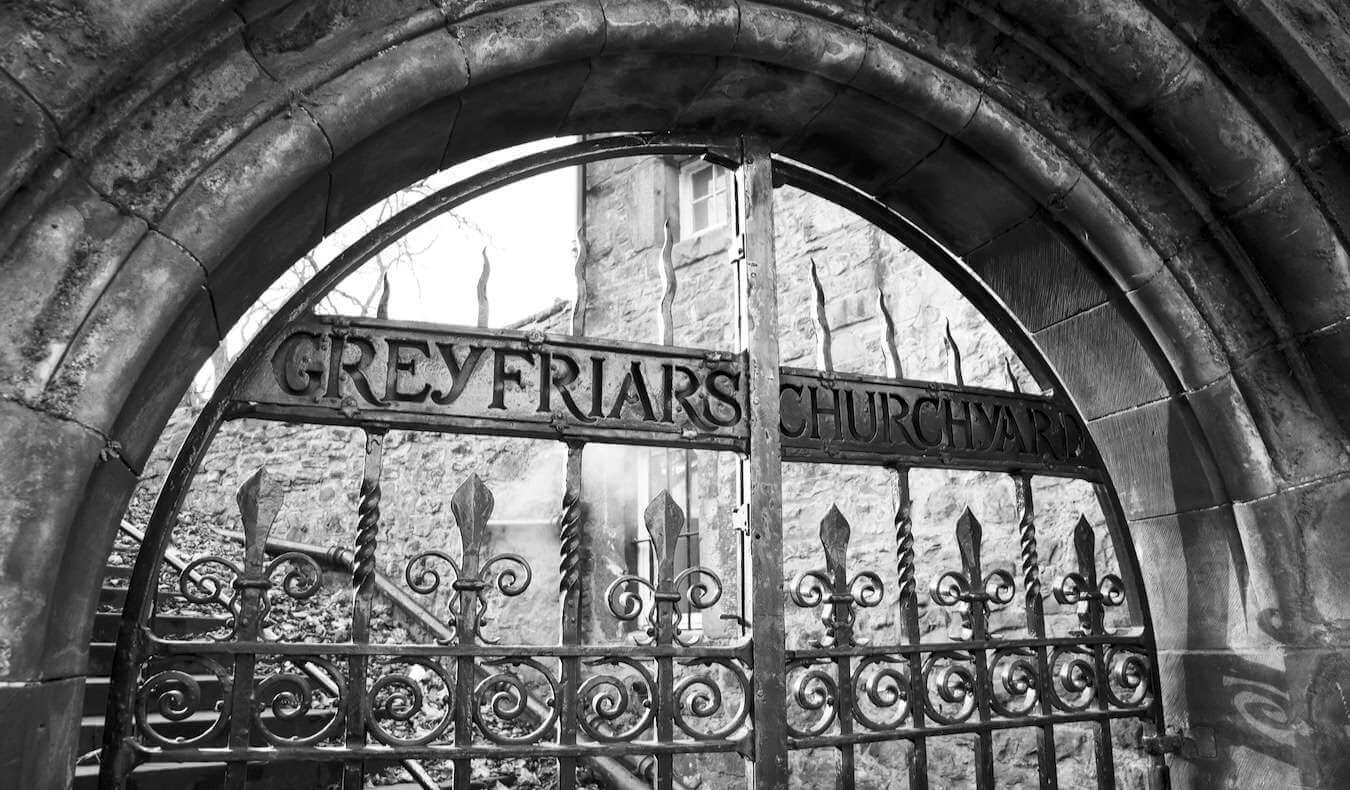
The Best Ghost Tours in Edinburgh
Get your free travel starter kit.
Enter your email and get planning cheatsheets including a step by step checklist, packing list, tips cheat sheet, and more so you can plan like a pro!

- Where To Stay
- Transportation
- Booking Resources
- Related Blogs

37 Scotland Travel Tips for First Timers & Must Knows Before You Go
Last Updated: October 19, 2023
*FYI - this post may contain affiliate links, which means we earn a commission at no extra cost to you if you purchase from them. Also, as an Amazon Associate I earn from qualifying purchases. Check out our Privacy Policy and Disclosure. for more info.
Scotland is one of those countries that has the world in a permanent chokehold. With idyllic lochs and glens, soaring Munros, vibrant cities, and absurdly charming accents… it’s hard to believe sometimes that this country is real.
But real it is my friends, and somehow, it’s even better when you get to see it all in person.
Unlike other places in the world where reality pales in comparison to the filtered photos, Scotland is somehow more magical, more captivating, and more charming than photos can convey… so long as you prepare properly.
I recently spent a month in Scotland, mainly for festival season in Edinburgh and there were a lot of silly things I had to learn the hard way. Turns out Scotland, while amazing, can have a few traps and easy mistakes that first timers fall into.
So, in this post, I’ll be sharing the Scotland travel tips I wish I had before my first visit. I hope you find them helpful!

Save this list of Scotland Travel Tips for later!
You’ll be very glad you did.
1. Know the difference between Scotland, England, the UK & Great Britain
Alright, let’s kickstart this list of Scotland travel tips with a simple but very important distinction: the difference between Scotland, England, the UK & Great Britain.
While I’d like to think not too many people use them interchangeably, here’s what you need to know: Scotland is located in the northern portion of the island of Great Britain .
It is part of the United Kingdom but it’s culturally very distinct from other parts of the UK, like England, Wales & Northern Ireland.
So, keep in mind that when you go to Scotland, you’re experiencing Scottish culture and hearing Scottish accents – don’t call them English or refer to their accents as “British”.
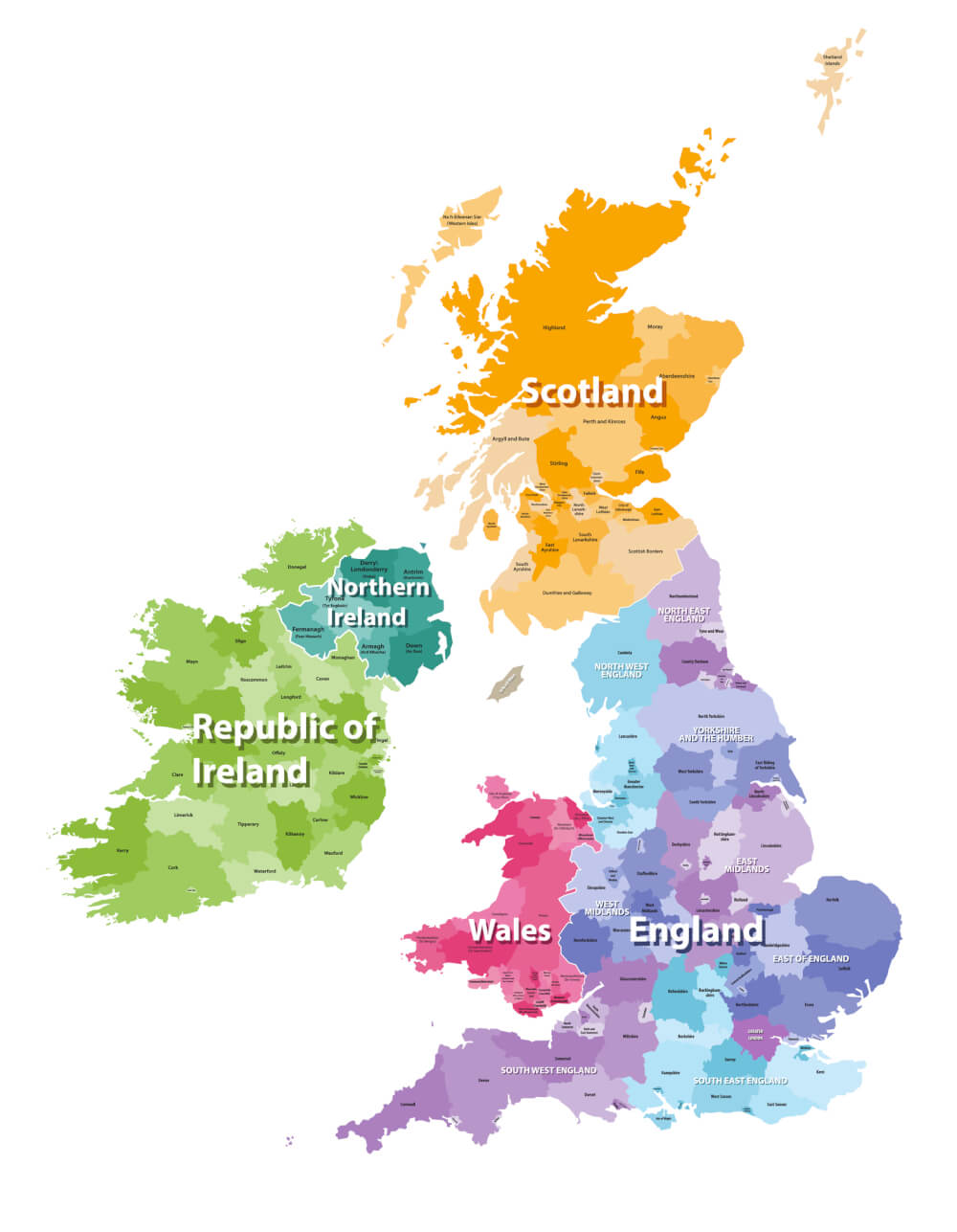
2. Familiarize yourself with Scotland’s airports
When planning your grand arrival into bonny Scotland, you should know that there are five international airports in Scotland:
- Aberdeen International Airport
- Edinburgh Airport
- Glasgow International Airport
- Glasgow Prestwick Airport (AKA just Prestwick Airport)
- Inverness Airport
For most visitors from overseas, Edinburgh Airport is the most common point of entry and is well connected to the city by public transport like buses and trams.
NOTE: While its flights are limited, Glasgow Prestwick is the only airport in Scotland that’s directly connected to the country’s rail network, but all the other airports are well served by other forms of public transport like buses and trams.

3. Create a mixed itinerary to make the most of all Scotland has to offer
Now in terms of where to go, believe me when I say that there is SO much to see in Scotland that one trip, even fifty trips, wouldn’t be enough.
So, to make the most of your time, I’d suggest mixing things up and combining both city and nature travel, as well as famous and offbeat sights to get a varied taste of what makes Scotland so special.
While most first time visitors will usually visit some combination of Edinburgh, Glasgow & the Highlands, that’s just a tiny portion of the country, which the official tourism authority divides into over a dozen different regions.
So, be sure to look beyond the most famous areas to create a well-rounded trip you’ll never forget. Ever.

… So how can you find places more off the beaten path? Well, here are some ideas…
4. Prioritize exploring one area thoroughly vs. trying to cover too much ground
If your goal is to combine both iconic sights with more offbeat finds, then I would recommend picking a smaller area of Scotland to cover for your trip, rather than trying to cover too much ground.
The truth is there are loads of ultra famous places in Scotland like the Isle of Skye or Loch Ness, but if you do your research, you’ll likely be able to find many alternatives for famous islands, lochs or castles closer to your chosen base. Loch Ness for instance is literally only one of over 30,000 lochs.
So sticking to a small area will not only save money but also help you find hidden gems of your own.
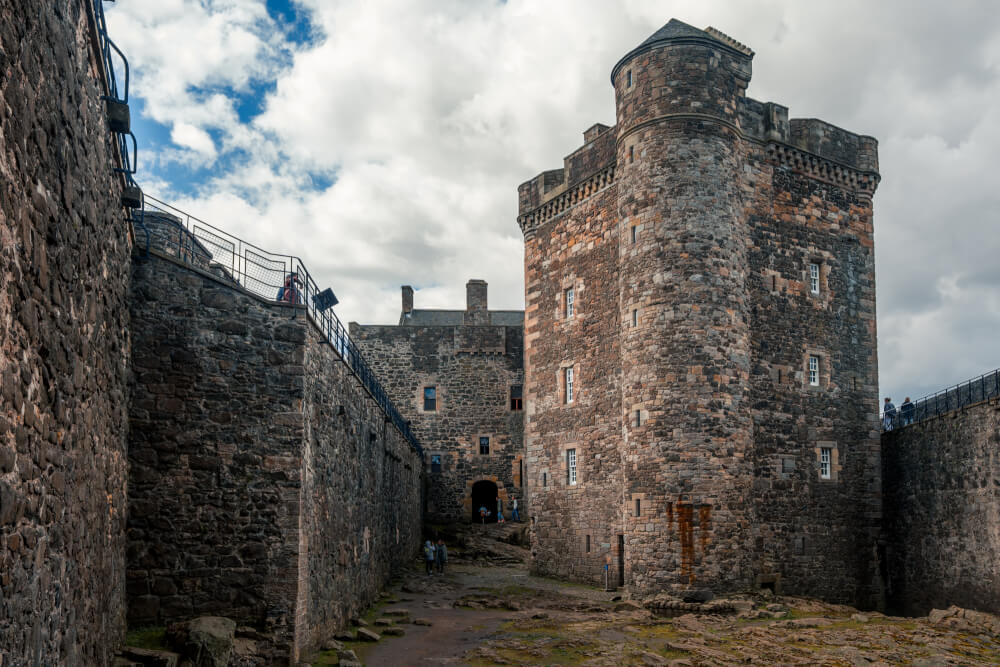
5. Get inspiration from local Scottish content creators
I would also recommend consuming content from creators based in Scotland because they’re way more likely to have covered offbeat places compared to bloggers who come for a week or two, or even a month like me.
(I mean give me time to catch up… I’m working on it!)
In the meantime, until I can empty my savings and drool reservoir in the foolish pursuit of ‘completing Scotland’, here are some Scotland-based creators I can recommend:
- Watch Me See
- Wayfaring Kiwi
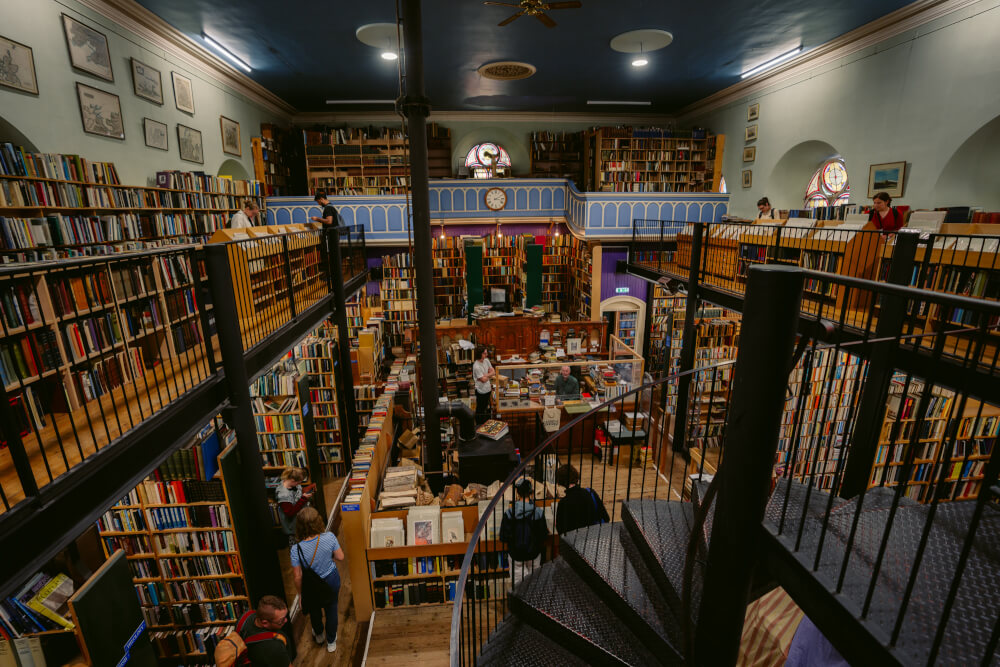
6. Rent a car if you want to explore in-depth
While public transport with trains and buses is pretty good between and within cities in Scotland, you will definitely need a car if you want to explore Scotland’s nature & countryside in-depth.
There are some seriously gorgeous road trips in Scotland like the…
- North Coast 500
- The North East 250
- And many many more
Plus having a car will just allow you to see a lot more on your own schedule, so if independence is important to you, then car rental is a must.
And I say this from experience! My boyfriend and I didn’t have a car during our month in Scotland because we stayed primarily in Edinburgh, and while we were still able to see a lot through booking day tours, this of course restricted us to some of the best known and most visited places in Scotland.
Granted, we still had a wonderful time, but there was no shaking the shameless tourist vibe, so if you’re someone who likes to explore more offbeat places, then you’ll definitely need a car for that.
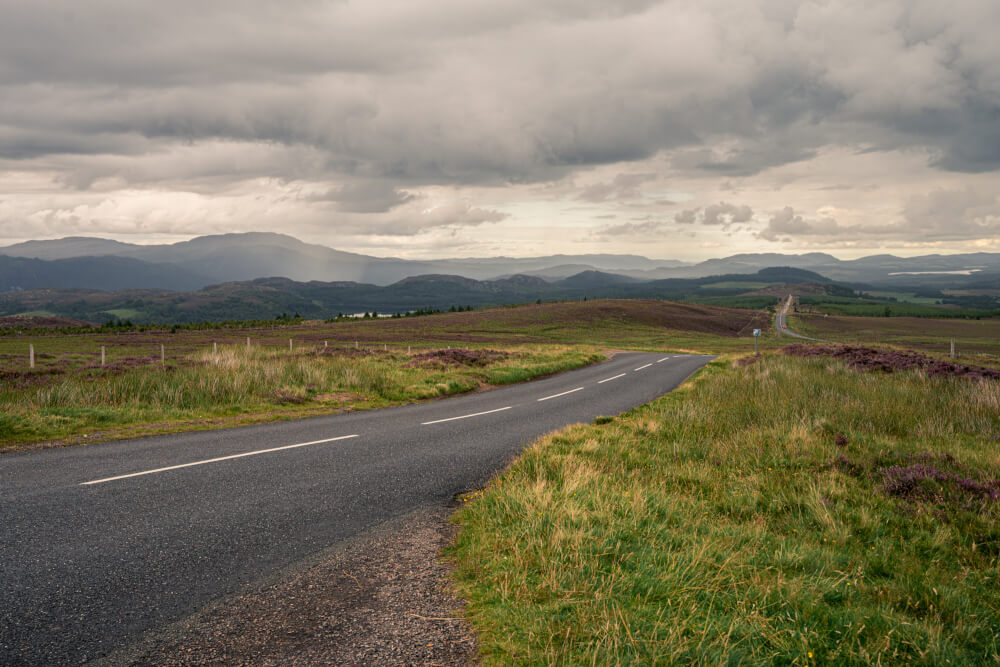
If you do rent a car though…
7. Prepare yourself for driving in Scotland
Apart from driving on the left side, roads can be quite narrow and regulations may be different to what you’re used to at home.
The legal alcohol limit for instance is stricter than elsewhere in the UK, which catches a lot of people off guard if they just want to have a beer with lunch, so be sure to read up on all the rules before you go rather than assuming.
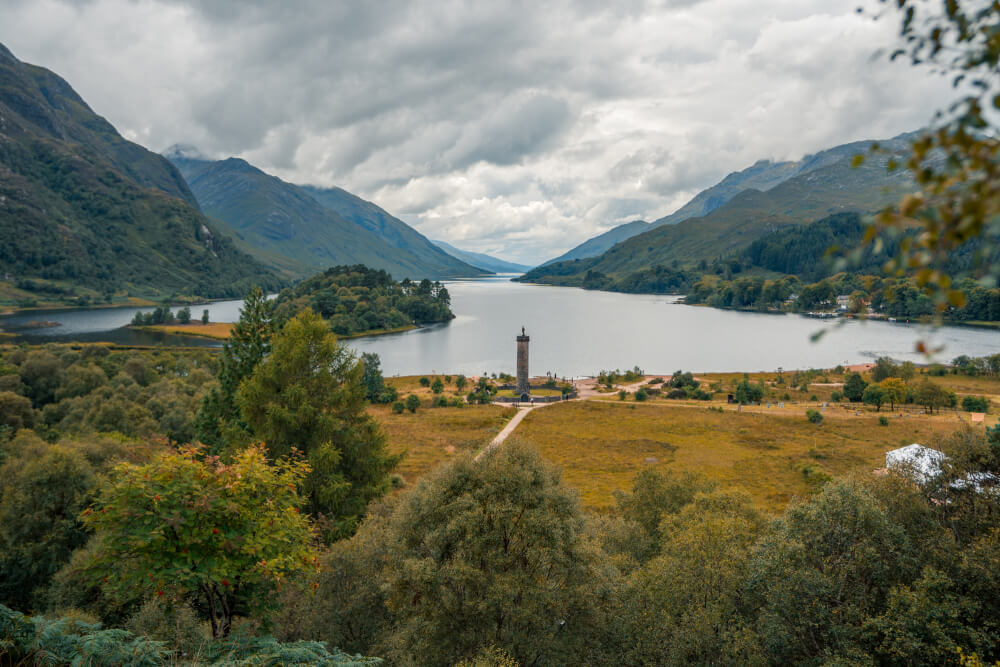
8. Plan for (or around) Scotland’s peak seasons
In terms of when to go, know that peak season is definitely summer, especially August in and around Edinburgh, when the entire city come alive with festival season. ( Read my Edinburgh travel tips too if you’re headed that way!)
There’s also other fun summer events like Highland Games across the country, as well as some very popular winter festivals as well, including Hogmanay, the country’s very famous New Year’s celebrations.
This is why you should book as far in advance as possible for peak periods like summer and Christmas if you want to experience some of these cultural events… or plan to visit in off/shoulder seasons if you want to get away from the crowds.

9. Book ahead whenever possible
In any case, booking ahead for accommodation is always a good idea in Scotland.
A lot of popular tourist places like Inverness are relatively small and don’t have that many hotels compared to larger cities, so booking in advance is your best defense against eye-gouging prices.
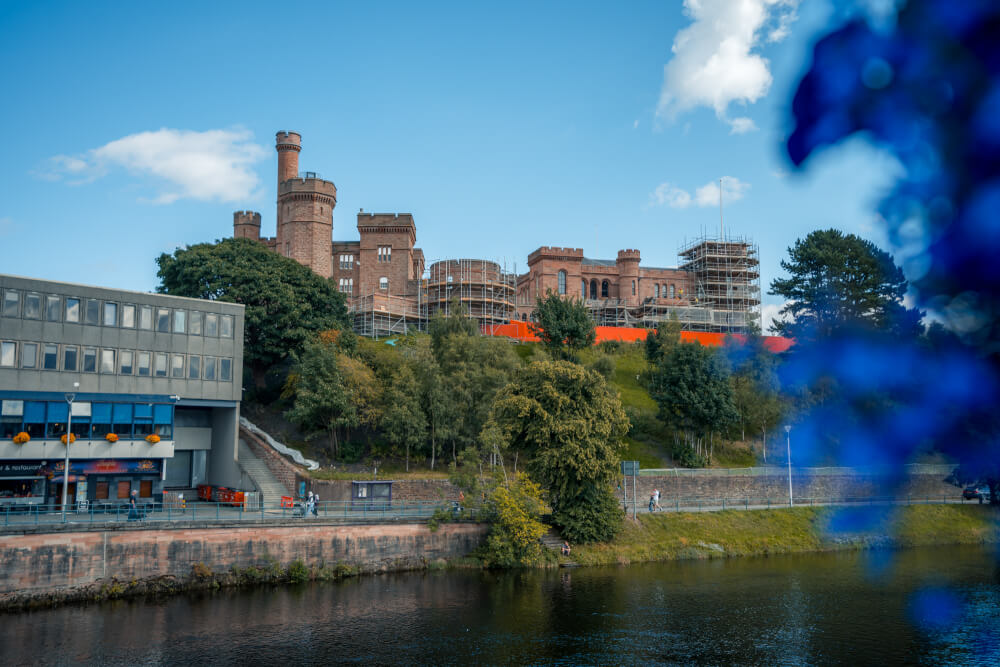
10. Take note that there’s freedom to roam
Now, this is a Scotland travel tip that you’re not likely to use as an average tourist, but just to throw this out there, if you enjoy camping or just wandering out to new places with reckless abandon, Scotland is an excellent place for it thanks to their rules around ‘freedom to roam’ (AKA right to roam).
Thanks to the Land Reform (Scotland) Act of 2003, Scotland has this principle known as freedom to roam, which gives people the right to access most land and inland water for (non-motorised) recreational activities, with main exceptions being common sense areas like private gardens and fields with crops.
So, if you want to get out there and really experience Scotland’s nature, go for it!

11. Get a travel-friendly credit card before your trip
As I mentioned in my England travel tips post, these days, contactless card payments are increasingly common across the UK, with many public transport systems relying on them, and even some establishments becoming card-only.
The same is true in Scotland, so if you don’t have a travel-friendly credit card already (meaning one that minimizes fees abroad) then I’d recommend getting one.
I used my Wise card pretty much everyday and never had any issues. They’re my go-to for simple travel-friendly cards, plus your card is sent to you for free so there’s really no downsides.
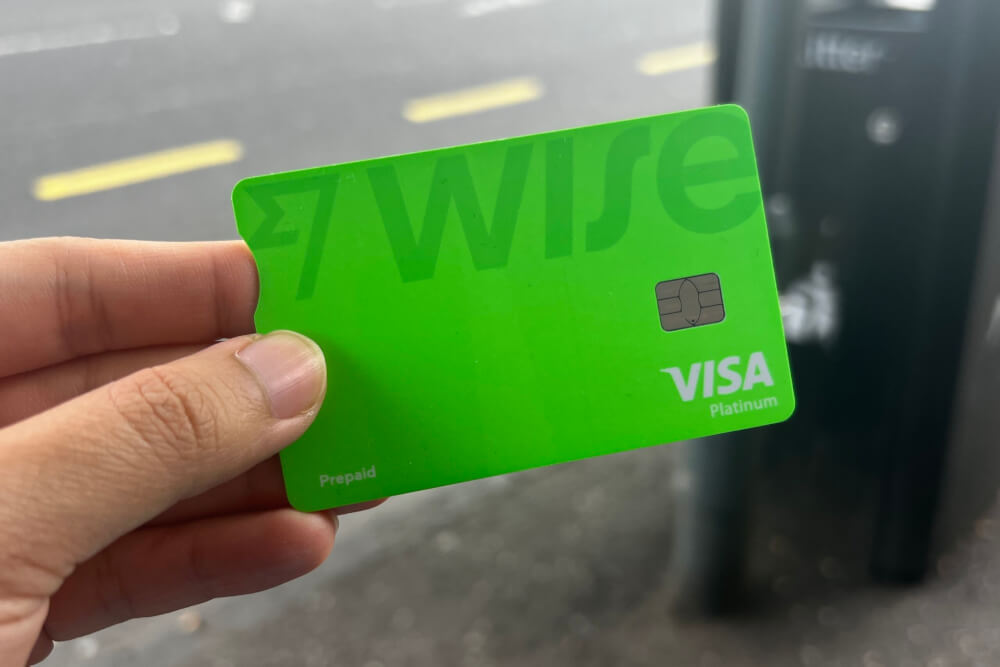
12. Be sure to try local Scottish delicacies
Alright, with that shiny new card in hand, it’s time to spend it on some tasty Scottish fare.
Here are some iconic Scottish dishes to fuel you through your sightseeing rampage through Scotland:
- Haggis: A famous dish that requires no introduction – keep an open mind and try it before you Google it. I actually think it’s pretty good! It’s usually served with neeps and tatties, which are mashed turnip and mashed potato
- Cullen skink: A creamy fish soup, usually served with some bread
- Chicken tikka masala : Marinated chicken in a spiced tomato-based sauce. Fun fact, it’s considered a national dish of the UK, which some credit to a chef in Glasgow
- Shortbread: THE buttery cookie beloved across the world!
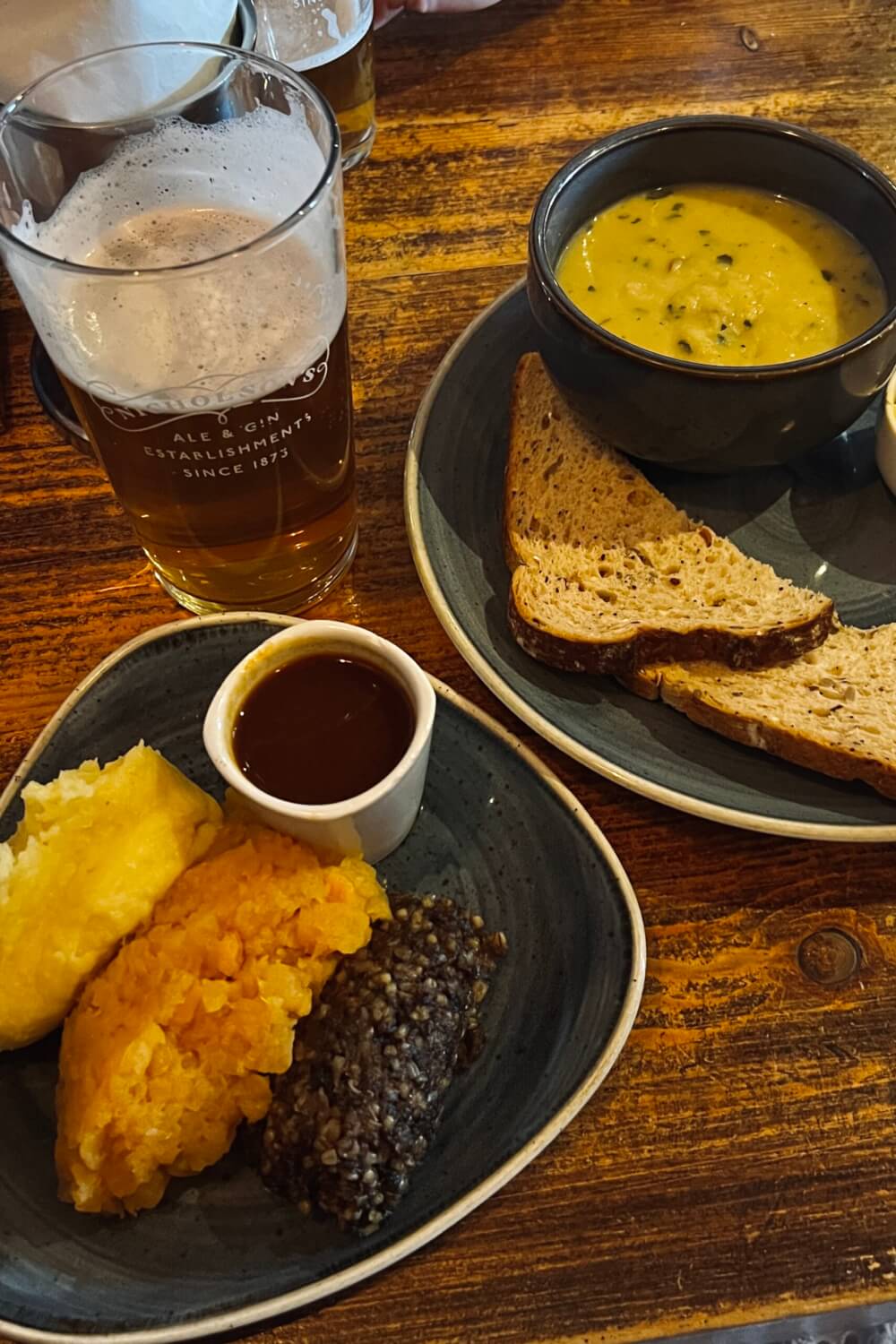
And if you want to try something more gluttonous, Scottish chippies are pretty famous for their ability to fry anything , from pizza to Mars Bars.
Many takeaway places also do munchie boxes which involve tons of (usually deep fried) fast food thrown into a box. Maybe good to try just once, for the sake of your arteries.
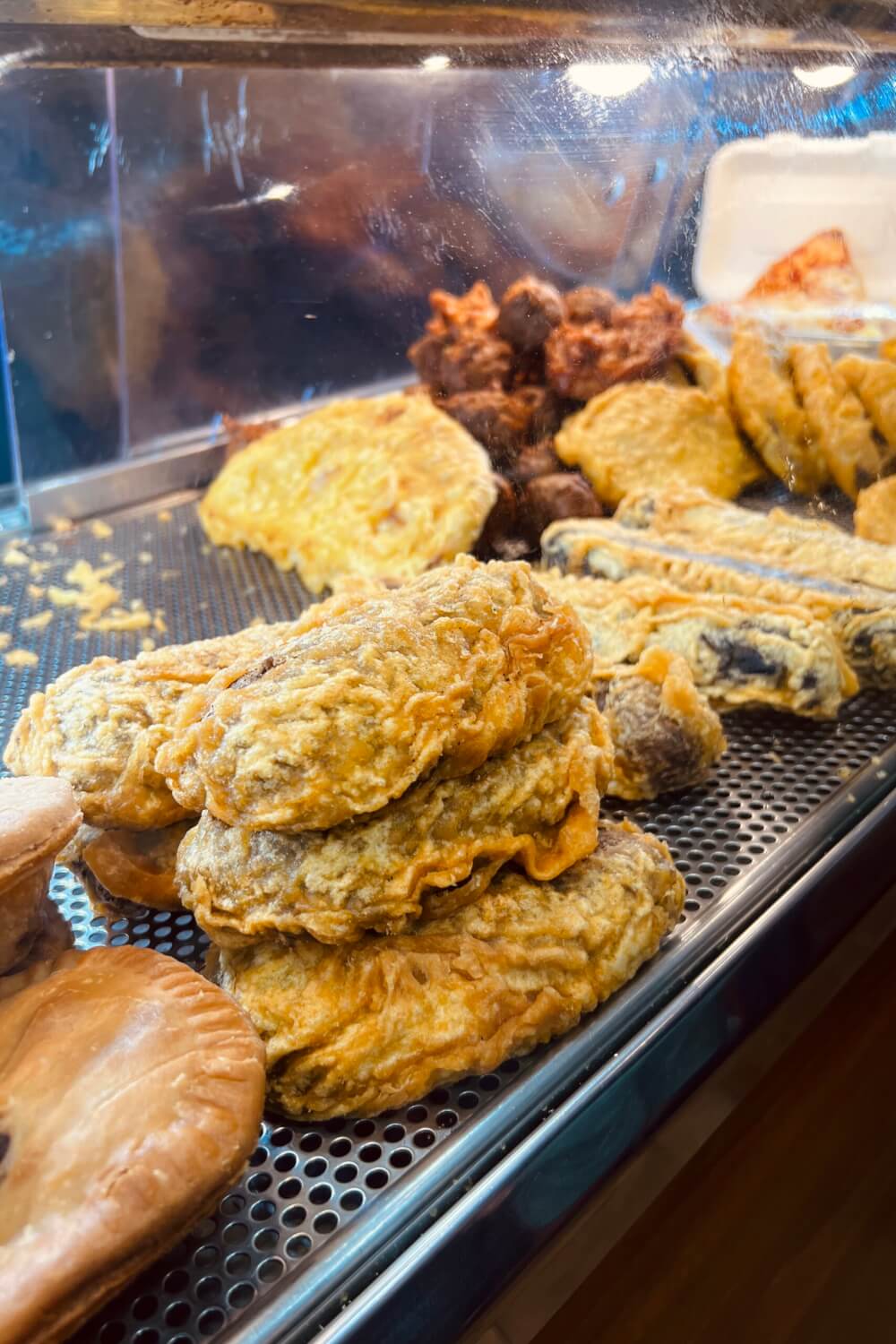
13. Make food bookings in advance
Now, in terms of restaurants, it might be smart to book in advance, especially during peak season.
This is especially true in smaller places like Inverness where there aren’t a ton of options. Luckily, these days, most food spots have fairly simple booking systems online when you search them up on Google Maps. For more old school restaurants, email or phone bookings also work well.
In any case, if you have your heart set on a particular place, make sure to book ahead whenever you’re able to.
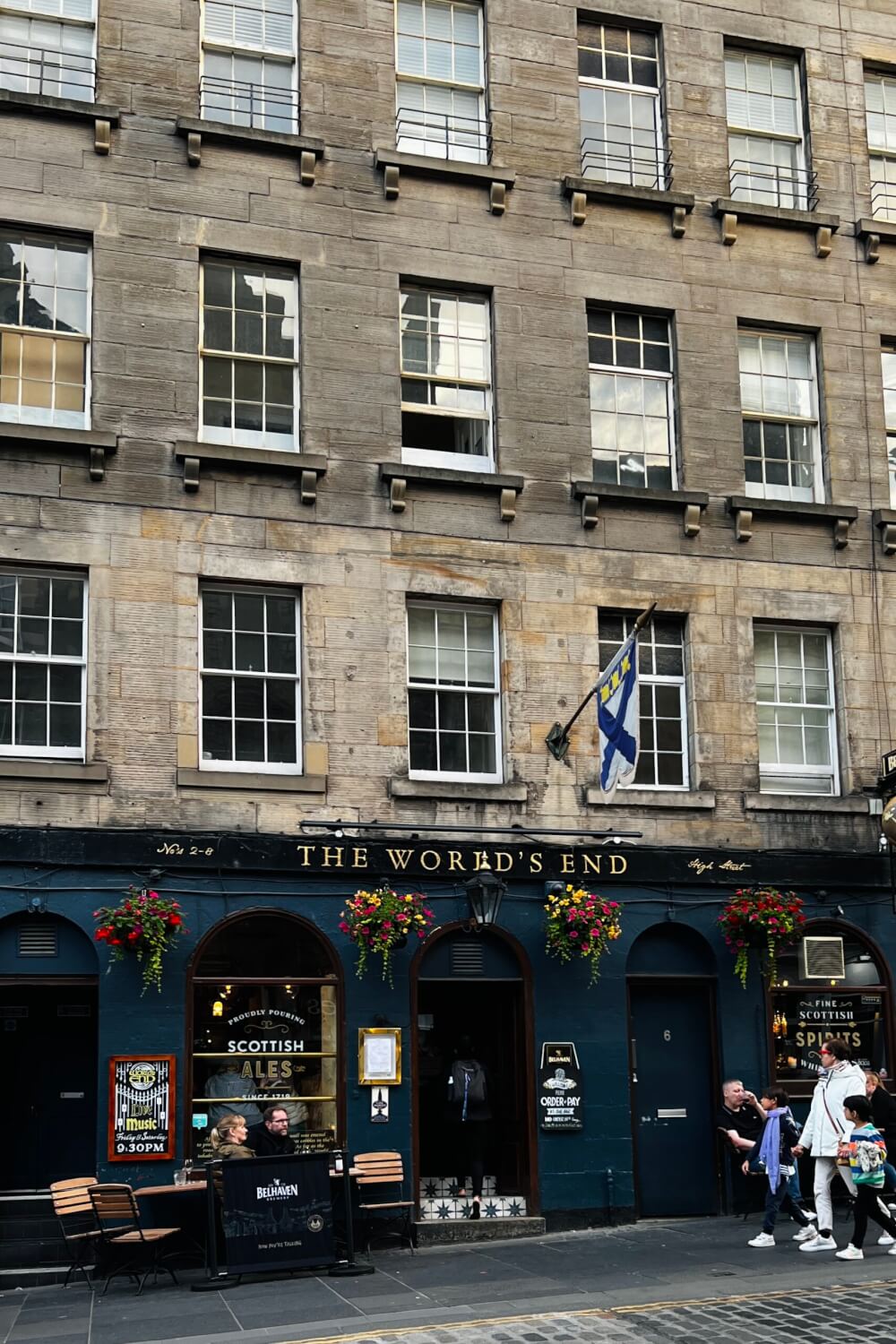
14. Try whisky, but know the ground rules
Now another important tip when in Scotland is to try whisky.
… I mean duh. Of course you will! In the name of culture.
I do have to share some ground rules I learned the hard way though, so remember the following:
- Call it a whisky not a scotch
- Be sure to order it as a dram of whiskey, not a shot
- Remember whisky should be sipped slowly and savoured, not just quickly knocked back
And if you’re overwhelmed with the selection which is inevitable, a good trick is to just ask the bartender for a recommendation… BUT do give them some general guidance on your preferences otherwise it’s as ridiculous a question as asking “can you recommend me a food?”
Generally, some taste profiles that go into whisky include smokiness, fruitiness, nuttiness, peatiness and how floral it is. So be prepared with your preferences so they can guide you to the right recommendation.
NOTE: It goes without saying, only ask for recommendations when it’s not super busy. If you’re at a pub and they’re up to their eyeballs in orders, that’s generally not the time to ask for their whisky insights.
Lastly, this is unlikely to come up as a tourist, but be mindful that whisky in Scotland is spelled without the e. This is a mistake I made a lot! Whiskey with an e is more often used to describe Irish whiskey and we don’t talk about her here.

15. Book a whisky experience if you can
Now if you’re into whisky or new to it, one fun Scotland tip is touring a distillery or doing a whisky experience at some point.
Whisky is a drink that’s easier to appreciate when you know more about it, which is why I’d recommend booking some kind of tour or experience that teaches you about whisky and how to appreciate it, rather than just a standard tasting.
There’s over 100 whisky distilleries to choose from, many of which offer tours. It’s shamelessly touristy but one of the best things to do in Edinburgh (IMO) is the new Johnnie Walker experience in Edinburgh . I thought it was SO much fun, and super informative for a newbie.
Just be warned: you will definitely walk out of there a brainwashed Johnnie Walker convert. I definitely hoarded a few bottles at Duty-Free…

That said, be sure to…
16. Try gin and other tipples in Scotland too
I was really pleasantly surprised during my month in Scotland to see that gin is a pretty big deal, with 70% of the UK’s gin produced here.
The craft beer scene is also growing rapidly, so be sure to diversify your booze portfolio beyond just whisky.
… All in the name of culture, of course.

17. Be sure to try a glug of IRN BRU
One of my favourite fun facts is that Scotland is one of the very few places in the world where Coca Cola isn’t the best selling soft drink. The unlikely national hero? IRN BRU – a bright orange soda with a flavour that’s really hard to describe…
It is considered one of THE most quintessentially Scottish things though so be sure to try it while you’re in Scotland!
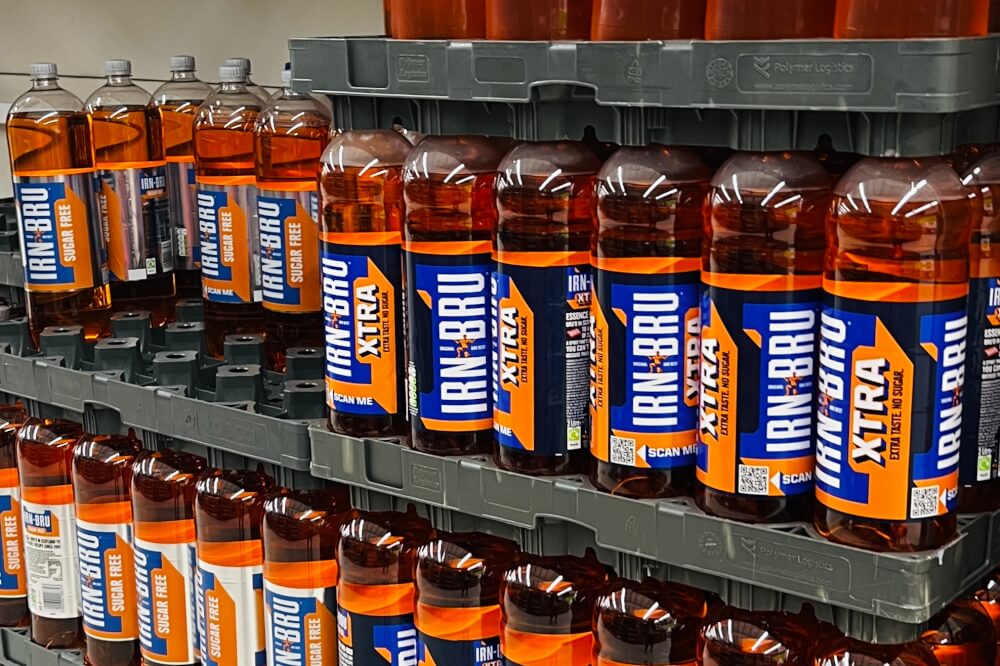
18. Take advantage of meal deals for budget-friendly feeds
Now, dining out all the time in Scotland can quickly add up to budget-destroying levels, so a good solution if you’re just on the go is heading to a supermarket to get some picnic foods, or in a pinch, trying an almighty Meal Deal.
Meal Deals are a staple of UK chains that allows you to grab a main, a snack and a drink for less than £5. Some chains now require you to sign up for a free loyalty card (eg Tesco Clubcard) to unlock the best deals though, so be mindful of that and do it in advance if you think the savings would be worth it.
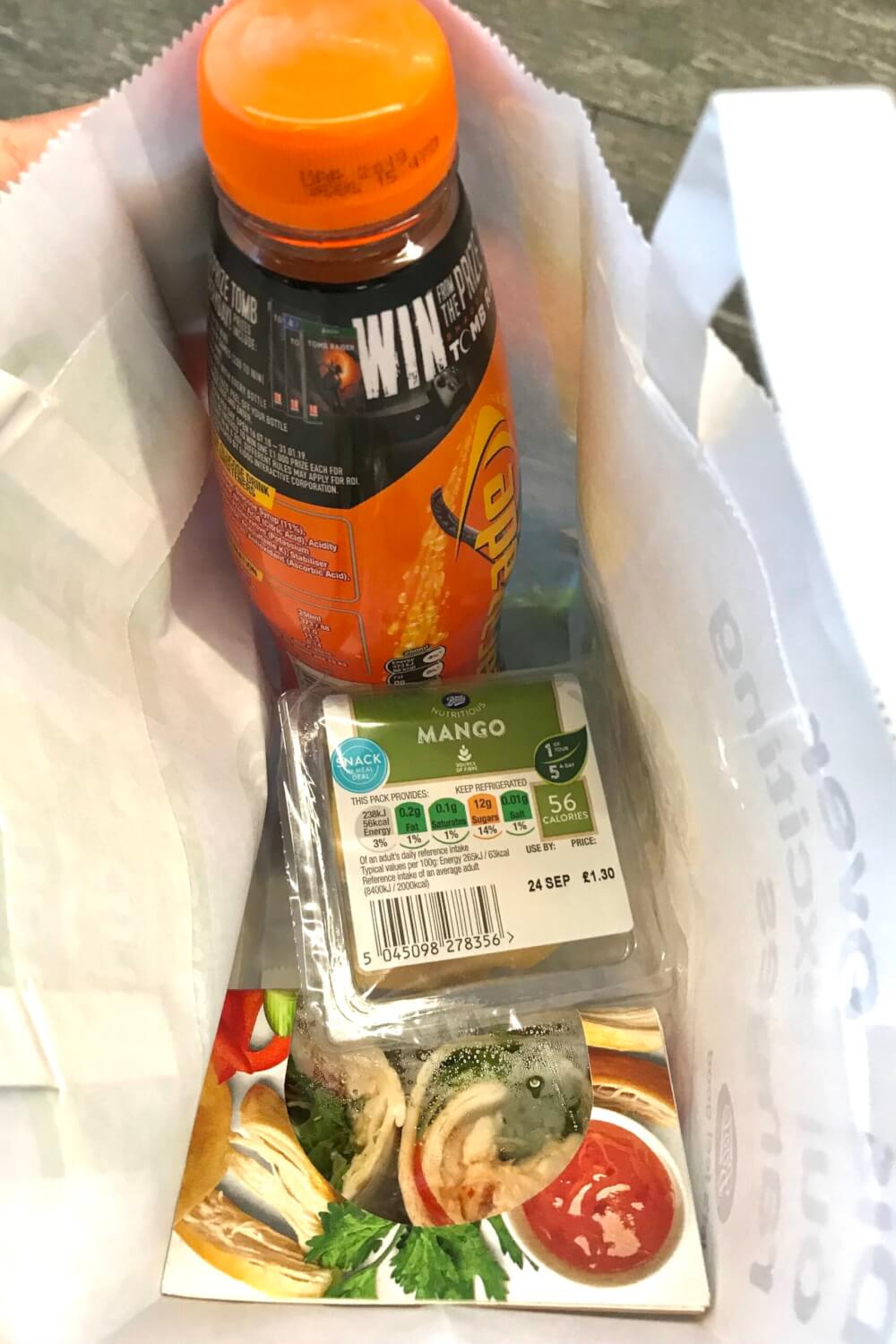
19. Beware of seagulls
Random but wildly important Scotland tip: if you find yourself dining outdoors at any point, DO be mindful that sneaky seagulls may be lurking nearby, ready to snap your food away in seconds.
… You’ve been warned.
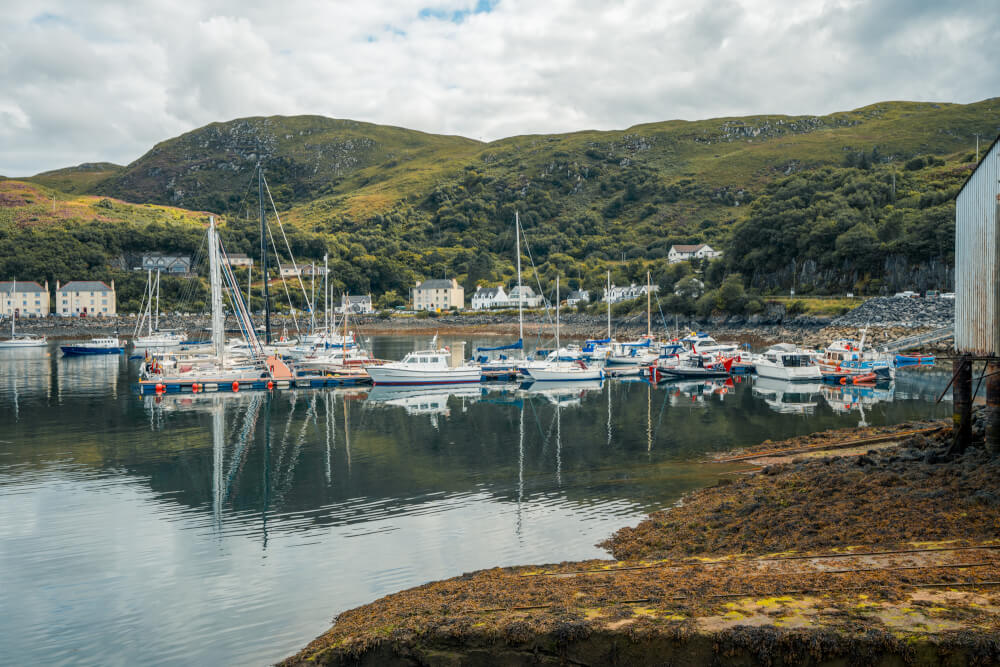
20. Don’t assume that all of Scotland is kilts and bagpipes
Now, moving over to Scotland culture & etiquette tips, I want to remind you that Scotland is more than just its stereotypes.
… Which can be hard to believe, because in touristy areas, they really do ham things up for tourists, so you’ll see a ton of tartan, endless kilts, and plenty of bagpipes, but Scotland is a modern country with plenty to offer beyond its more traditional draws, so be sure to experience that side of Scotland too in addition to the fun touristy stuff.
NOTE: Please also refrain from asking weird questions based on stereotypes. I overheard a tourist ask a man if he wears anything under his kilt. Whether a misguided tourist question or bad flirting, I’d advise against it.

21. Be prepared to hear some Scots & Gaelic
Language-wise when travelling around Scotland, you will be 100% fine with English, but do know that depending on where you are, you may encounter Scots or Gaelic (which you’ll see a lot on road signs).
Now take note that while they’re spelled the same, Scottish Gaelic (pronounced Gah-lick) is not the same as Irish Gaelic (pronounced Gay-lick). They both descended from the same source but are now two very distinct languages.
And while as a tourist, you won’t need to learn Scots or Gaelic to get by, there are some pieces of vocabulary used in place names so it’s worth knowing them.
For instance…
- Loch = lake
- Ben = peaks or mountains
- Glen = valleys
- Alba = the Gaelic name for Scotland, seen quite a lot, like in the localized channels for BBC, which is known in Scotland as BBC Alba
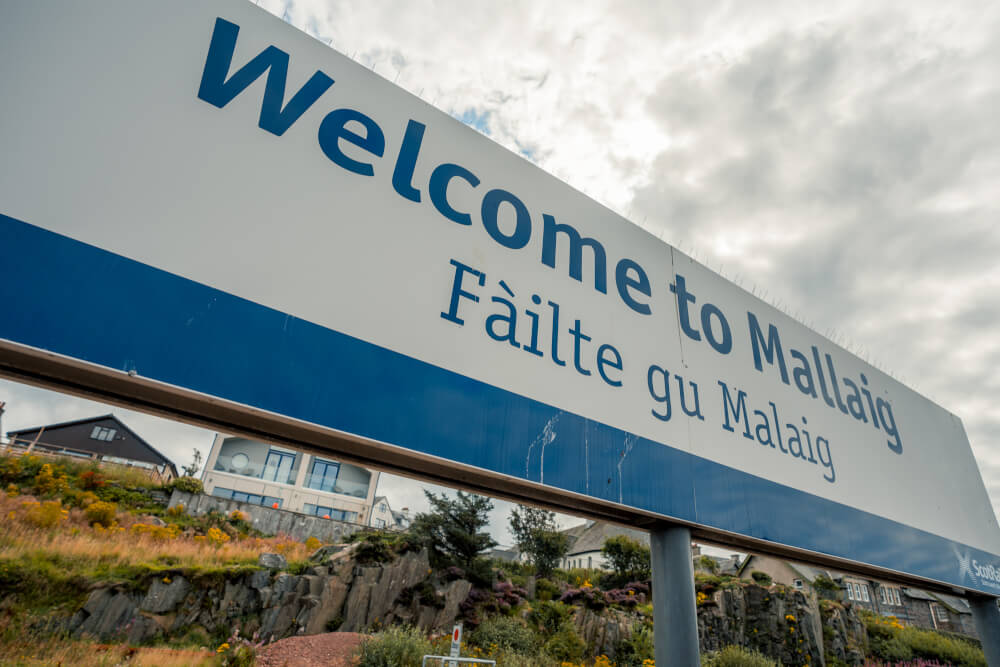
22. Know what it means to “bag a Munro”
Another piece of vocabulary to know is Munro, which refers to mountains in Scotland over 3000 ft. This doesn’t come from Scots or Gaelic though, they’re named for Sir Hugh Munro, who famously published a list of Scotland’s highest mountains.
Hardcore people today make a hobby out of “bagging Munros” which means reaching the top of these mega-mountains. There’s 282 of them, and the current record is held by a badass woman known as Jamie Aarons , who bagged all 282 Munros in 31 days.
31. DAYS. That’s an average of over 9 Munros a day.
Meanwhile, here’s me:

Now if you’re not up for bagging Munros, a more feasible challenge might simply be to…
23. Learn to pronounce Scottish place names somewhat correctly
One of the most common tourist mistakes you encounter in Scotland is first time visitors pronouncing words/names wrong, which is fair because not all names are pronounced like how they’re spelled in English.
So, here are some common ones to take note of:
- Edinburgh is pronounced Ed-in-bruh, not Eden-Borrow, Edin-borrow, or Edin-berg
- Glasgow is pronounced Glaz-go, not not Glass-G’ow
- Culross is pronounced Coo-Riss, not Cull-Ross
… and many, many more.
The key is to listen out for how locals are pronouncing it whether that be your taxi driver, your guide or even the automated announcements the train station.
That said, there’s obviously slight differences depending on accents, and Scottish people tend to be really nice and forgiving so don’t stress too much.
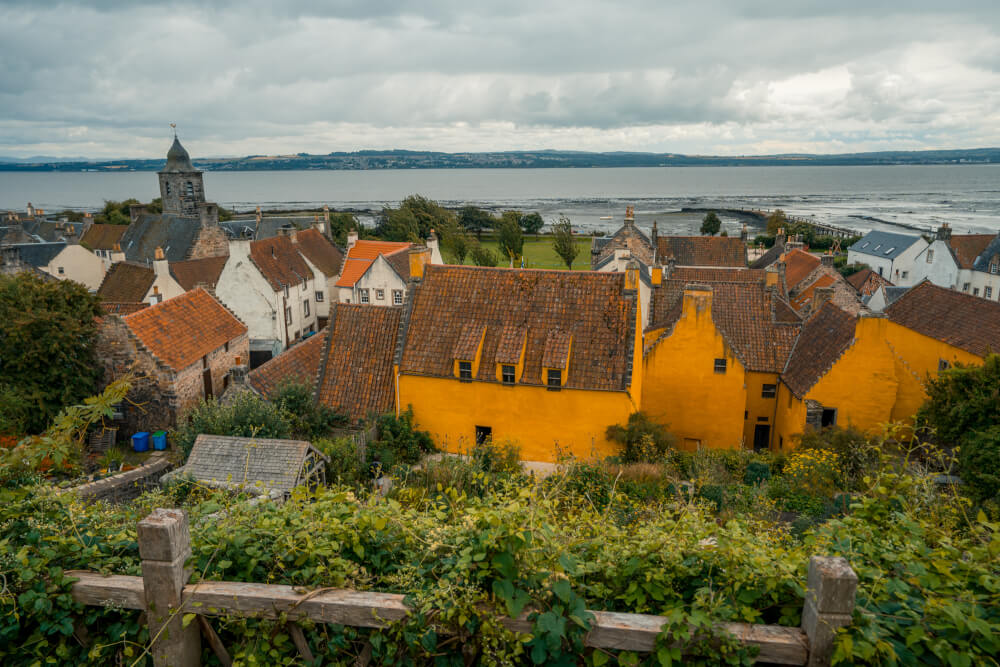
24. Beware of sightseeing passes
Unfortunately, paid attractions in Scotland can be quite pricey, and while sightseeing passes (e.g. ones where you pay a set fee for many different attractions at once) do exist, many of them aren’t worth it unless you’ll be visiting a wide range of sights across the country.
Some common ones include…
- City-specific passes like the Edinburgh City Pass
- Historic Scotland
- National Trust for Scotland
- The Explorer Pass
So, before blindly purchasing one of these passes, I would make sure to first total up the cost of the attractions you actually want to see, then comparing it to the pass cost. Often you’ll find it’s not worth it unless you’re staying for a long time and visiting many attractions during your visit.
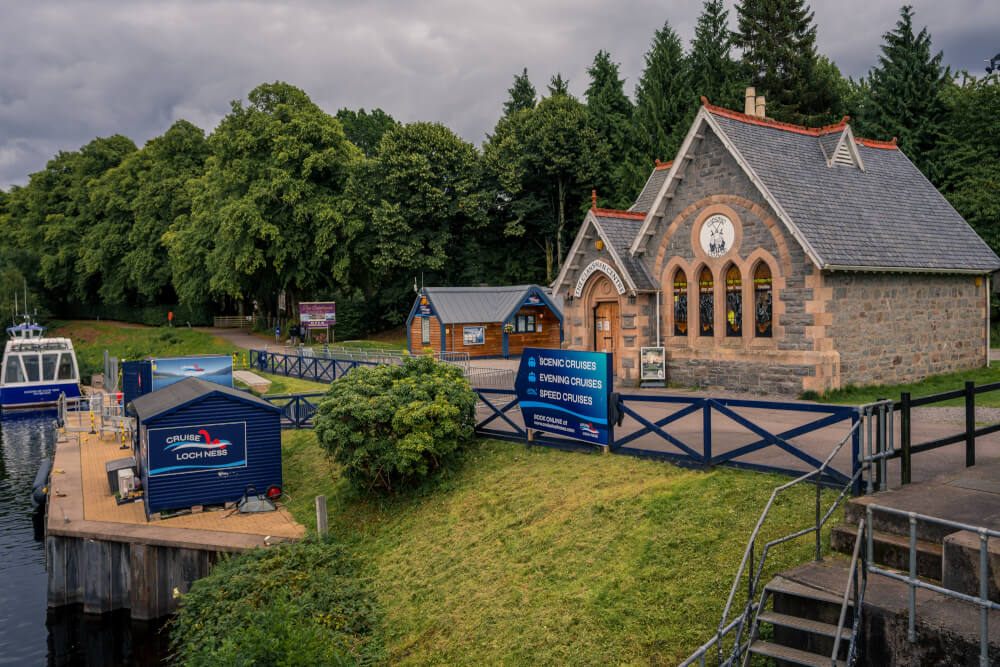
25. Take advantage of all the free attractions
One of my favourite things about Scotland is just how many free museums and attractions there are to visit.
In pretty much every destination, you’ll find free things to do, so before you spend all your money on attraction tickets, be sure to search up free things to do in your destination of choice. Odds are, you’ll find plenty!

26. Get familiar with Scottish accents before your trip
Now, another tricky thing for first time visitors in Scotland is if you’re not used to it, understanding the Scottish accent may be a challenge, especially once you leave big cities and start venturing farther out.
But a fun Scotland tip for getting used to the accent is simply watching movies and TV shows set in Scotland. This will also help you adjust to some vocabulary differences, as well as just get you excited for your trip.
Some recommendations include (obviously) Outlander if you’re into that kind of show, or Mary Queen of Scots and Outlaw King for some handy historical context and beautiful backdrops.
PS: This might be a good time to mention that Braveheart is wildly inaccurate but entertaining nonetheless.
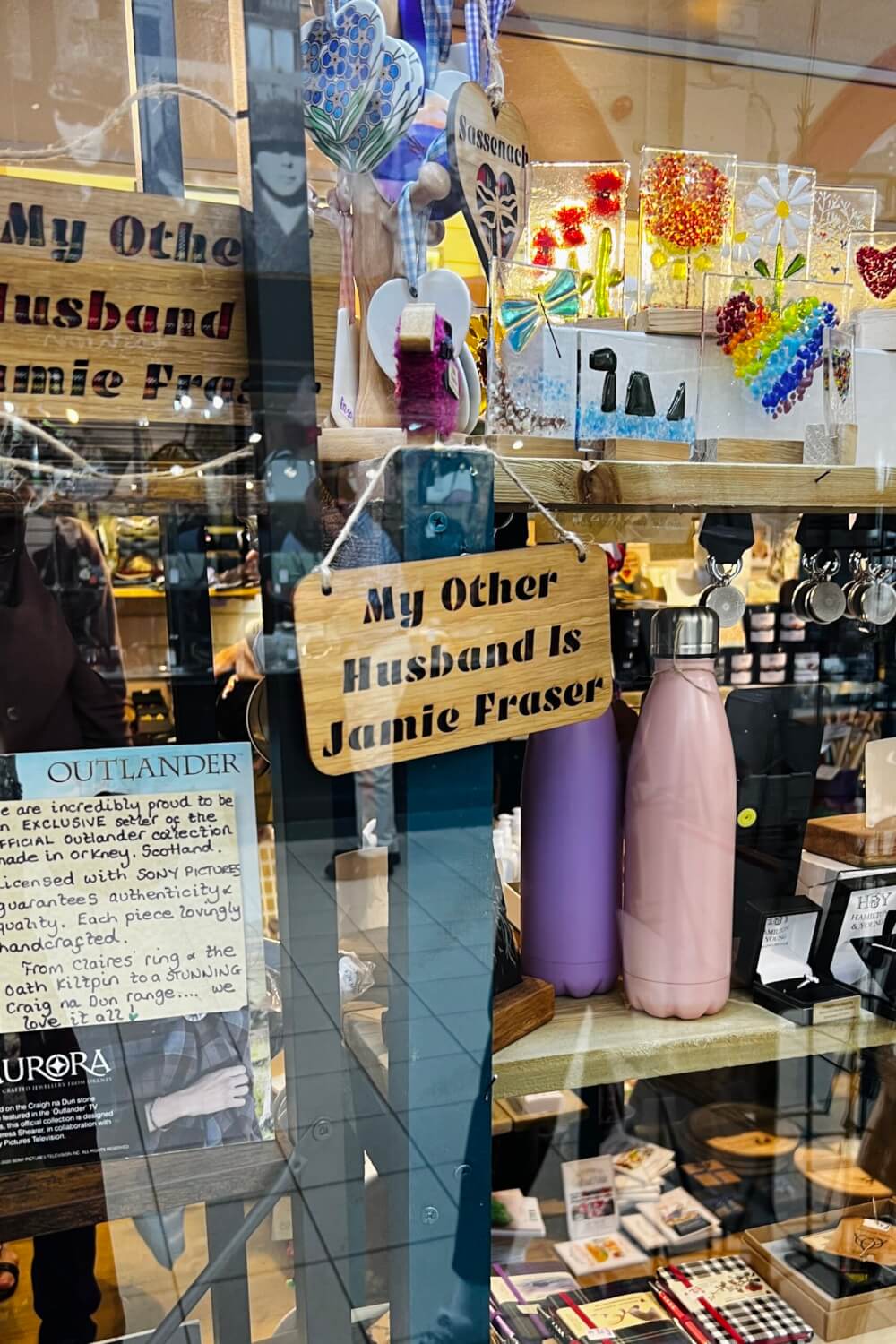
27. Carry a bit of cash, especially coins
While paid toilets aren’t a universal thing in Scotland like in other countries (e.g. Germany ), apparently 18 councils across the country do charge a small fee for using the toilet (usually 30p or less).
I noticed this when I was in Inverness and the surrounding area, with many public toilets (even in train and bus stations) charging a small amount like 10 or 20p for the facilities, so it’s not enough to just bring some cash, coins are a must.

28. Scottish money is different, but English bills are welcome too
Plus beware that while Scotland does use the pound just like the rest of the UK, there are specific Scottish bills/notes that are unique.
This shouldn’t be too big of a deal since English pounds are accepted everywhere as well, and technically speaking these Scottish bills are legal tender throughout the UK, but do withdraw your cash sparingly as sometimes places elsewhere in the UK can be a bit funny about accepting Scottish banknotes.

29. Tip around 10% for good service
Now in terms of tipping in Scotland, tips aren’t mandatory in all settings but usually when it comes to sit-down table service, 10% ish is common for good service.
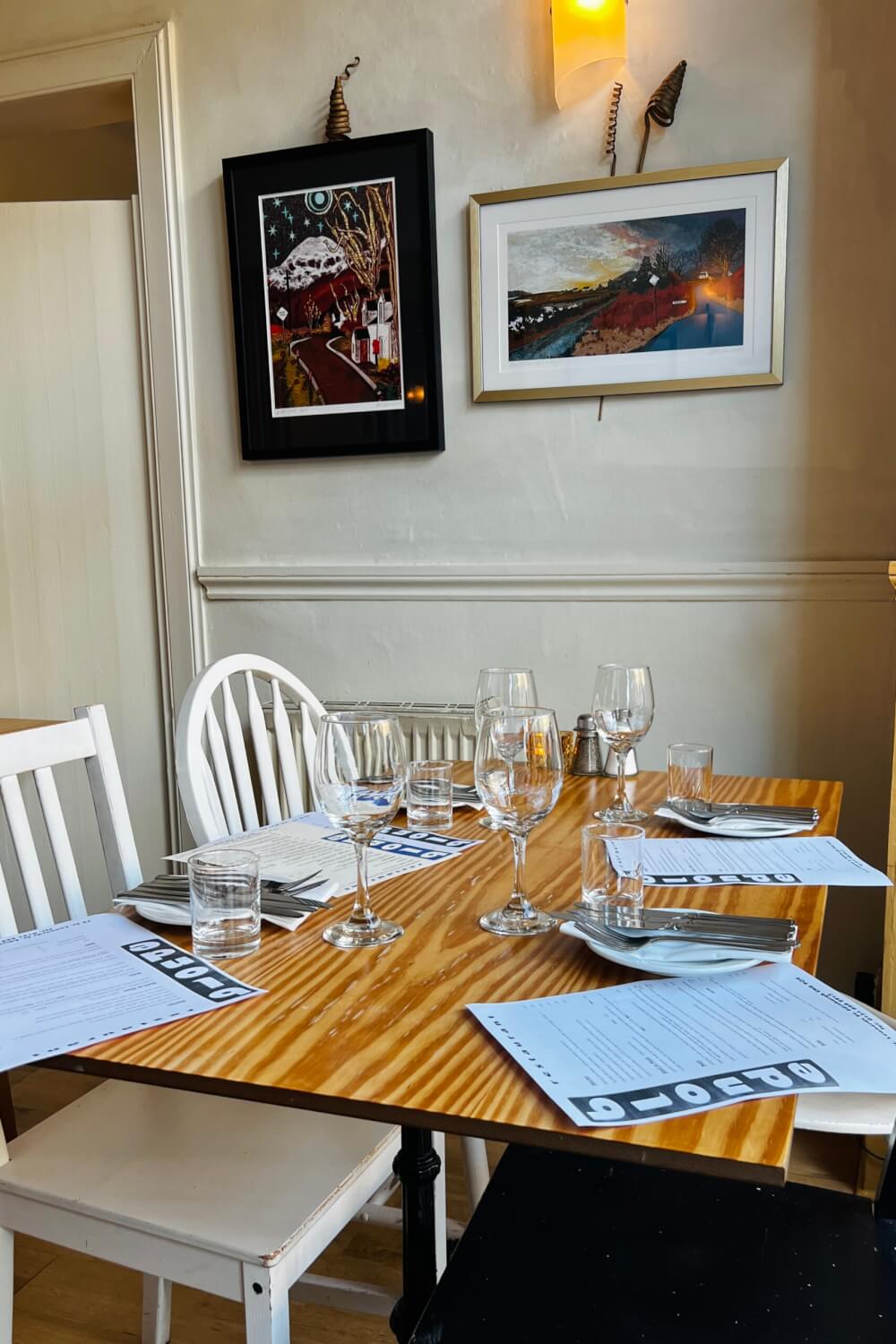
30. Don’t stop in the middle of the sidewalk (AKA pavement) for photos
Having experienced this too many times during my month in Edinburgh, I now completely understand the local rage against it.
Scotland is beautiful and you will be compelled to take photos every three seconds, but before you do so, make sure you pull over to the side and not block anyone’s way.
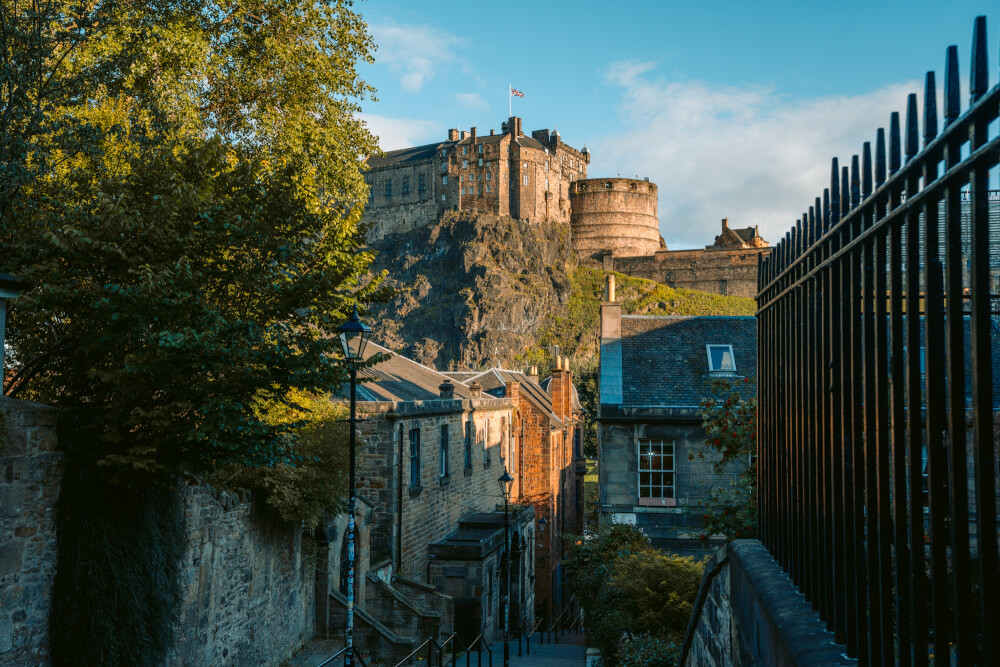
31. Be prepared for all kinds of weather
Scottish weather is notoriously gloomy and random. So even if you are coming in the summer, don’t expect summer weather all the time…
Instead, be prepared for all kinds of potential weather at all times by packing layers that are versatile for different conditions.
I would definitely prioritize a good waterproof or windproof jacket over an umbrella because with Scottish rain comes Scottish wind which makes many umbrellas quite useless.

32. Prioritize comfortable walking shoes
And, unless you have a specific event you know you’ll be going to, no need to bring heels or fancy footwear. Comfort is key!
Which is how I ended up with silly outfits like this:

33. Beware of midges and ticks
If you plan to do any hiking in Scotland, be sure to prepare against the notorious Scottish midges and ticks. Bring insect repellant and lots of it!

34. Make sure you go to a place with some live music
There’s honestly no better way to finish off a day of sightseeing in Scotland than with a cold beer and live music. Be sure to add this into your itinerary at some point! It’s so much fun.

35. Avoid cheap souvenir shops and outfits in busy tourist areas
Lastly, a few Scotland tips for buying souvenirs: the first one being to avoid the tacky souvenir shops you see in busy touristy areas.
Sadly, these shops aren’t necessarily selling you the best quality stuff and if you’re looking for wearable souvenirs like a Tartan scarf that will actually last, then getting one from a pricier but more reputable brand might be a good idea. A lot of the souvenir shops sell polyester replicas which aren’t the best quality.
The same idea goes for other souvenir items – finding an independent shop stocked with local makers might mean more unique and better quality gifts to bring home.

36. Avoid buying the cheap souvenir shop tartan berets & kilts
On a similar note, I would also personally avoid buying & wearing cheap souvenir shop accessories, like tartan berets, especially the ones with red hair attached to them, just because people in Scotland really don’t wear those in their day to day lives and they look a bit silly.
The same applies for buying souvenir shop kilts. I honestly can’t imagine a scenario where it would make sense for a tourist to buy and wear a kilt while they’re just out exploring… especially because they don’t tend to be day to day attire for Scottish people anyway.
At the end of the day though, wear whatever makes you happy!

37. Be sure to leave space in your luggage
Last but not least, remember to pack light when you come to Scotland so you have room for goodies to bring home!
There are many excellent potential souvenirs in Scotland, but they tend to be bulkier items like wooly goods, so make sure you have the space for it.
PRO TIP: You can always pack a second bag (or nest a small suitcase within a larger one) so you only have to check a second bag on the way home.
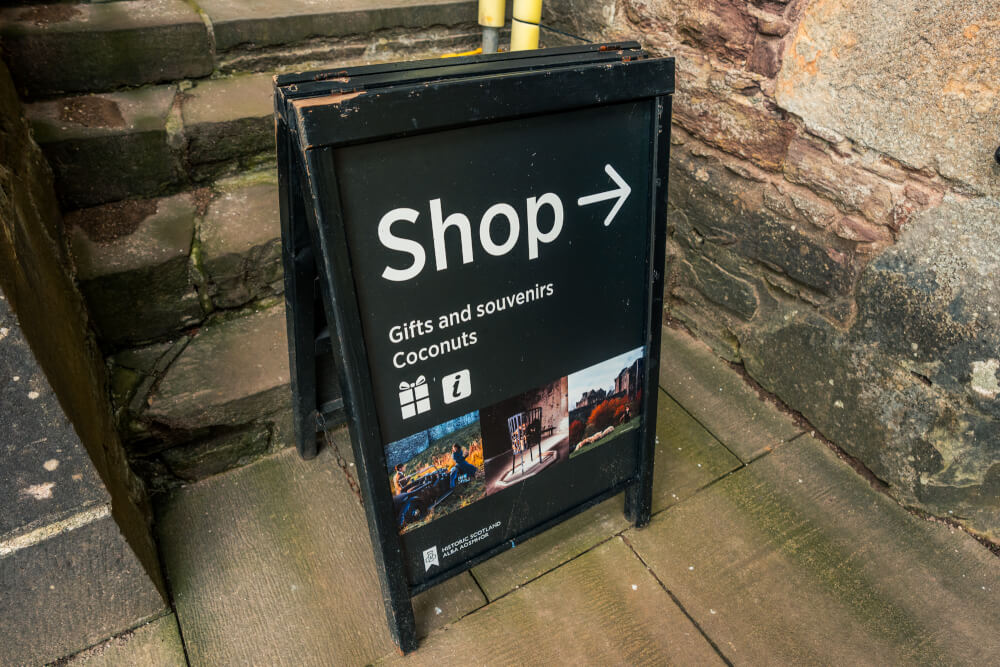
Did I Forget Any of Your Favourite Scottish Travel Tips?
Let me know in the comments! Safe and happy travels 🙂
My Go-To Travel Favourites:
🧳 Eagle Creek: My favourite packing cubes
💳 Wise: For FREE travel friendly credit cards
🍯 Airalo: My go-to eSIM
🏨 Booking.com: For searching hotels
📷 Sony A7IV: My (amazing) camera
✈️ Google Flights : For finding flight deals
🌎 WorldNomads: For travel insurance
🎉 GetYourGuide: For booking activities
2 thoughts on “37 Scotland Travel Tips for First Timers & Must Knows Before You Go”
Christina. A good fair and accurate assessment of Scotland.
Allan( a Scot from Kirkcaldy)
Thanks so much, Allan! 🙂
Leave a Comment Cancel reply
By using this form you agree with the storage and handling of your data by this website. *
- Search Please fill out this field.
- Manage Your Subscription
- Give a Gift Subscription
- Newsletters
- Sweepstakes
- Destinations
How to Plan the Perfect Scotland Vacation
From fairy-tale castles to charming small towns, the Scottish countryside is every bit as spectacular as you've heard.
Best Times to Go to Scotland
Best things to do in scotland.
- Getting to the Scottish Highlands
Where to Stay in Scotland
With its stately castles , glass-like lochs, and voluptuous glens, Scotland has always been a showstopper. The country's magic extends from its quaint small towns to the snow-capped peaks of its romantic, rugged Highlands to its dynamic modern cities like Glasgow and Edinburgh. It's home to some of the best national parks in the U.K. and more than 900 offshore islands with extraordinary wildlife like regal red stags, majestic golden eagles, humpback whales, and massive salmon (not to mention the fabled inhabitant of Loch Ness, too).
The raw, poetic beauty of this ancient land — formerly known as Caledonia — is difficult to overstate. If you're hoping to head to the U.K.'s ravishing northern nation, read on for our guide to planning the perfect Scotland vacation.
The bad news is that, like the rest of the U.K., Scotland's weather is far from reliable, even at the height of summer. But as long as you're prepared to accept that and pack a raincoat for the odd shower or two, then you'll be fine from May to September. The smart money is on visiting in June and the first two weeks of July, when Scotland basks in seemingly endless summer evenings (the sun doesn't set until 11 p.m. in some parts of the Highlands) and the British school holidays have not yet begun, so prices remain low.
For winter travelers, Scotland has the U.K.'s best ski resort at Cairngorm Mountain , while the capital, Edinburgh, hosts one of the world's biggest New Year's Eve parties, Hogmanay .
If you like the great outdoors, you'll love Scotland. It's an ideal place for hiking, biking, and generally embracing the wildly beautiful landscape. You can summit magnificent Ben Nevis in a day (the tallest mountain in the U.K., at 4,413 feet), take a ferry out to explore the Hebrides archipelago and its stunning white-sand beaches, tour scores of castles, including the Queen's favorite holiday home, Balmoral (open to the public every April through July), and dive into a quirky food scene encompassing dishes like haggis (an offal and oatmeal combo, which tastes significantly better than it sounds), deep-fried mars bars, and juicy scallops, langoustines, and mussels.
Scotland is also a mecca for both golfers ( St. Andrews Old Course is the headline act) and whisky lovers , with some of the world's best distilleries available to tour, including Johnnie Walker on Edinburgh's lively Princes Street, Glenlivet near pretty Ballindalloch, and the legendary Macallan on a sprawling country estate in nearby Aberlour.
If you enjoy driving, you'll find some of the U.K.'s emptiest, most dramatic roads here, too, (as driven by James Bond in "Skyfall"), including the latest official addition, the North Coast 500 , an action-packed 500-mile route (516 to be exact) featuring mind-boggling coastal scenery, jaw-dropping beaches, rolling hillside, quaint fishing villages, and multiple hidden gems.
And if you prefer your challenges on foot, check out the magnificent West Highland Way , the country's best-loved long-distance walking route. Snaking its way from Milngavie to Fort William, it covers some of Scotland's finest scenery over 96 miles and is normally completed from south to north.
Meanwhile, history buffs will also be agog on any visit to Scotland, thanks to its 3,000-plus castles ( Castle Sween in Argyll is the oldest, dating back to the 1100s), as well as plenty to check out in the winding wynds (narrow lanes) and twisted staircases of Edinburgh's enchanting Old Town. ( Edinburgh Castle , towering over the city, is arguably the grandest in the country, too.)
If you can, make time to visit Perth, the former Scottish capital where kings were crowned on the Stone of Destiny and infamous Glen Coe, a beautiful valley full of waterfalls and deer, also known for the brutal clan massacre of 1692 (which inspired the Red Wedding in George R. R. Martin's Game of Thrones ).
Where are the Scottish Highlands — and what is the best way to get there?
Jess Macdonald/Travel + Leisure
The clue is in its name: the Highlands are the mountainous upper half of Scotland, covering 10,000 square miles of picturesque scenery. The region's lively capital is Inverness , which sits centrally and is a superb base from which to explore, while other highlights include mysterious, misty Loch Ness, majestic Cairngorms National Park , and idyllic Isle of Skye , which has been connected to the mainland via a road bridge since 1995.
The easiest way to reach the Highlands is to fly into Inverness Airport from London or elsewhere in the U.K., or rent a car and drive from Glasgow or Edinburgh. However, the way to arrive in style is on the Caledonian Sleeper train from London Euston, a chugging time machine where you can fall asleep to the sounds of black cabs and bustle of the British capital and wake up among the red deer and magical glens of the Highlands. Regularly nominated as one of the world's best train journeys , the scenery gets truly spectacular after Fort William, as the route skirts a dramatic chain of lochs before descending into lush glens and crossing the Glenfinnan Viaduct made famous by the Harry Potter films. For the ultimate Hogwarts experience, steam locomotives work this route during the summer months, so check in advance for these special departures.
The major cities have an abundance of hotels for every budget, headlined by Glasgow's Kimpton Blythswood Square , a boutique property in the former headquarters of the Royal Scottish Automobile Club, and The Dunstane Houses in Edinburgh, a pair of beautifully renovated 19th-century townhouses.
Scotland arguably does traditional country house hotels and rustic lodges better than anywhere else in the world, with Fife Arms in Braemar and Gleneagles in Perthshire being particular treats (the latter, nicknamed the "Glorious Playground" boasts three championship golf courses, its own dedicated train station, and the only restaurant in the country with two Michelin stars).
Scotland is, of course, peppered with castles, and many have been converted into hotels and B&Bs in recent years, with some of the better fortified accommodation options including Glenapp Castle in Ayrshire, Inverlochy Castle in Fort William, Atholl Palace Hotel in Pitlochry, and Stonefield Castle Hotel on Loch Fyne.
Wherever you stay, you'll get a warm welcome — not to mention a hot bowl of Scottish porridge or a plate of bacon, eggs, and haggis to start the day in a spectacularly scenic country.
Related Articles

19 Essential Scotland Travel Tips to Read Before Your First Visit
If you are a frequent traveler and an English speaker, visiting Scotland is pretty easy (although driving in Scotland can still be a little hair-raising.) However, if you are a bit nervous about your trip and want to make sure you have all your ducks in a row, be sure to read these Scotland travel tips before you go!
I have visited Scotland twice, once on a solo trip to Edinburgh and another as a Scotland road trip with friends (thank you Keryn for being an awesome driver!) and I’ve learned and experienced so much that I want to share with anyone planning their first trip to Scotland.
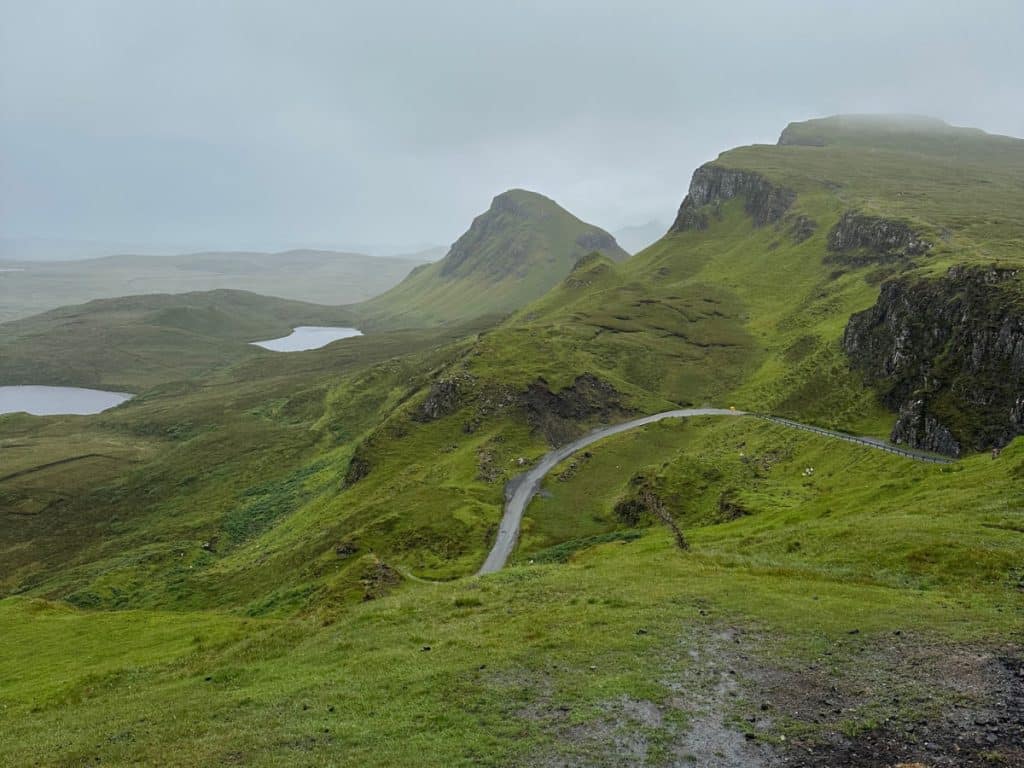
My Top Scotland Travel Tips
Note: This post contains affiliate links. If you click a link and make a purchase, I may receive a small commission at no cost to you.
Language
English is the official language in the United Kingdom and the dominant language in Scotland. There are still those that speak Scots in the Lowlands or Scottish Gaelic in the Highlands, but getting around Scotland is no problem for English speakers — although you may need to listen closely to understand those with a heavy Scottish accent.
As part of the United Kingdom, Scotland uses the British Pound (£). Scotland actually has its own pound notes but you can use English bills as well.
Almost all restaurants, shops, and parking machines take chip-enabled credit cards and/or digital payments such as Apple Pay. However, you will need coins for some parking machines and coins or small bills for tips or small purchases. I’d recommend either requesting small bills from your local bank before you leave or visiting an ATM when you arrive.
If you are wondering how much money you need, be sure to read my post on how much a Scotland trip costs .
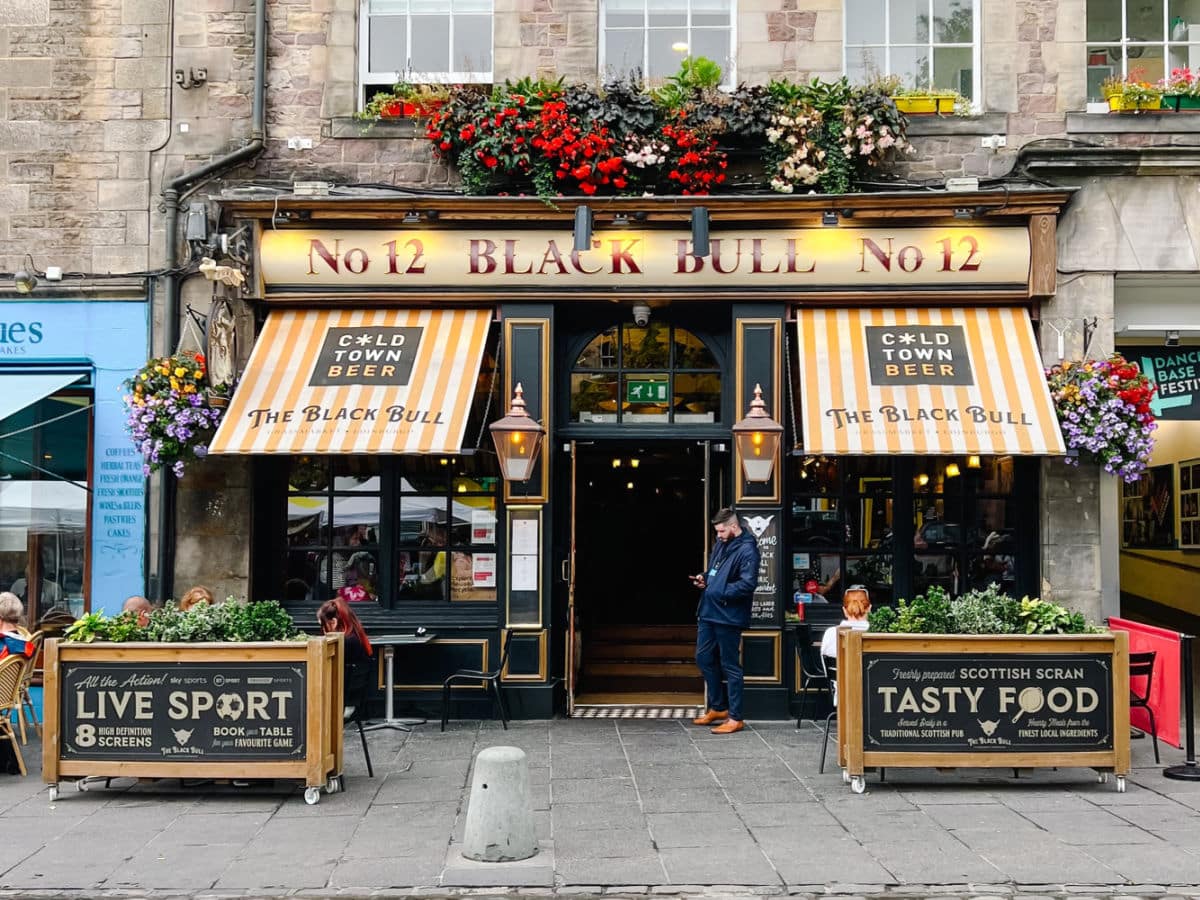
Tipping is not the same as in the U.S.. In many instances, service is included at restaurants. If you are paying by card and want to leave a tip, you need to let the server know to add it before you tap your card. For sit-down restaurants, a 10-15 percent gratuity is appropriate but not necessary. At casual cafes, you can leave a few coins or round up your bill.
Scotland uses 230 voltage and you will need a three-pronged adapter with a G-type plug, which is different from most of Europe. If your appliance or device has a dual voltage power supply (which you can usually check by looking on the label or manual), you only need a plug adapter. Dual voltage devices can automatically switch between 120V and 230V.
However, if your device does not have a dual voltage power supply, you will need a voltage converter. It’s important to choose a voltage converter that is powerful enough for your device. The wattage of your device will be listed on the label.
Car Rentals
If you plan on renting a car, be sure to book months or weeks in advance for better pricing and availability, especially if you want a car with an automatic transmission. Try to book the smallest car that will fit your luggage and one that has a back up camera. I’d also suggest getting full insurance. I typically use Auto Europe to compare rates from different vendors. International driving permits are NOT required in Scotland. You can drive on your domestic license for up to one year.
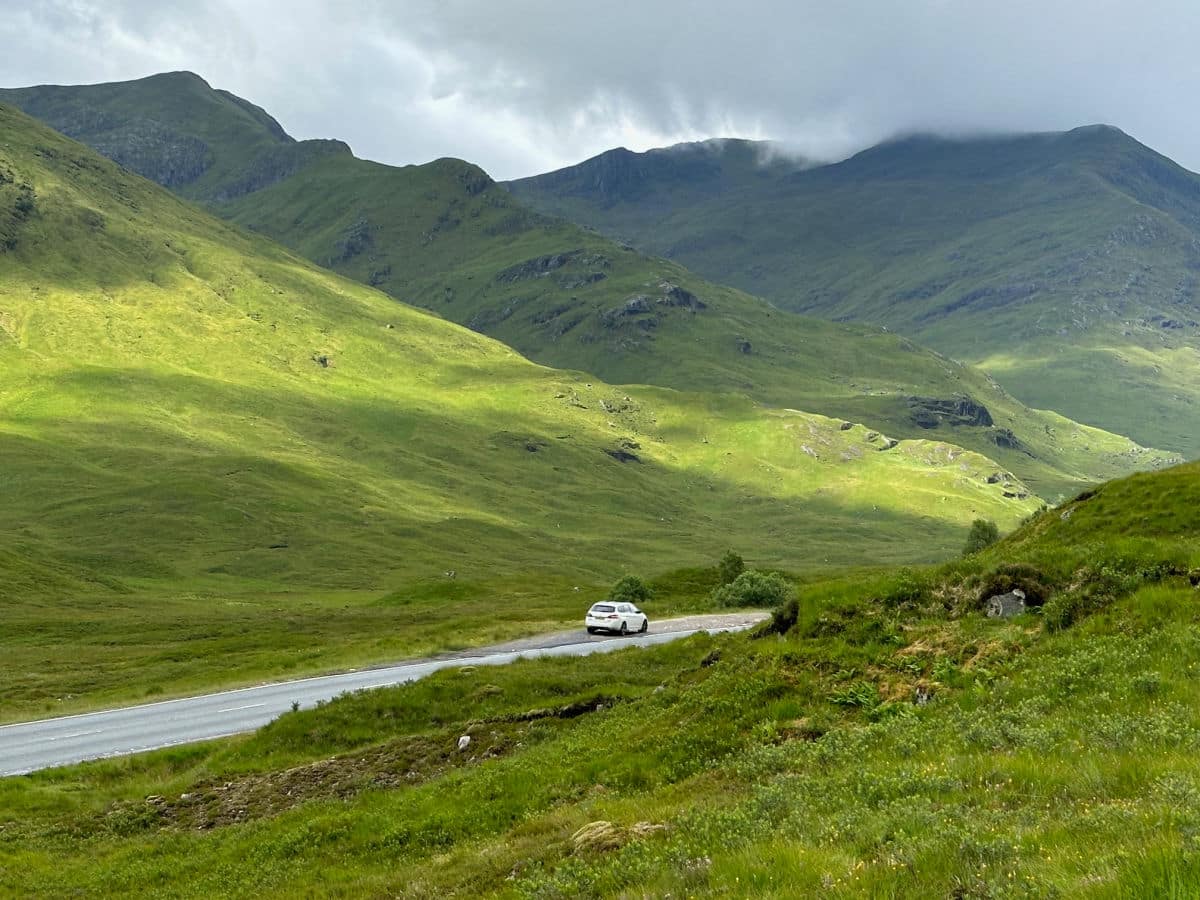
Driving in Scotland
In the United Kingdom, including Scotland, cars drive on the left-hand side of the road. If you are not familiar with driving on the left, it takes close concentration and focus, especially when navigating the country’s many rotaries. Remember to “stay left, look right.” Traffic already on the roundabout has priority, so give way to vehicles approaching from your right. Enter when there’s a safe gap, and indicate your intended exit as you approach it.
Outside of the highways, many interior roads in the Highlands or islands are single lane roads. When you encounter a car coming the other way, one of you needs to pull into the closest pull out designed for passing. This may require backing up to the closest pull out.
Remember to keep an eye out for wildlife, especially sheep, that tend to wander into the roads in the backcountry.
Be sure to follow all the local laws, including speed limits to avoid fines. Scotland has strict drink-driving laws with a lower alcohol limit than many other countries so don’t risk it.
You will need to pay for parking at most car parks for attractions and towns, including trailheads for popular hikes or natural attractions. I’d recommend taking a photo of your license plate as often you will need to enter this into the parking meter machine when paying for parking. In other instances, you will need to “pay and display”, which means pay for your parking in advance based on how much time you think you will need and then place the receipt in your windshield window.
Most parking meters take credit cards but there are some that will only accept coins so it makes sense to carry coins with you or keep some in the car. Just don’t try to use one receipt from one parking area at another, even if you are still within the original time window. Each receipt is marked with a lot number and they will check (trust me, I learned the hard way and parking tickets are expensive!)
When you are in the Highlands or the Islands, petrol stations are few and far between so be sure to fuel up when you can and don’t push it too low.
Public Toilets
You can typically find public toilets at popular tourist attractions (even natural attractions such as the Fairy Pools.) However, some of these are pay toilets. This is another reason to carry some coins, although many of these are also tap and go using digital payments. But just because these are paid, doesn’t mean they are well-supplied or exceptionally clean. So carry some extra tissue and sanitizer just in case.
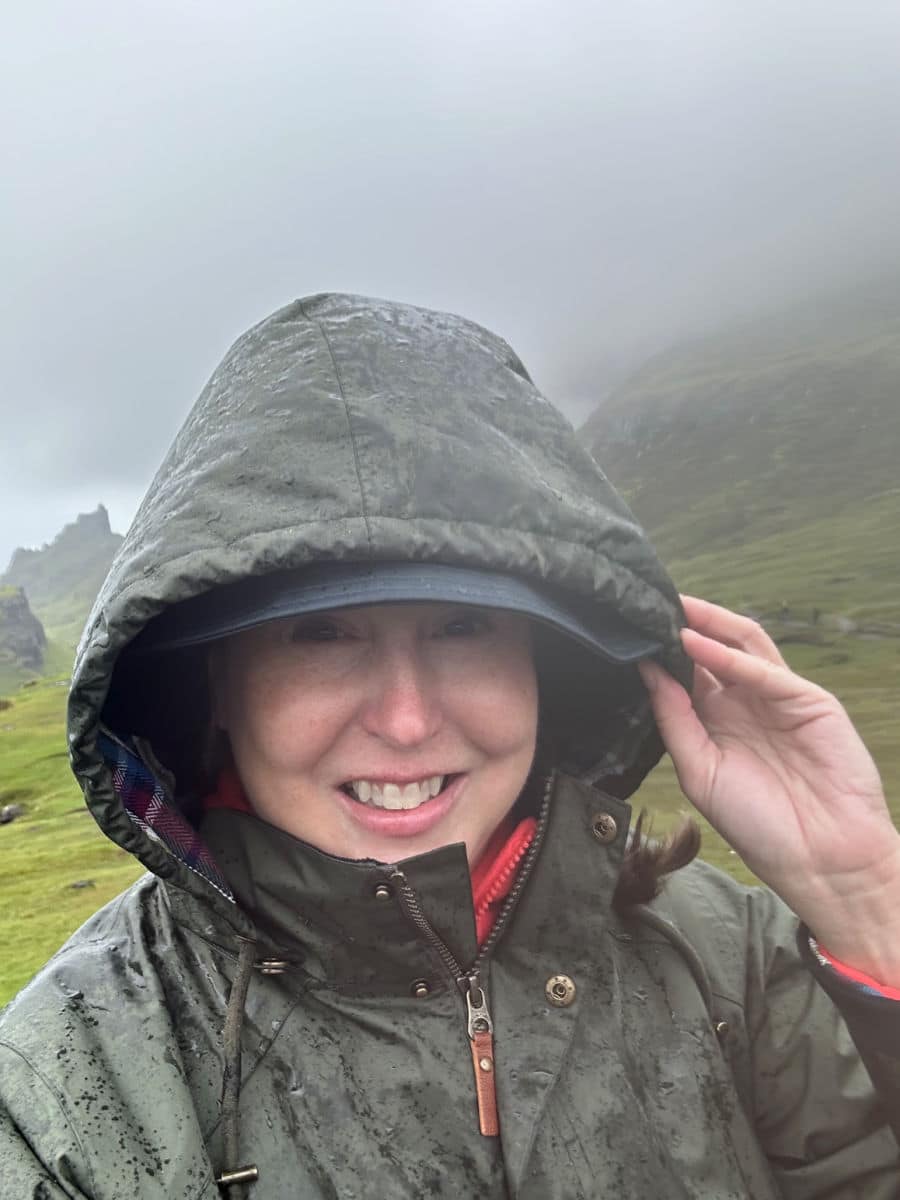
When in Scotland, you need to be prepared for all sorts of weather no matter when you visit. During the summer months, the average temperatures are a high of 59-63°F (15-17°C) and lows are between 47-52°F (8-11°C).
In the winter, temperatures drop to 41-45°F (5-7°C) with lows of 32-37°F (0-3°C). Keep in mind that Scotland has a wet and cool climate, with a fair amount of wind. The rainiest months are in the winter with an average rainfall around 4 inches per month.
While regional variations exist, coastal areas are generally warmer and less rainy than inland regions and The Highlands experience slightly lower temperatures and higher rainfall than the Lowlands.
As I wrote about in my Scotland packing list , you need to be prepared when traveling to Ireland. Wind and water proof clothing including a rain coat, rain pants, and waterproof shoes. It is very important to dress in layers. Don’t forget the basics including a hat, gloves, sunglasses, and an umbrella.

Hotel Reservations
Outside of the cities, the accommodations in towns and smaller cities such as Inverness, accommodations can be limited. It is important to book hotel rooms or vacation rentals at least a few months in advance. This is especially true in popular spots like the Isle of Skye. (See my Scotland road trip itinerary to get recommendations on where to stay.)
Restaurant Reservations
In popular destinations such as Inverness, Isle of Skye, or Glencoe, it is also important to make dinner reservations and keep an eye on the hours and days places are open as many restaurants close by 8:00 p.m. in smaller towns.
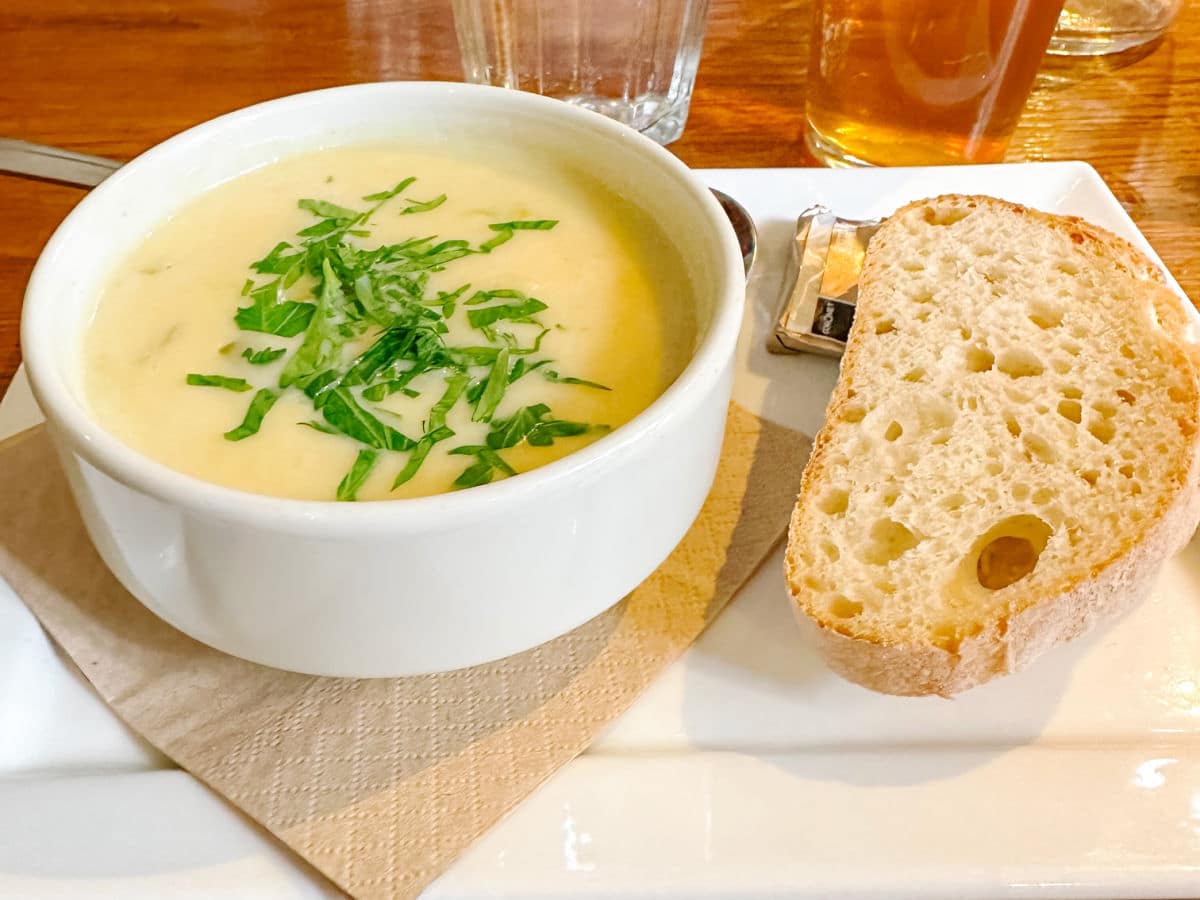
While in Scotland, be sure to try some Scottish specialties such as:
Haggis, Neeps and Tatties: The iconic national dish of Scotland, haggis is a savory sausage traditionally made from sheep’s heart, liver, lungs, and oatmeal, encased in the sheep’s stomach lining. Served with mashed turnips (“neeps”) and potatoes (“tatties”), it’s a hearty and flavorful way to experience Scottish culinary heritage. It took me a while to try this specialty but I ended up liking it because it tastes much more of the spices used in creating it than the meat itself.
Cullen Skink: Originating from Cullen on the Moray Firth, this a warn, creamy soup made with smoked haddock, potatoes, onions, and milk, and typically served with crusty bread for dipping. This is a must-try in coastal areas, especially around Moray and Aberdeenshire, but I had a delicious version in Glasgow.
Scotch Pies: Savory pastries filled with minced meat and onions, Scotch pies are a popular handheld snack or lunch option. The filling can vary from classic minced beef to adventurous varieties like venison or chicken balmoral.
Shortbread: A crumbly, melt-in-your-mouth biscuit made with butter, sugar, and flour, shortbread is a Scottish sweet treat synonymous with tea time. Enjoy plain shortbread for its pure deliciousness, or find versions infused with flavors like chocolate, ginger, or even whisky. I’m a big fan of the millionaires shortbread, which is layered with caramel and chocolate.
Sticky Toffee Pudding: Sticky toffee pudding is a gooey dessert consisting of a light and moist sponge cake, often infused with dates or ginger, nestled in a rich, sticky toffee sauce. It’s typically served warm with a dollop of vanilla ice cream or whipped cream. While the origins of sticky toffee pudding are disputed, Scotland has a strong claim to fame, thanks to the Udny Arms Hotel in Aberdeenshire. They boast of creating the iconic dessert back in the 1960s.
Fish and Chips: While the dish may not have originated in Scotland, their contribution to its evolution and continued popularity is undeniable. Fish and chips are a staple of Scottish cuisine and culture, just as much as they are in the rest of the UK.
Deep-Fried Mars Bars: I was really shocked when I asked locals about famous foods and they told me about deep-fried Mars bars that are battered and deep-fried until golden and enjoyed after the pub.
Scotch Whisky: The undisputed king of Scottish drinks, whisky (not called Scotch in Scotland) is steeped in history and tradition. With its distinct smoky flavor and wide variety of regional styles, it’s a must-try for any visitor. Explore peaty Islay drams, floral Highland expressions, or Speyside’s fruity whiskies. Just remember that whiskey spelled with an -ey refers to Irish whiskey.
Irn-Bru: This bright orange carbonated beverage is often called Scotland’s “other national drink.” Its unique flavor is hard to describe but I found it something of a cross between orange soda and bubble gum. Bottom line, it is excessively sweet.
Scottish Gin: Scotland’s gin scene is booming, with distilleries across the country creating unique and flavorful expressions. Expect botanical notes inspired by the Scottish landscape, like juniper, heather, and berries. My friend Keryn came back with at least a dozen little bottles to sample the various flavors!
Ferries
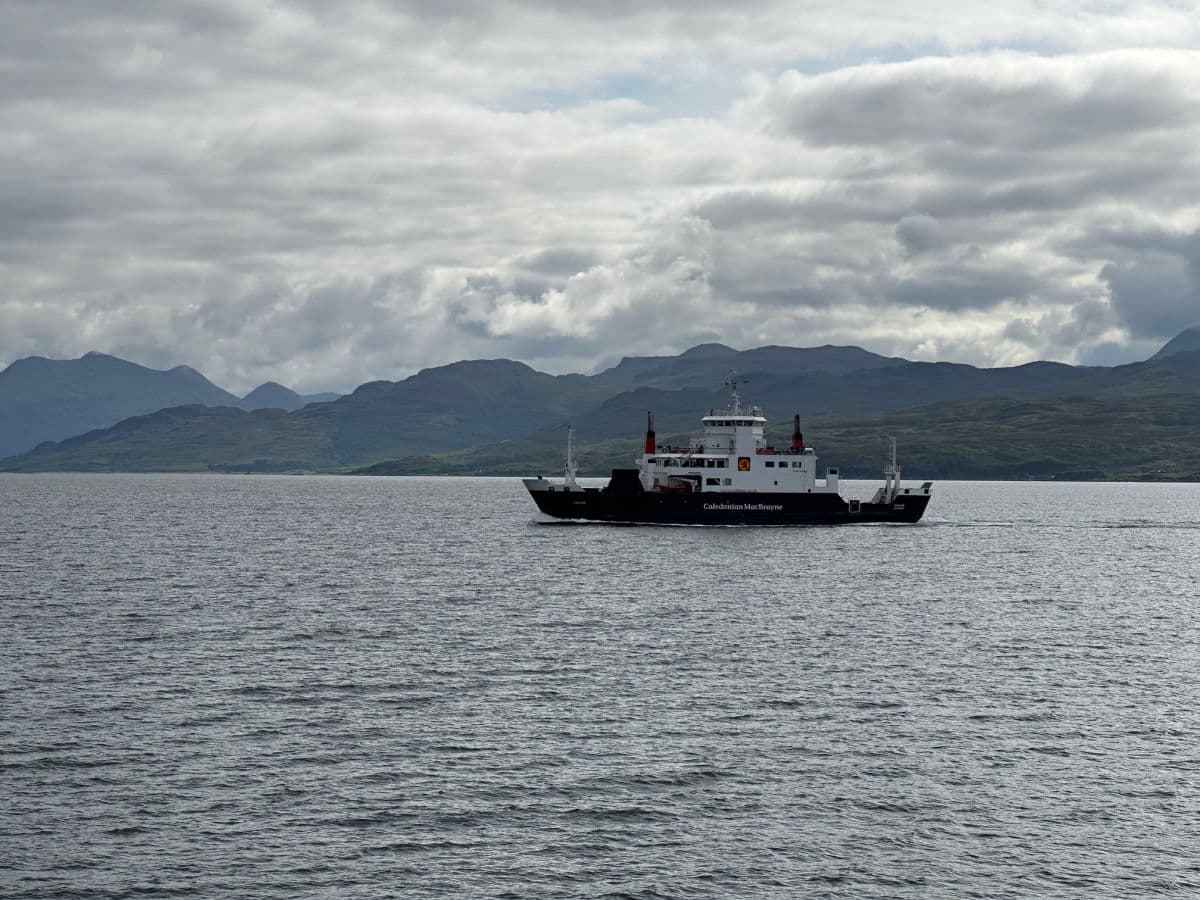
If you plan on visiting any of the islands by car and want to take a ferry, you will need to book a timed ticket in advance.
Attractions
Some attractions such as the Royal Tattoo, Edinburgh Castle tickets, or popular tours can sell out in the busy season so you should book your tickets in advance. As I mentioned in my Edinburgh itinerary, I would also suggest going to popular attractions such as the Edinburgh Castle early in the morning when it first opens.
Best Time to Visit
The most popular time to visit Scotland is during July and August, especially during festivals such as the Fringe Festival, events like the Royal Edinburgh Military Tattoo, the Highland Games, and Ceilidh at the Castle with live traditional music and dancing in Edinburgh Castle.
In terms of weather, June brings pleasant temperatures and long daylight hours (when I was there in late June/early July the sun didn’t set until nearly 11:00 p.m.. September is still warm enough (it was actually quite warm the year I was there in early September), and you will also find beautiful autumn foliage and fewer crowds than peak summer.
May offers springtime charm with blooming flowers, pleasant weather, and no midges (tiny biting insects!). Not as sunny as summer, but less crowded.
Know Some History
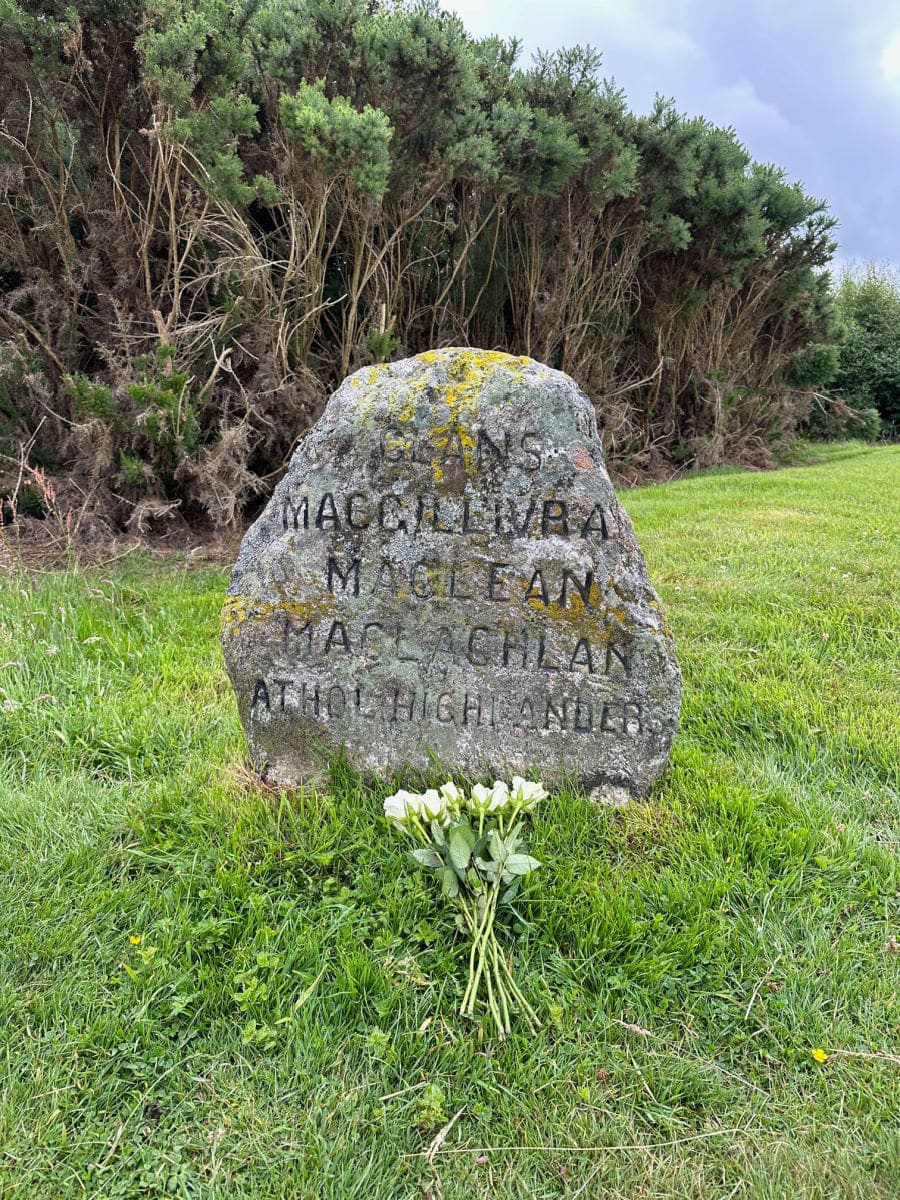
When you are visiting castles and historic sites such as the Culloden Battlefield , it helps to know some basic Scottish history. I was really surprised to see how front of mind what seems like distant history can still be, such as a friendship with the French that goes back to old alliances with France against the English.
To brush up on your Scottish history before you visit, here are some books, movies, and shows you may want to enjoy.
Things to Watch:
- Braveheart (1995): While not historically accurate, it’s a classic epic film depicting the life of William Wallace, a Scottish rebel leader, and gives insight into the Scottish Wars of Independence in the 13th century.
- Outlaw King (2018): A more grounded portrayal of Robert the Bruce, another key figure in Scotland’s fight for independence from English rule.
- Mary Queen of Scots (2018): Explores the tumultuous reign and rivalry between Mary, Queen of Scots, and Queen Elizabeth I of England, shedding light on complex political and religious tensions of the 16th century.
- Rob Roy (1995): A fictionalized but entertaining account of the life of Rob Roy MacGregor, a Scottish clan chief and folk hero in the 18th century.
- Outlander (2014-present): This popular TV series follows a 20th-century nurse who travels back in time to 1743 Scotland, immersing viewers in the Jacobite rebellion and Highland life.
- Monarch of the Glen (2000-2005): A charming drama about a family running a deer farm in the Scottish Highlands, showcasing the beauty of the landscape and rural traditions.
- Secrets of the Clans (2008-2010): Explores the history and traditions of various Scottish clans.
- Wild Scotland (2014): Stunning natural history documentary capturing the breathtaking landscapes and wildlife of Scotland.
Things to Read:
- Outlander by Diana Gabaldon: A sprawling series blending romance, time travel, and historical intrigue in 18th-century Scotland during the Jacobite rebellion.
- Wolf of the North by William McIlvanney: A gritty portrayal of Viking-era Scotland through the eyes of a warrior battling for survival against invaders and internal power struggles.
- The Flame Bearer by Kathleen Winsor: A sweeping historical saga following the Bruce family and their fight for Scottish independence from England.
- Redcoats by Neil Oliver: A thrilling account of the Battle of Culloden from the perspective of both Highland fighters and British soldiers.
- Sunset Song by Lewis Grassic Gibbon: A poignant and tragic novel depicting the harsh realities of rural life in 19th-century Scotland, focusing on a woman’s struggles and resilience.
- The Last Summer by Karen Swan : In 1930, the residents of small St. Kilda are relocated to mainland Scotland.
Save this to Pinterest
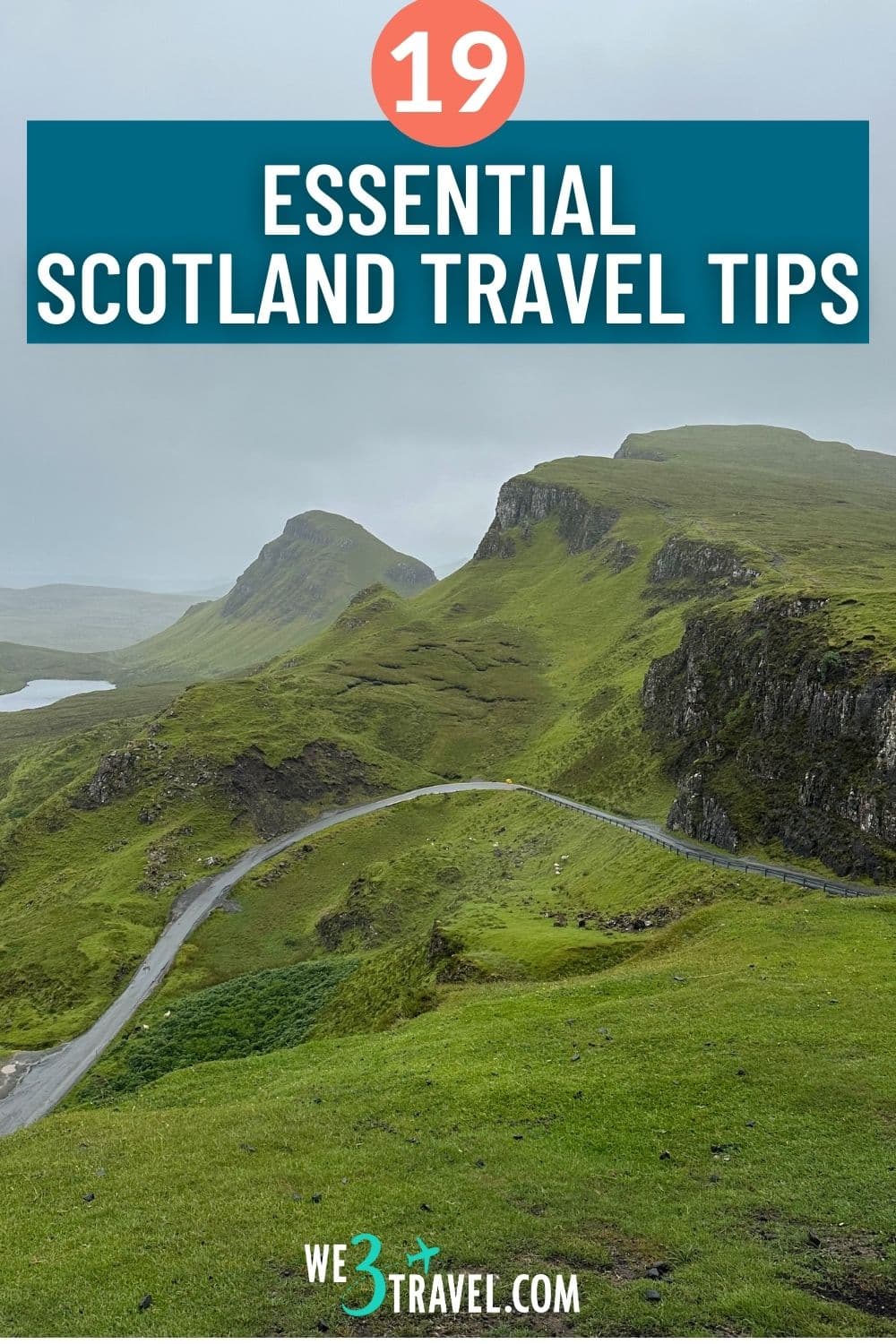
Tamara Gruber is the Founder and Publisher of We3Travel. A former marketing executive and travel advisor, Tamara is an award-winning travel writer and recognized expert in family travel. Tamara is a member of SATW and the Adventure Travel Trade Association, and serves on the Board of the Family Travel Association. She is also the publisher of YourTimetoFly.com and the co-host of the Vacation Mavens travel podcast.
Find this useful? Share it!
Publish Date: January 18, 2024

SIGN UP FOR OUR NEWSLETTER & RECEIVE A FAMILY VACATION PLANNING KIT!
We3Travel.com will use the information you provide on this form to send you newsletters. You can unsubscribe at any time by clicking the link in the footer of any email you receive from us, or by contacting [email protected] . By clicking below, you agree that we may process your information in accordance with these terms.

Start typing and press enter to search
We've refreshed our website design so things may look a little different if you've been here before. We'll be making more improvements soon so watch this space.
Jedburgh iCentre
© VisitScotland / Phil Wilkinson
Top Tips for Travelling to Scotland
Let's make this amazing trip a reality. Travel to Scotland with simple information about getting here and getting around. You can also find info on the weather and when to visit, so you can enjoy meeting spring farm animals, admire beautiful autumn colours or explore our Christmas markets. Got some practical questions? Our FAQs, passport and safety pages cover all you need, so nothing will stand between you and Scotland!
Find experiences
JavaScript needs to be enabled to see this product search form. You can turn this on in your browser settings.
Plan your holiday to Scotland
Get our best tips on when to visit (anytime!), check out the weather and what to bring, or drop into our iCentres when you get here for amazing local insights and to learn more about Scotland.
When is the best time to visit Scotland?
Winter, spring, summer or autumn? Discover the best time to visit Scotland.
Scotland FAQs
Burning question about Scotland? You might find it here!
Scotland's Weather, Climate & Average Temperature
What's the weather in Scotland? Find out about weather across Scotland's different regions.
What can you get in a VisitScotland iCentre?
Visit our Information Centres when you are in Scotland for tips, advice, tickets and more.
Getting to and around Scotland
Find the easiest responsible ways to travel to and around Scotland.
Glasgow Central Station
Getting to Scotland
We've got details on all of the options to get you to Scotland smoothly for your incredible break.
© E-City Chauffeur Ltd / Patrice Mestari
Getting around Scotland
Find out how simple it is to get around Scotland. You could soon be sitting back, admiring the view out of the bus or train window.
How to explore responsibly
It's really simple to be a responsible traveller - check out our top tips on where, when and how to travel around Scotland.
Plan Your Holiday to Scotland
Our guide gives you the tips you need to make the most of your trip, from where to go to the best time to visit.
Scotland's Responsible Tourism Promise
Find information on VisitScotland's responsible tourism promise. Including our key commitments to caring for Scotland now and for generations to come.

Green & Sustainable Businesses In Scotland
Discover green & eco-friendly businesses in Scotland. Including Eden Mill Distillery, Wildland Estates, JP Orkney and more!
More practical advice
From finding the latest Brexit regulations to locating an embassy or how to apply for a Visa, our practical guides tell you everything you need to know.
Accessible Holidays in Scotland
You’ll find a great range of accessible accommodation, attractions and things to see and do, whatever your requirements.
Passports, visas & customs
Coming from overseas? Check the passport and visa requirements for visiting Scotland.
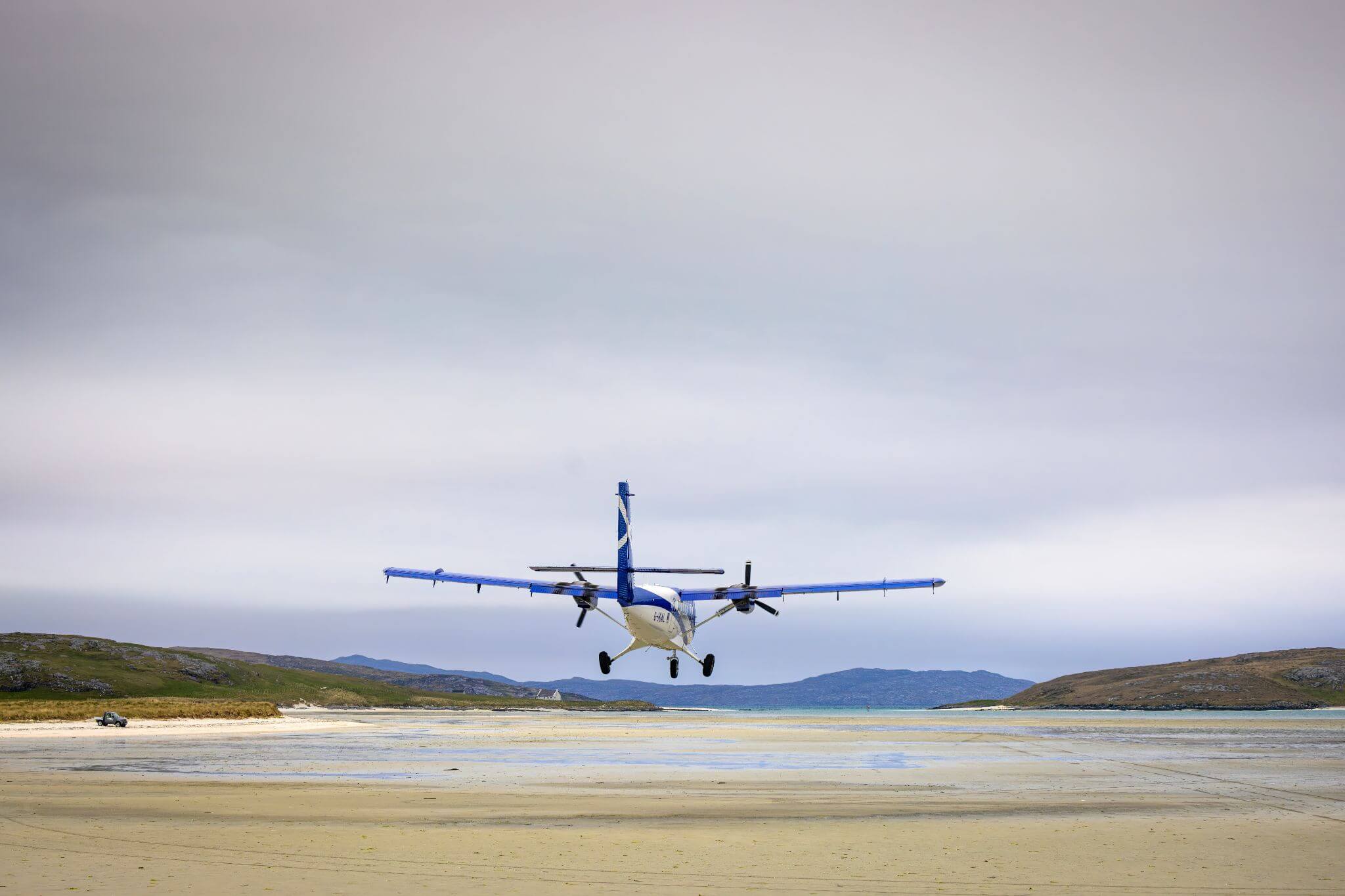
Electronic Travel Authorisation (ETA)
Find out more information on how to apply for an Electronic Travel Authorisation which is required for visitors travelling without a visa.
Healthcare for overseas visitors
Find out more which overseas visitors can access NHS services and where they can go about accessing healthcare in Scotland.
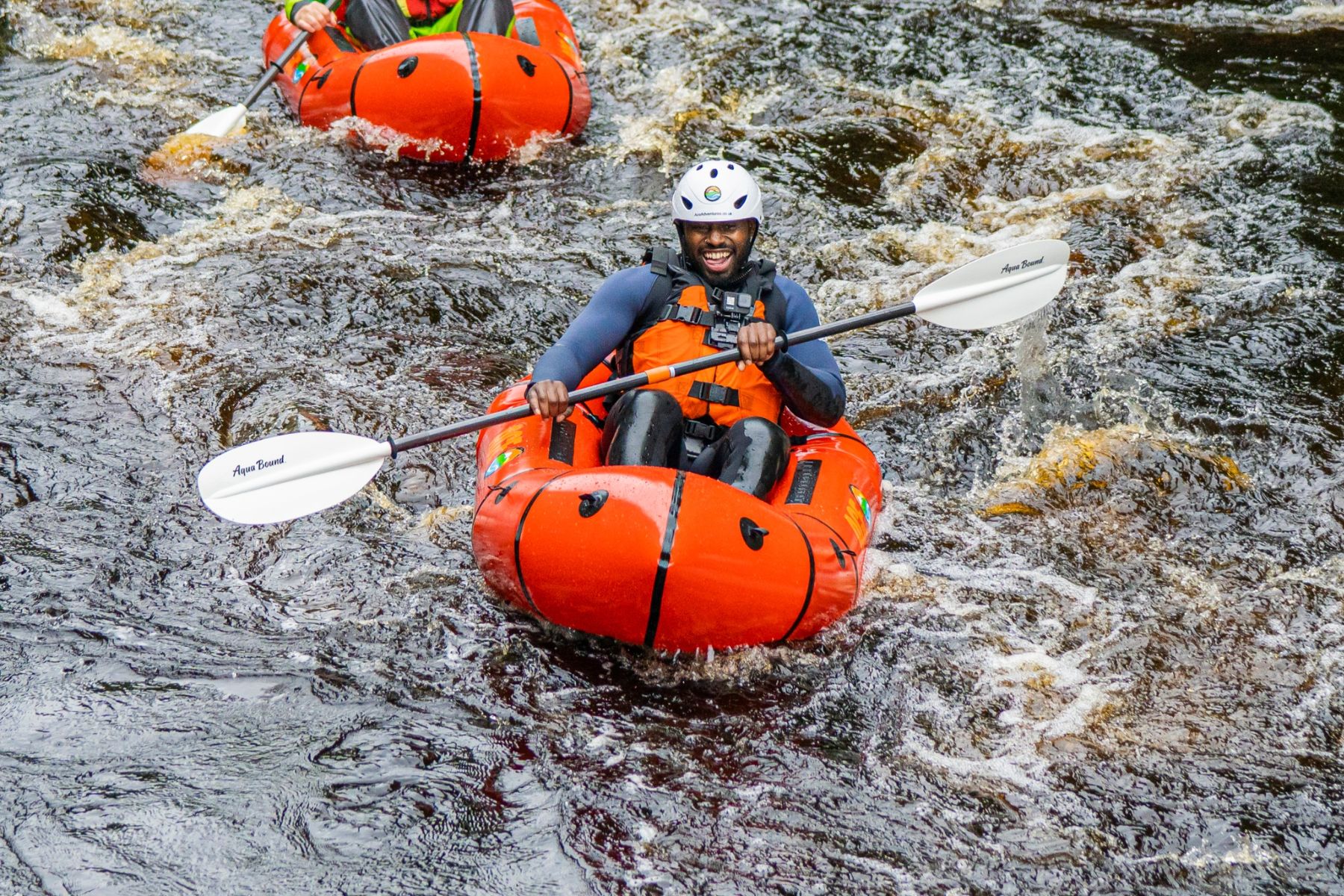
A Guide to Outdoor Safety in Scotland
Scotland's scenery can be stunning but also wild and rural. Be prepared with the correct clothing and equipment.
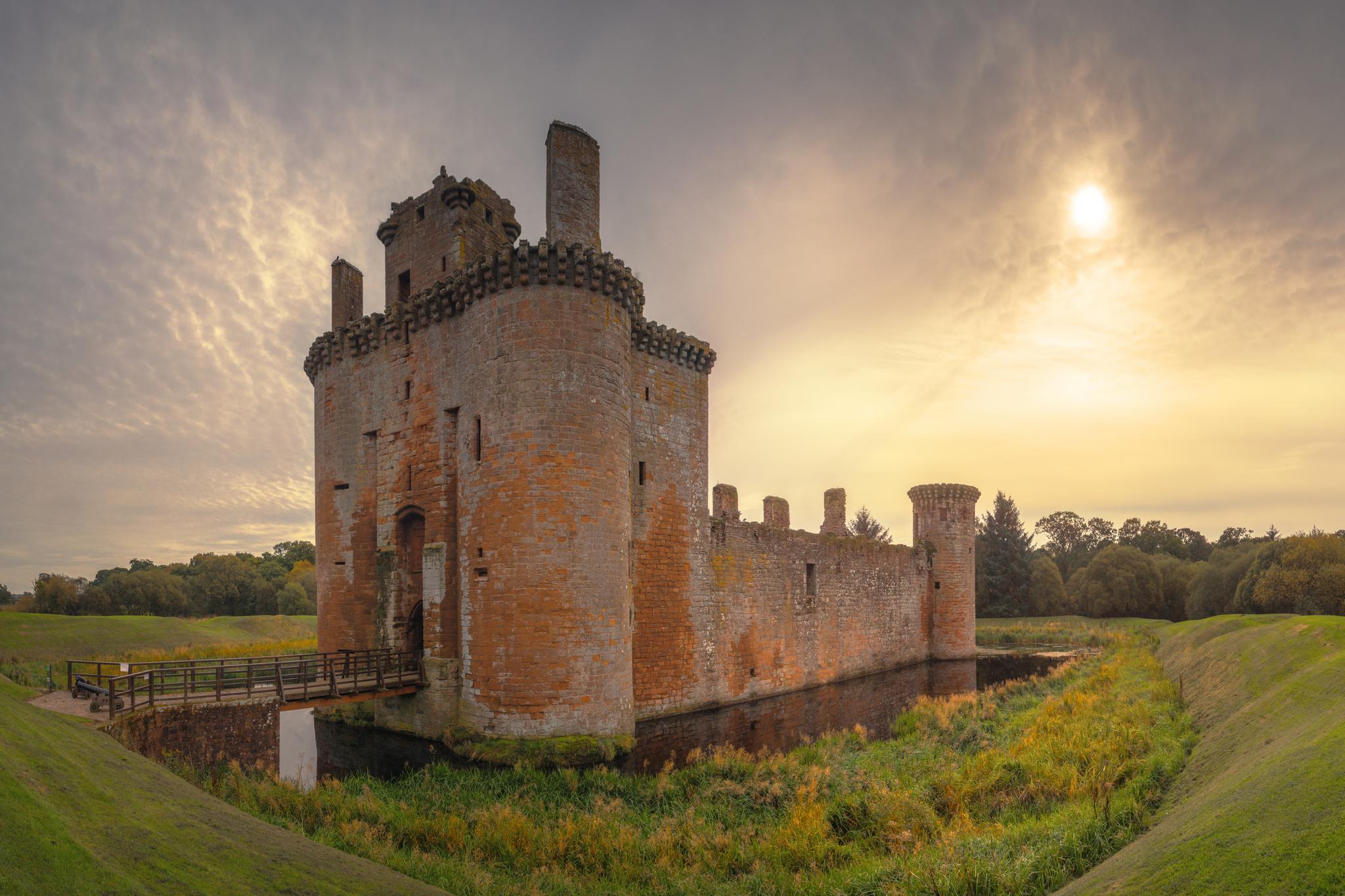
Passes & Offers for Holidays, Attractions & Travel in Scotland
Find great value while in Scotland and take advantage of various offers, passes, discounts and deals.
Visiting Scotland after Brexit - Current guidance for EU visitors
Find out the latest advice on visiting Scotland from Europe, including visas, bringing pets and driving.
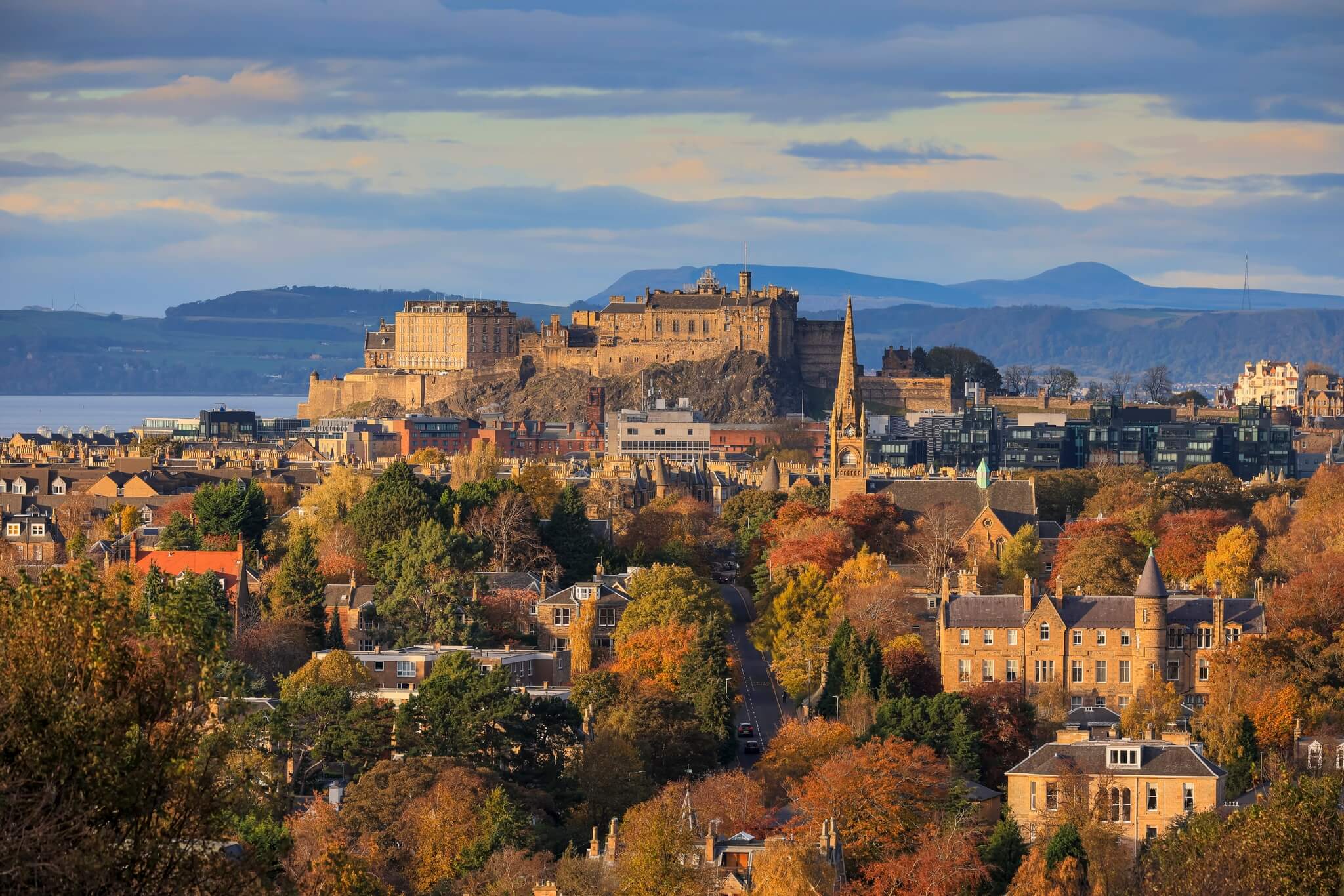
Embassies & Consulates
If you need help with visas, lost passports or aid in an emergency situation, you can get in touch with your country's consulate in Scotland.
Learn about Scotland
Burns Supper
© VisitScotland / Kenny Lam
All about Scotland
Get to know all the unique and fascinating things about Scotland before you visit. Find out about Gaelic language and music, and the history of our country.
Other things you might like

Events & Festivals in Scotland

City Breaks in Scotland
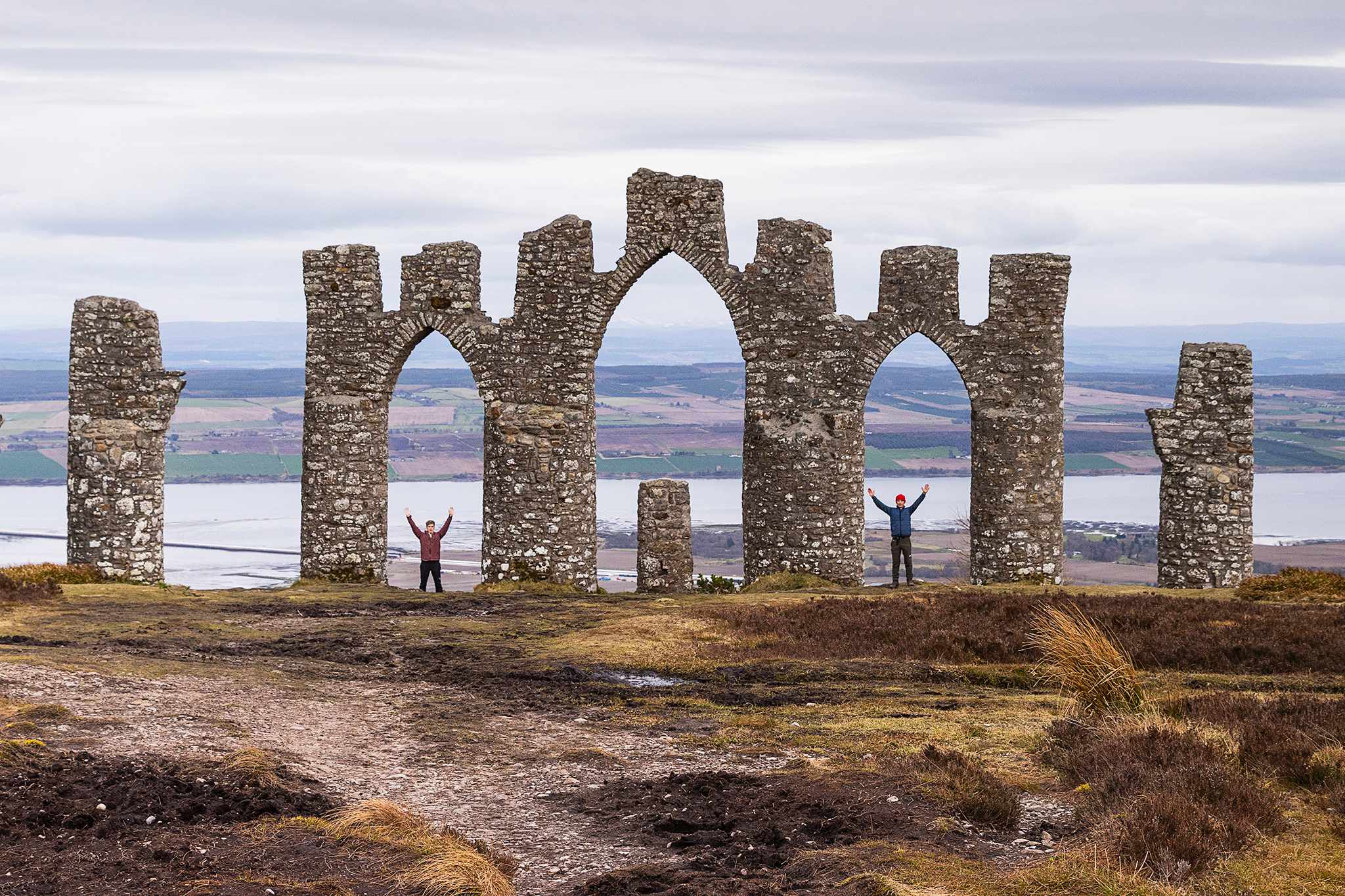
Places to Go
Airports & Flights in Scotland
Best Road Trips in Scotland
Train Holidays in Scotland - Getting Around by Rail
Getting around Scotland by Ferry
Travel from England & Wales to Scotland

Scotland Travel Guide
Your ultimate scotland travel guide, with tips, and things to see and things to do in scotland. great for first-time and returning travelers..
Found in the northern third of the United Kingdom is the great country of Scotland.
Known for the warmth of its people, lush greenery and mountains, beautiful coastlines and beaches, medieval castles, and rich history, Scotland is a place like no other.
It is perfect for those who find the beauty in nature. Made up of almost 800 small islands, there is a lot to see and explore here.
This Scotland travel guide will help you plan your next vacation.
Popular Guides
- Things To Do in Edinburgh
- North Coast 500
Our Highlight
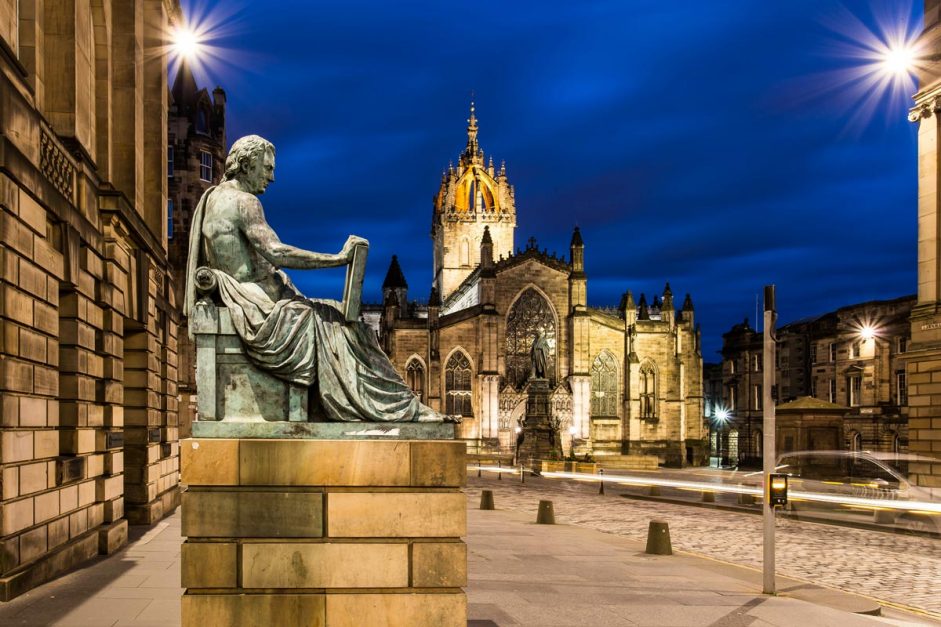
Table of contents
Table of Contents
Fast Facts about Scotland
- Currency: Scotland currency is the Pound sterling (£) and 1 pound sterling is equal to 1.25 USD.
- Power: Scotland power voltage is 230v 50 Hz.
- Visa: Tourist Visas are not required when visiting Scotland. All that is needed is a U.S. passport that has been valid for at least 6 months prior to visiting Scotland.
- Best way to get around: Renting a car is considered the best way to get around Scotland. You must be over 21 to rent a car.
- Driving in Scotland is done on the left-hand side of the road!
- SIM Cards: The most common cellular networks in Scotland are Orange, O2, and Vodafone. You can purchase a UK SIM card to connect your phone to one of these.
- Value-added tax (VAT) is applied to most goods in Scotland. Visitors may be able to reclaim these taxes based on the store and amount purchased. For more information, click here. http://www.rampantscotland.com/know/blknow_vat.htm
Things to See and Do in Scotland
- Edinburgh Castle : Take a guided tour through this medieval and world-famous castle. Visitors will get to learn about the fascinating history behind this castle while exploring the castle up close.
- Culloden Battlefield is the historic site of the last battle to take place on British soil in 1746. This battle is frequently referred to as one of the most important for Scotland, as it marked the end of the clan system in the highlands.
- Kilchoman Distillery: Learn everything you wanted to know about whiskey and how it’s made. Stay for lunch at their café, try some coffee or cake, or enjoy whiskey tastings.
- Drive the North Coast 500 – Scotland’s epic road trip takes you around the entire northern route of the country through the highlands, past impressive sea cliffs and through the land of castles and distilleries.
Scotland Travel Guides
- Dunrobin Castle
- Dunnet Head
- Clava Cairns
- Culloden Battlefield
- Things to do in Inverness
Accommodation
Budget: For those on a budget, Scotland offers many hostels at roughly 20 pounds per night. Many have shared bathrooms, but you can upgrade to get a private bathroom in some if you’re willing to pay more.
Mid Range: These typically cost £60 to £100 per night and often come with complimentary breakfast as well as free Wi-Fi. Scotland also offers plenty of bed and breakfasts around the same price.
High End: For those who wish for a unique experience, Scotland offers plenty of high-end castle hotels. These castle hotels are rich with history and offer plentiful views. Prices tend to fall in the £100 to £350 range. In the smaller cities, it might be best to check out VRBO for more of a selection.
- Check out our favorite booking platforms Booking.com , Tripadvisor and VRBO for the best deals on accommodation.
You can find a variety of pubs and street food in Scotland.
The national dish is haggis, a meat pudding served with mashed potatoes and turnips. Expect to pay around £30 per day for food.
The Best Ways to Get Around Scotland
Getting to scotland:.
Getting to Scotland: For those flying to Scotland, the Edinburgh Airport or Glasgow Airports are two of the main airports and are conveniently just 7-8 miles from the city center.
You can check for the best flights to Scotland on Skyscanner .
Transportation:
Bus: When you need to get around the city, the bus is a cheap option. They run all throughout the day and cost around £2-5 depending on where you go
Train: Trains are available throughout Scotland and tend to cost at least 20-40 pounds for a one-way trip depending on how far your journey is. This is a great way to get to major cities if you don’t have a car, as routes such as Glasgow to Edinburgh only take an hour.
Car Rental: By far the most flexible way to discover the country is by renting a car . It is fairly reasonable ($40/Day) and allows to reach those charming little towns you might not otherwise be able to discover.
Just remember they drive on the left-hand side of the road and almost all cars are manual transmission. If you want an aoutomatic you will have to pay more.
When to go To Scotland
June to August is considered the best time to visit Scotland, as this is Scotland’s summer months. This is also the peak of tourism.
For those who want to avoid the crowds and perhaps get better deals, the spring season (late March to May) is a good period to go.
There is also little difference in weather between the spring and summer seasons, so you can still enjoy plenty of great weather, with temperatures around 59 degrees Fahrenheit.
Where to Stay in Scotland
Grand Central Hotel : Located right in the city center of Glasgow, this Victorian hotel is 4 stars and offers many attractions. Take a stroll through the shopping district, walk to Central Station to visit more of Glasgow, or dine at the hotel’s very own restaurant and bar. This hotel also offers the best in high-speed Wi-Fi.
Radisson Blu Hotel Edinburgh : Shaped like a castle, this four-star hotel comes with 24-hour room service, a spa and health club, and its own restaurant and bar. Located in the famous Royal Mile, you get to see amazing sights and history of Edinburgh. The Edinburgh Castle, National Museum of Scotland, and shopping area are all within walking distance from this hotel.
The Chester Hotel : This contemporary and classy hotel is in the heart of West End Aberdeen. Enjoy some of the best in hospitality, with rainfall showers, Egyptian cotton sheets, and designer toiletries. Explore more of Aberdeen or stay indoors for some afternoon tea and cake.
Scotland Accommodation Guides
- Where to Stay in Edinburgh – A Guide To The Best Places and Neighborhoods
- 3 Days in Edinburgh – The Complete Edinburgh Itinerary
- Things to do in Inverness – The Capital of the Scottish Highlands
What to Pack for Scotland
Packing tips.
Scotlands weather is relatively mild throughout the year except in the Highlands. Rain can be exp[ected at anytime so pack accordingly.
- Pack a raincoat – chances are that you will encounter rain no matter what month you travel. A light rain shell is highly recommended as it will combat the rain AND wind you will probably face in Scotland.
- Layers – As Scotland has diverse weather, it is best to bring clothes with multiple layers to accommodate the changes in temperatures. Scarfs, sweatshirts, gloves are all good options. For travel during winter months, make sure to bring a heavier coat as air frost can be common in certain areas.
- Footwear – Pack a pair of lightweight, durable, waterproof and comfortable shoes and/or a pair of light boots with lugged soles and ankle support if you plan on doing a lot of hiking
- Classic Basic items – You do not need to be a fashionista to blend in. The key is in embracing neutral toned items that can be mixed and matched easily. Avoid logos, baseball caps, shorts, hoodies, flip-flops, and running shoes as these items scream tourist!
Scotland Travel Guide: Best Booking Resources
Whenever we travel to we make sure to start with these companies. We have tried a lot of different ones over the years and all of these have consistently proven to be the best when it comes to offering great prices.
We have used every one of these personally and continue to do so.
- Booking.com : This is our go site to when comparing prices for accommodation. It usually has the cheapest prices, especially in Europe and we love their interface. Not to mention you get free cancellation and you are guaranteed the best price.
- Trip Advisor : What we like about Trip Advisor is that we can look at all the reviews and then book our accommodation. TripAdvisor is where we go when we want to compare prices with multiple accommodation providers.
- VRBO : is the main search engine we use when we are looking for a home or apartment rental. It can sometimes be cheaper than hotels and it is the best way to stay in areas that offer a more local feel.
- Hostelworld : With one of the largest databases of hostels in the world, Hostelworld is the go-to site when you are looking for budget accommodation.
- Skyscanner : This is the first place we check for flights. It consistently comes back with the cheapest and best options. It allows us to compare a lot of airlines to get the best price.
- Rome 2 Rio : If you want to see how to get somewhere by plane, train, bus, ferry or car Rome2Rio lays it all out for you as well as related costs.I love how they show it all to you on a Google Map and it works offline.
- Get Your Guide: For all your day trip and city guide needs, we use Get Your Guide. It has the world’s largest collection of things to do with more than 30,000 activities in 7500 destinations.
- World Nomads Insurance: When traveling to Italy you should always have travel insurance. We have found the best bang for your buck is by far World Nomads.
Scotland Travel Guide: Related Articles
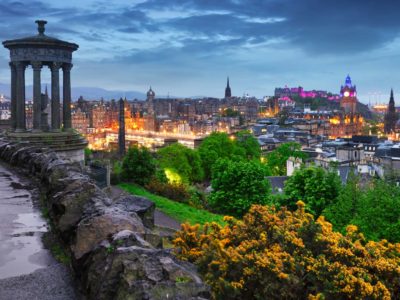
Where to Stay in Edinburgh: Our Favourite Places And Neighbourhoods (2024)
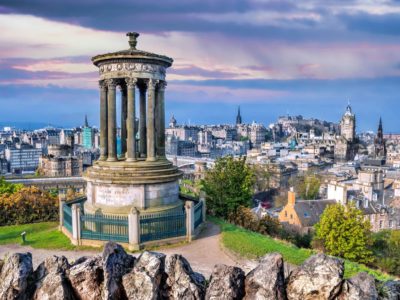
25 Best Things To Do in Edinburgh, Scotland In 2024

26 Best Things to do in Scotland in 2024

50 Scotland Travel Tips For An Unforgettable Trip
Last Updated on March 16, 2024
On my first visit to Scotland, there was so much that I didn’t know when I arrived. SO. MUCH. And as I scrolled through my Scotland content, wondering what else you guys would need to plan a perfect trip, I was dumbfounded that I had not written any Scotland travel tips?! SO, here I am, presenting a whopping FIFTY tips that will help you traverse your way around Scotland whether that be in the highlands, islands, cities, mountains, hills, valleys, and everywhere in between! This blog post might just be one of my favorites that I have written yet! I really want to start doing this for all the other destinations that I have visited: Iceland, Bali, The Philippines, Japan, Utah, and more, so keep an eye out for those up and coming posts on the blog!
Without further ado, here are fifty Scotland travel tips that will enhance and improve your traveling experience in this magical land!
This post may contain affiliate links for the products I mentioned, but as always, all opinions are my own. I make a small commission , at no extra cost to you, when you make a purchase or booking through these links. This helps to support this space and keep me blogging, which I am so extremely thankful for.
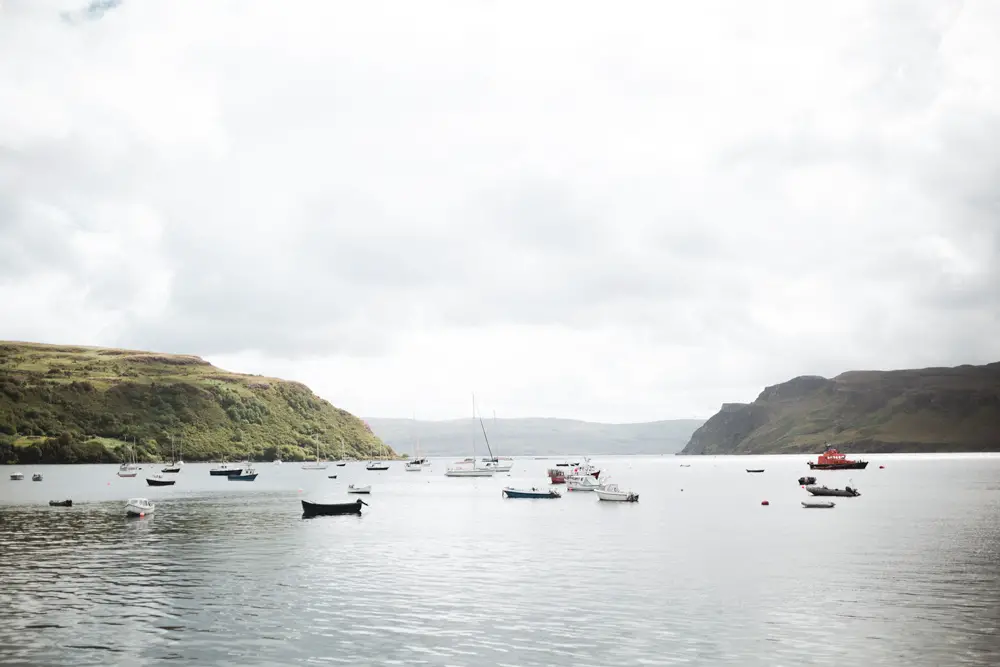
Tips For Planning + Booking Your Trip To Scotland
1 | plan time to explore more than just the major cities and touristy locations. .
Every part of Scotland is beautiful no matter where you go, but block off some extra time to go off the beaten path, explore some of the western islands, and even the northernmost parts of Scotland. Whenever I traveled there, I was with a large group for a tournament so I really only got to see the highlights, which, don’t get me wrong, I was still blown away, but I wish I would have gotten to see St. Kilda (a double UNESCO World Heritage Site), The Outer Isles, The Outer Hebrides, The Northwest Highlands, and a lonnnnnnng list of other sites. Your trip is going to be special regardless, but dig a little deeper in your research and find those places that will make your trip special.
2 | Plan Your Own Highlands Roadtrip > Booking A Guided Tour
Highland tours are expensive, they don’t give you any flexibility, and you’re not able to choose when you arrive in certain places, which means that you’re going to arrive in places at a similar time as all the other tour buses. The best option if you want to explore the Isle of Skye, The Highlands, or anywhere else outside of the major cities in Scotland, renting a car and crafting your own tour is going to be the best option. Hell, you could even rent a campervan and REALLY get that full Scottish road trip experience!
3 | Get To Know The History
Scotland is chalked full of history and stories about practically everything that you’re going to see and when you know of the stories and history, you’ll appreciate everything you see a whole lot more, at least I did. The key thing here is to bring a guidebook that will also teach you the history of the locations. You will look at certain landscapes, castles, and hikes with a different perspective once you dive deeper into their cultural stories and history of them.
4 | Book Excursions, Day Trips, And Tours Ahead + Online
I rarely end up booking things ahead of time, but in Scotland, booking online and in advance is going to save you some money and guarantee you a spot. If you’re planning on riding the Glenfinnan Viaduct (AKA The Harry Potter Train), you want to book several months in advance no matter the season. If you’re really keen on saving money, check out my other tips for traveling Scotland on a budget !
5 | Spend More Than Just A Day In Major Cities Like Edinburgh + Glasgow
You can easily see the highlights of Edinburgh like The Royal Mile, Edinburgh Castle, and many other iconic spots in a day, but spending more than a day, ideally three days in Edinburgh is going to get you into the Scottish groove, possibly into some shenanigans, and a more thorough experience of the city. The same goes for Glasgow!
6 | Get Into The Scottish Spirit Before You Head Out Via Books + Movies
Scotland is the setting for many iconic movies and tv shows. To name a few, Game of Thrones, Outlander, Braveheart, Monty Python and the Holy Grail are all recognizable, more mainstream movies that will get you into Scotland before you even leave for the airport. However, as I just said, these are all pretty mainstream, some even being historically inaccurate, so if you really want to explore the true Scottish culture, ‘The Sunshine On Leith’ and ‘Trainspotting’ are both great movies to start with and the Outlander series are great books to go to from there.
7 | The best way to get around the city is by foot and public transport and the best way to get around the highlands is in your own rental car.
Once you get into the cities, there really isn’t a need to rent a car until you leave to go to the more wild parts of Scotland. You can get around the vast majority of the country via public transportation, but a car allows you to squeeze into those little roads and explore more off the main areas. There are some parts that a large bus cannot get to, so having your own car is going to give you access to absolutely EVERYTHING.
8 | Scotland has its own currency, but it is valid all across the United Kingdom. The same goes for England and Northern Ireland currencies.
The prints on the currency vary depending on the bank that printed them in Scotland, but the Scottish currency can be mixed and matched with other currencies in the United Kingdom. It would basically be like if Texas printed it’s own dollar bills and I was visiting California, they are both technically the same currency, just different prints.
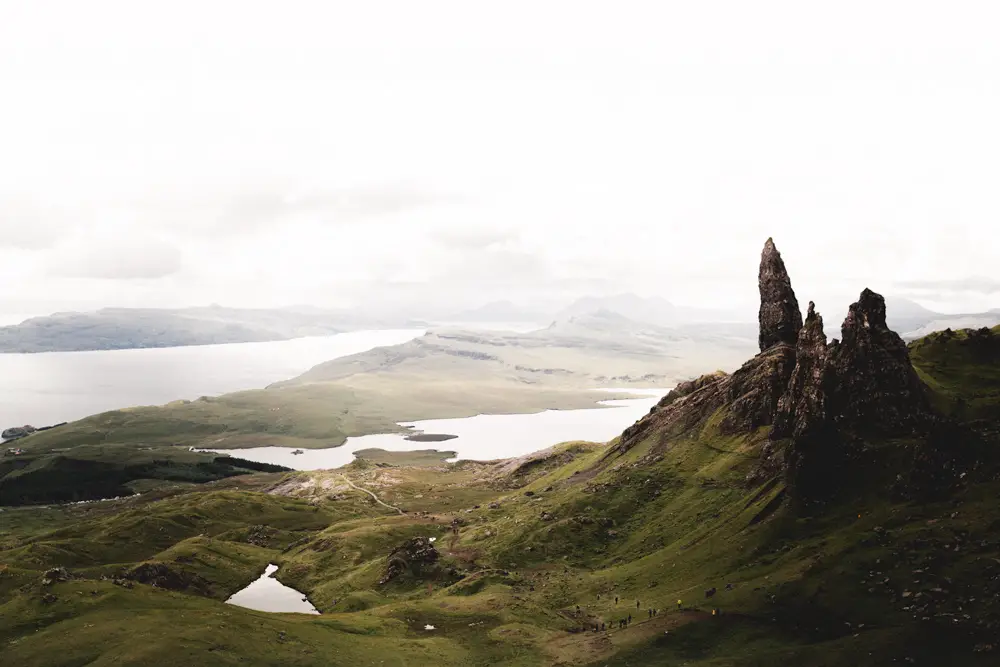
Packing + Adventure Tips For Scotland Travel
9 | use every opportunity to exercise scotland’s ‘right to roam’ law, but be respectful of the land and clean up after yourself. .
Back in 2003, Scotland passed its ‘Right to Roam’ law that allows both tourists and locals to enjoy Scotland’s land and waters no matter who owns them. This means that wild camping is legal, AND you can expect to find some hidden and spectacular locations! If you do choose to exercise this, PLEASE make sure that you don’t leave any trash, destroy the natural environment, and leave the place how you found it.
10 | Pack the proper gear that will keep you warm and dry.
When I think of warm and dry, I think of my absolute favorite hiking essentials: my cozy fleece , stylish yet still functional raincoat , waterproof pants , and my tried and true hiking boots ! If you’re out on a hike, or outside in general, you don’t want to end up a soggy mess, so I recommend investing in some high-quality gear if the outdoors is a large part of your life. Start out with some warm baselayers like the Patagonia Capilene Thermal Baselayers , and then layer up with the rainpants and outer shell. This is what my current layering system looks like:
Patagonia Capilene Midweight Longsleeve > T-Shirt > Sweater / Fleece > RAINS Classic Raincoat
Patagonia capilene midweight bottoms > leggings > mountain hardwear ozonic stretch pants.
This way I was able to strip down or add layers as the weather changed throughout the day!
11 | Pack comfortable shoes!
This is the FIRST thing you should even consider putting on your Scotland packing list because the hills and cobblestone streets are not going to do your back, hips, arches, or toes ANY favors. I made the mistake of trying to wear Vans around the city and let me just say, YIKES. I haven’t found the perfect pair of casual, yet still comfy walking shoes yet, but I want to give these adorable white sneakers a go, since they match with everything, but bring the pair that works best with your feet and back!
12 | “If you don’t like the weather, just wait a minute”
You can be in sunny, beautiful, partly cloudy weather one minute and then drive through a torrential downpour the next, seriously. It is both a blessing and a curse, but that is why you pack and wear those layers so that you’re unstoppable!
13 | Don’t rely on an umbrella to keep you dry; you’ll end up soggy.
If you encounter a light drizzle, sure, an umbrella will do the job, but when that afternoon, torrential downpour occurs, that umbrella is useless. Which is why I recommend having a waterproof shell, AKA a waterproof jacket, pants, and shoes that will keep your whole body dry!
14 | If you’re planning on taking a road trip, watch out for sheep on the road!
You’ll see these fluffy lil’ guys all over the country! Be careful on the roads and stay vigilant!
15 | Don’t stop in the middle of the road or street to take a photo.
If you try and stop in the middle of a bust street or road, 1. you might get hit, and 2. you’re going to get dirty looks and probably called a couple of names for not going off to the side. There are beautiful places all over Scotland, but make sure you walk to the side or pull off onto a spot on the side of the road before you take your photo.
16 | There are people that still speak Scotlands original language of Gaelic, so you will spot some bilingual signs on the road.
Practically everyone speaks English in Scotland, but as you veer away from the major cities, the more prominent Gaelic will be!
17 | If you get yourself into a bad situation where you need medical or emergency services, the phone number is 999.
There are tons of outdoor activities, hikes, and excursions that just might get you into a sticky situation. Ideally, you’ll never need this number, but just in case you need emergency help, the number is 999.
18 | ^^ and if you do need to make a call, that’s why it’s best to get a local, Scottish SIM card.
Throw you international phone plan out the window and step into the world of local SIM cards, my travel savior and my favorite way to stay safe while traveling . Generally, international phone plans cost around $10/day if it doesn’t already come with the plan you have, and that is WAY too much, especially if you travel for longer periods of time like I do. I’m not trying to drop that much coin to use my phone, so I opt-in for SIM cards, which are a one time fee, generally never over $30-40 USD, that will allow you to use your phone across the country you’re traveling in! You can make local calls and texts as well, so it’s a great way to save money and stay safe! All you have to do is make sure your phone is unlocked so you can pop out your SIM from home.
19 | The remote parts of Scotland are REALLY remote, so know where you’re going and don’t wander so far that you can’t find your way back.
This is true in Scotland, The United States, Europe, and really anywhere that is rich in nature, so just don’t do anything stupid, know your limits, and don’t go so far that you get lost and have to call the emergency number. I do encourage everyone to exercise the legality of wild camping, but just don’t be dumb, like with anywhere else you travel to.
20 | Get lost in the wildlife + help save it!
Something that I found out recently via a Scottish Youtuber was that Scotland is in a major climate crisis due to 1-in-11 of their wildlife in threat of extinction, illegal wildlife hunting, and other practices that have destroyed the natural landscape and wildlife.
She says, “We need to show the Scottish government that wildlife is valuable and worth saving. So come to the Isle of Mull to see white-tailed sea eagles and otters, come to Shetland to go whale watching, come and see the Eurasian beavers in Argyll and the ospreys that make the trip from Africa to the Cairngorms every year. We need to show them that ecotourism and wildlife tourism are greater assets to the tourism industry and the economy than shooting estates are.”
You can watch her video here and she describes the entire situation very very well.
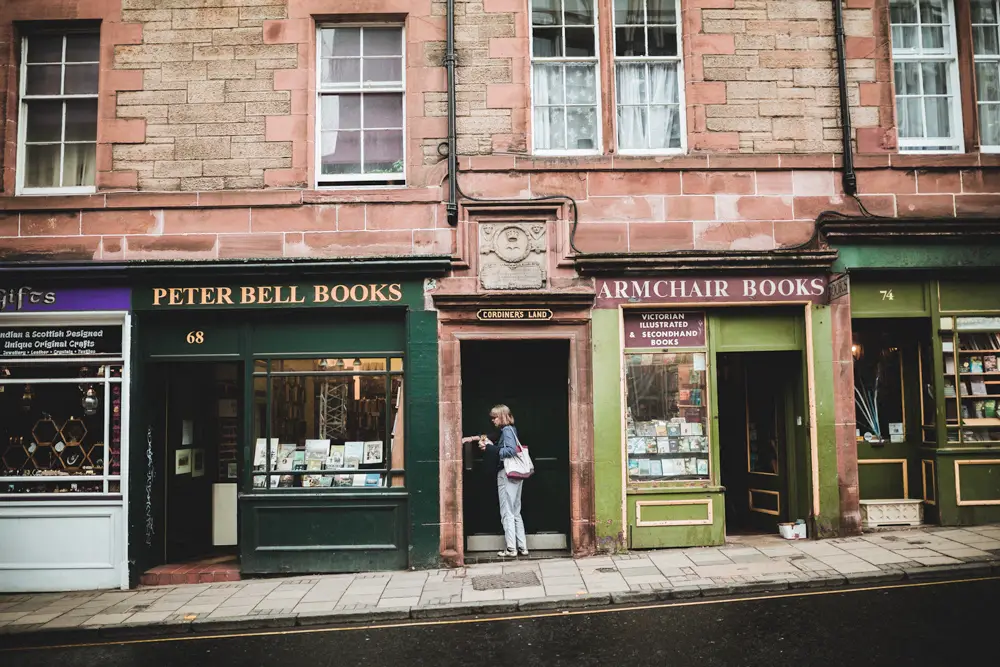
General Scotland Travel Tips + Tips For On The Road
21 | scotland is not england or a part of england. .
Some people get confused and think that Scotland and England are the same thing, or at least within the same realm, and that is totally false. Scotland is very much its own country and is a part of the United Kingdom, which is made up of England, Scotland, Wales (that make up Great Britain), and Northern Ireland. So, yes, Scotland is its own country and even the accents there are drastically different than they are in England.
22 | English is widely spoken, but you may not understand what they’re saying. Just ask them to repeat it again slowly.
Understanding a Scottish accent is going to get easier and easier as you spend more time in the country, but at the beginning, sometimes you really need to focus on what they’re saying to understand. If it all goes over your head the first time, just ask them to say it again more slowly, and don’t feel dumb or embarrassed for having to ask because some of those accents are thick!
23 | Dive into some Scottish slang words before you arrive.
With the heavy Scottish accents around, knowing a couple of slang words is both fun to know and good practice when you’re traveling to a new place. Some great words to know are wee, dram, bevvy, + tatties!
wee / wee bit | a little bit
Bevvy | a drink, juice | anything that isn’t alcohol (juice), ah dinnae kin | i don’t know, tatties | potatoes, awright | are you alright / i agree / yes, braw | good, blether | you talk a lot / you talk a lot of rubbish.
Eager to dive deeper into Scottish slang? My friend Graham from My Voyages Scotland has the PERFECT guide!
“Scotland has a whole host of different dialects from north to south and east to west. Event the Scots themselves can get a bit confused as someone from Stornoway may have a completely different saying for something that a Glaswegian has. Read this guide to Scottish Sayings before heading to Scotland to make sure you do not get lost in the many different regional sayings. And remember, everyone can always revert to ‘proper’ English if asked!”
24 | Cards are widely accepted, especially in major cities, but keep extra cash on you once you venture outside of them.
This is a travel tip that goes beyond just Scotland, but most of the time, the farther you are from a major city, the less likely they’re going to accept cards. It’s best to keep cash enough cash to last you at least a couple of days: not so much that if you’re robbed you’re screwed, but not so little that you’re screwed if they don’t accept cards.
25 | Don’t shy away from public transportation. It can save you a lot of money!
Every time I travel somewhere in Europe, I am blown away by the efficiency of their public transportation systems. Living in the US, basically, if you’re outside a city and don’t have a car you’re screwed, but this is not the case in Scotland! You can use buses or trains to get around and in between major cities and other places around the country and it’s a whole lot cheaper than renting a car! When you’re looking at how to get around, don’t forget to check out routes and prices for buses and trains!
26 | If you decide public transport is your way to get around Scotland, consider buying a Scotrail pass.
A Scotrail Pass is great if you plan on going all around Scotland via bus/train/etc.. There are multiple ticket tiers that you can buy for your individual trip, which you can view here , and they cover buses, trains, ferries, trams for whatever region you choose to buy your ticket for. It is quite useful whether you plan on hopping around a certain area or thoroughly traveling the whole country. It isn’t always the cheaper option, so compare rates before you buy to make sure it’s worth it for you.
27 | Taking the bus? Bring exact change!
The bus drivers don’t give change back if you overpay, so make sure that you have smaller coins to pay the transport fees! There are also day passes available for purchase so that you don’t have to worry about getting the change right every single time.
A lil Update | January 2020
I was notified via the comments from a traveler that visited Edinburgh recently and the bus drivers were able to give him exact change back for his ride! It looks like some changes are being made to help things run a little smoother, so an exact change may not be necessary as you can now pay with a card as well!
28 | Tipping is customary in Scotland, but the standard is 10%.
Tipping culture isn’t as widespread and stressed as it is here in the United States, but the standard is 10% for services, but there are some exceptions:

Taxis | Round up to the nearest pound
Hotels / tours | none, 29 | sales tax is included in all the prices, so you’ll always know exactly what you’re paying..
Unlike SOME places, ahem *cough* the United States, the prices that you soo on products and goods is exactly what you’re going to pay for that item. All the tax is included in the price so you don’t have to play guessing games as to how much something actually costs. This was a really nice switch coming from the United States and I’ve always wondered why we don’t do that ourselves… At any rate, this makes buying things SO much easier!

Tips On Scottish Food, Drinks + Culture
30 | the local foods and dishes are very interesting but try them, and then ask what they are or try veggie versions of them.
Haggis and black pudding are two foods that you for sure want to give ago while you’re in Scotland. I didn’t try them since I am vegan, but some of Edinburgh’s best vegan restaurants serve a veggie version of this dish that is quite tasty! If you’re not vegan, ask what the food is after you’ve tried it so it doesn’t steer you away from eating it. It’s all in the fun and mystery of experiencing Scotland!
31 | Get restaurant and meal recommendations from locals instead of eating at all the touristy restaurants.
Scotland’s cities are chalked full of incredible local and international cuisine; seriously, it’s some of the best food I’ve tasted! Not to mention, touristy restaurants are expensive, typical, and not as high-quality food than real local dives in the city. Food is probably, like, half the reason I travel to places so I looooooove trying new dishes and combinations while I travel. I know some people don’t care for the food in certain places, but if you can manage it budget-wise, try out local breakfast spots instead of the one offered at the hotel and go out of your way to find those special places!
32 | Indulge in the whisky and craft beers while you’re here.
While you’re in Edinburgh, make sure you pay a visit to the Scottish Whisky Experience ! They have a display of over 4,000 bottles of whisky and it is one of the seven wonders of the Scotch whisky world! Also, the Scots know how to party, so don’t shy away on having some fun and trying new drinks!
33 | When you order a scotch, don’t take it like a shot. It’s meant to be sipped and savored.
Many people make the mistake of ordering a scotch and tossing it down the hatch immediately, buuuuuuut you’re going to get some looks if you do that. Slow down and savor the flavors!
34 | The vegan/vegetarian food scenes in Glasgow and Edinburgh are some of the best in the United Kingdom! I had some of the best vegan breakfasts , coffees , and dinners while in Edinburgh!
I didn’t know if I was going to starve or indulge while I was in Edinburgh, and I am pleased to say that I indulged! There are many incredible restaurants that offer vegan, vegetarian, and gluten-free options for visitors, so check out the links above and scope out some awesome eateries!
35 | The men do wear kilts (do not call it a skirt) and the pattern on it is called tartan, not plaid!
Kilts aren’t a taboo thing in Scotland. In fact, each clan has its own specific tartan that has been passed down over generations! It’s not uncommon to see these on the streets of Edinburgh, but not everyone is going to be wearing them. Back in the 19th century, kilts became formal wear that was only worn for ceremonies, weddings, and sporting events, but they’re slowly making their way back into informal, casual wear, so expect to see them while you’re strolling around the cities and highlands!
36 | Whatever you do, don’t lift up a man’s kilt!
Well, okay, not that you would do that anyway, but don’t say I didn’t warn you (;
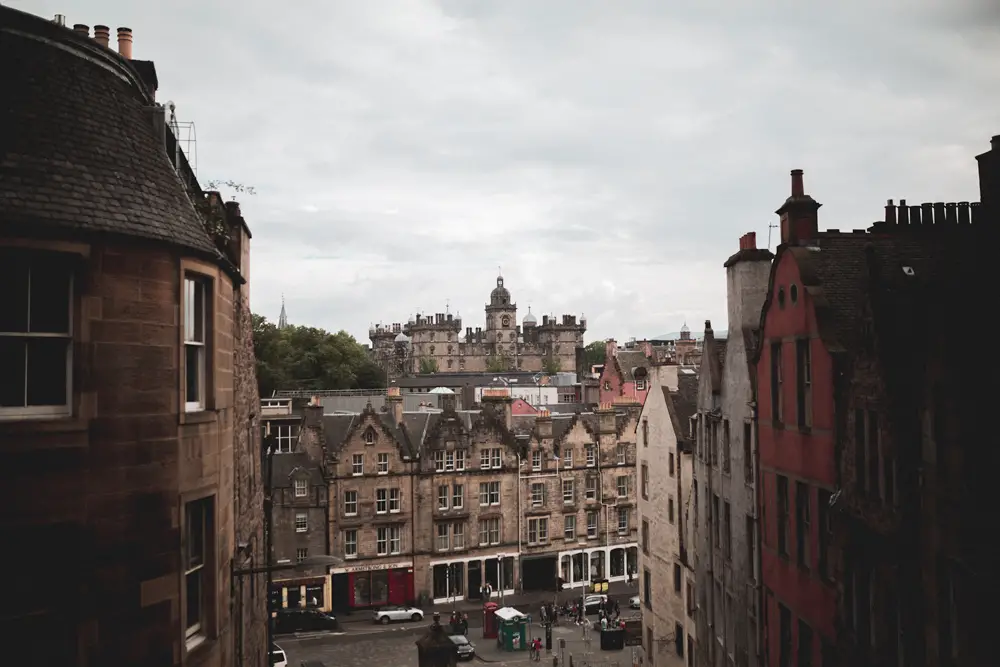
Tips For Visiting Edinburgh
37 | edinburgh is pronounced ed-in-burr-uhh, not ed-in-burg (i messed it up the first time too lol)..
Come to my surprise, and maybe yours as well, the g is silent in Edinburgh… I looked like a total goober pronouncing it with the g the first time I ever tried to say it, so make sure you the correct way, which sounds way cooler than what I thought it was.
38 | Avoid traveling to Edinburgh in the month of August unless you’re attending The Fringe Festival.
Edinburgh turns into an absolute zoo in the month of August from the Fringe Festival , so unless you’re planning on paying it a visit, I would avoid this month. The prices skyrocket, the crowds are massive, and it’s an all-around madhouse among the streets. Personally, there isn’t really a bad time to visit Scotland, much like most other countries around the world, as long as you pack the proper gear and attire! If you want to avoid crowds, go in the spring and summertime!
39 | Among your time in Edinburgh, consider a day trip to Glasgow. You don’t want to write it off your itinerary!
Glasgow is only an hour away from Edinburgh by bus, so make sure you head over there and roam around for a day. I wasn’t able to visit myself, but I know many people who love Glasgow over Edinburgh, and vice versa! Take the time to see both, indulge in both cultures, and decide for yourself!
40 | Stay in Airbnb’s and guesthouses over hotels to save money and experience Scottish culture. You’ll also want to book this in advance as they fill up fast!
Hotels are more than likely going to be close to the Royal Mile, AKA expensive, so I recommend renting out a flat or apartment through Airbnb to get a feel for local life, save a bit of money, and have a unique experience! That isn’t to say that this is an uncommon practice, so book as soon as you can! These places book up fast!
41 | Edinburgh is a busy, popular city year-round, so get to more touristy places, like Edinburgh Castle, as early as you can to avoid crowds.
I believe we can all admit that a large crowd can really damage an experience, that is unless you’re attending an awesome concert, so I suggest that you get to popular places like Edinburgh Castle, The Royal Mile, St. Giles Cathedral, The Elephant House, Arthur’s Seat, and many other popular destinations either when they open or as early as you can. This tip is more stressed in the summer months since those are a lot busier than other times of the year, but I always think this is a great practice to have no matter where you’re traveling to! Early bird gets the worm (and the best photos)!
42 | Walk the Royal Mile more than once. You’ll see new things every single time.
Since I was in Edinburgh for a tournament, I walked up and down the Royal Mile multiple times and I saw new shops every single time. There is so much you miss and look past if you only walk it once, so if you can manage the time and are up to hunt down some wee shops, do it! You’ll find some true treasures! If you only have a day in Edinburgh , use that time to explore as many of the treasures of the city that you can! There is a lot to see!
43 | Explore the outskirts and small villages of Edinburgh like Leith and Stockbridge. You’ll escape crowds and feel like you’re in a fairytale!
If you’ve ever imagined a Scottish fairytale, Leith and Stockbridge are those imaginations coming to life. These villages are quaint, floral, adorable, picturesque, and everything in between! The best part is that not many people roam out to these two spots, so you’ll be able to see the quieter towns and sides of Edinburgh!
44 | Get lost and take the stairs.
There are many ‘closes’, random stairways, and other corridors that are begging for people to come and get lost in (in a good way). If you see a small alleyway or staircase going down somewhere, GO! It is going to lead you to some awesome, hidden and beautiful parts of the city!
45 | Geek out at all of the Harry Potter spots in the city: Greyfriars Kirkyard, The Elephant House, Spoons.
If you didn’t know already, J.K. Rowling wrote and gathered inspiration for Harry Potter right in the heart of Edinburgh! I can understand how because it’s hard not to be inspired in a city like this! If you visit the Greyfriars Kirkyard, you’re able to see Professor McGonagall and Tom Riddle’s gravesites, which are known for being an inspiration for these characters! Also, you can pay a visit to The Elephant House, which claims to be the birthplace of Harry Potter, but it is more likely that she wrote the first book of the series in a cafe called Nicholson’s own by one of her relatives at the time, which is now called Spoons. The Elephant House tends to be extremely crowded, so if you want to avoid that, but still feel the magic, pay a visit to Spoons, instead!
46 | Spend a night watching a classic or modern film at The Cameo Picturehouse.
The Cameo is one of the oldest cinemas in Scotland that is still in use! It was built back in 1914 and most, if not all, of the original decor, has either been restored or kept as is. If you want to take a deep dive into a taste of what life was like back in the 1910s/20s, pay a visit here and step back in time!
47 | Avoid the typical tourist souvenir shops and get a handmade souvenir while you’re in the highlands, Isle of Skye, or other parts of Scotland.
Most of the souvenirs on the Royal Mile are massed produced, overpriced wares that are not worth holding your memories of Scotland in. Once you venture out into the highlands and more remote parts of Scotland, find a local artist or artisan that you can buy a unique souvenir from, such as pottery or a piece of art. This way you’re giving back to the local community and you have something more special than, let’s say, a t-shirt or shot glass.
48 | If you’re there on a weekend, go to the farmer’s market to try local produce and local vendors!
Heading to the Edinburgh Farmer’s Market on a fine Saturday morning was one of my favorite things I experienced during my entire time in Edinburgh! I ate some drool-worthy vegan food, bread, and even picked up some skincare items that I loved every last drop of! I recommend picking up some Scottish strawberries and tomatoes and sourdough from the local bakery vendor. The market is right under Edinburgh Castle so it’s a great place to visit after you’re done exploring the quarters.
49 | DO visit one of Edinburgh’s festivals!
Indulge in art, music, and movies during the Fringe Festival or party like there’s no tomorrow at the Hogmanay Festival ! If there is one thing for sure, the Scottish sure know how to host a party!
50 | If you want to get really crazy, hit up Scotland’s Viking Festival, Up Helly Aa , in Lerwick, Shetland!
This party is so wild that people even say its bigger than Christmas… Yes, CHRISTMAS. Must be pretty off the chain if you ask me! It normally takes place in January each year and is filled with fire, food, and fury! If you need any information about the festival, that is linked above and if you need information on staying and getting to Shetland, then you can visit their tourism website here for all the information!
LOOKING FOR MORE SCOTLAND TRAVEL RESOURCES? CHECK THESE OUT:
– The Best Time To Visit Scotland
– The BEST Scotland Packing List For Summer
– The Ultimate 10 Days In Scotland Road Trip Itinerary
– 10 Tips For Traveling Scotland On A Budget
– 72 Hours in the Isle of Skye
– Hiking The Old Man Of Storr: The Isle Of Skye’s Crown Jewel
RESOURCES FOR VISITING EDINBURGH:
– 3 Days In Edinburgh: The Ultimate Itinerary for Edinburgh, Scotland
– The 8 Best Day Trips From Edinburgh You CANNOT Miss
– The 10 Best Hostels In Edinburgh For A Magical Stay
– The Best Coffee Shops In Edinburgh: 15 Cafe’s You Can’t Miss
– The 10 Best Mouth-Watering Vegan Restaurants In Edinburgh
– The Top 15 Places To Get A Vegan Breakfast In Edinburgh
Do you have any useful tips for traveling Scotland? Share with me in the comments below!
Did you find these Scotland travel tips helpful?

Sample Content

Leave a Comment Cancel reply
Your email address will not be published. Required fields are marked *
18 comments on “ 50 Scotland Travel Tips For An Unforgettable Trip ”
I love that you list all of these great travel places and the comes my humble state of Utah. Most out of country (and state for that matter) don’t realized how beautiful it is. From desert to mountains, we have it all. The red rock areas are the most beautiful. Can’t wait to see your travel tips for us. Just now reading your travel trips for Scotland which is my most favorite place on earth.
Hi Marcia! Scotland has been one of my all-time favorites as well (: What place was your favorite that you visited?
Scotch, ie the drink that can only be made in Scotland, is named WHISKY not whiskey (that’s all the other stuff).
Thank you for the clarification! (: It’s revised
Edinburgh in August is a must in order to attend the Military Tattoo
I only didn’t recommend it since it can get so crowded, but I definitely recommend going in August if that’s what someone is interested in (:
Such helpful tips. Scotland is definitely beautiful. Can’t wait to visit it soon
I am stoked to go back as well! I cannot wait till we can explore again!
#32 what’s all this whiskey stuff?
Scotland is an incredible destination for whisky drinking and sampling (:
Loved reading this! Been living in Edinburgh for half a year now and have yet so much more to explore in Scotland!
What’s your favorite place in Edinburgh?! That’s awesome that you have so much time to see the city!
I loved Scotland so much and hope to go back one day! Your pictures really made me wish that one day comes soon.
I’ve been keen on another visit myself! There’s just so much to see!
Love these helpful tips. Also, your Scotland photos are stunning; thanks for the inspiration!
I’m glad you enjoyed it and my photos (:
I really enjoyed your article! One thing I’d like to mention though, when I was in Edinburgh this past Sept, the local busses did actually make change for me. I guess it’s a relatively new thing. They also took credit and debit cards. And excellent tip about the sim card. I wish I had thought of that before we went!
Oh, thank you! It looks like they are implementing some changes! I’ll go ahead and put a note for it (: + yes SIM cards are my favorite way to stay connected while I travel!

Follow my adventures on Instagram
Are we friends on Instagram? It's where I share some of my best tips, videos and day-to-day life in Scotland!

50 Scotland Travel Tips For Travel In 2024
Categories Planning a trip to Scotland , Scotland , Scotland Guides

One of the things I love about travelling to another country is discovering the different ways they do things. Scotland is no exception, and after living here for almost six years, there are still things that surprise me when travelling this bonnie country. In this guide, I’m sharing 50 Scotland travel tips that will save you time, money, stress, and embarrassment- and help you have the best trip ever.
Table of Contents
Scotland is an old country with a plethora of history – this is one of the very reasons it attracts travellers from countries like New Zealand, Australia, the USA, and Canada, who live in relatively younger countries. As a Kiwi myself, I was drawn to Scotland because there were many things I couldn’t experience in New Zealand, such as castles built in the Middle Ages, Roman forts and ancient battlegrounds, and narrow country lanes that lead to tiny cottages built from horse hair and stone.
In my Facebook group, Scotland Travel Tips , many of the same questions about planning a trip to Scotland are asked. This inspired me to answer all of these questions, and offer other advice I think will be helpful to you when travelling to Scotland.
If you find this blog post helpful – make sure you share it!
This is the seventh article in my Planning A Trip to Scotland series . To read the first article in the series, click here . To receive all the articles in this series by email, you can sign up here .

My name is Yvette Webster – I chased my ancestry to Scotland, ended up meeting a Scot and falling in love, and now I live here with my husband, our son, and our dog, Angus. I’m a full-time Travel Writer, and I travel Scotland for a living, writing helpful guides and helping people plan their trips to Scotland via my blog and travel consultation service .
My favourite type of travel in Scotland is discovering the hidden gems and visiting the more off-beat places. In 2018, I was the first solo female to thru-hike the Scottish National Trail , an 874-kilometer / 536-mile hike that runs the length of Scotland. I got to know Scotland on such an intimate level and visited many places that tourists and locals never see – and I love encouraging people to get off the beaten path and explore the lesser-known places!
I have a degree in journalism and used to work as a travel agent. I combined my two passions and created my blog, Wayfaring Kiwi . I also run the popular Facebook group Scotland Travel Tips .
Need help planning your dream trip to Scotland? Sign up to our Planning A Trip To Scotland course which will walk you through planning your itinerary and booking your trip step by step!

50 Scotland Travel Tips You Need To Know
Planning your trip.

The Machrie Moor Standing Stones
1. If you are in the stages of planning a trip to Scotland, be sure to read my blog post on planning a trip to Scotland . It gives you a great introduction to planning your trip, including things to do, car hire, using public transport, how to book accommodation and activities, and more!
Read it once you’ve finished this article.
2. Be sure to include at least ONE hidden gem in your itinerary. Some of my suggestions include South-West Scotland , the Scottish Borders , the Cowal Peninsula, an island that isn’t the Isle of Skye, the Moray coast , and Aberdeenshire .

The Peebles Cross Kirk in the Scottish Borders
3. Slow down! One of the most common mistakes people make when visiting Scotland is that they try to attempt too much in their itineraries.
Choose 2-3 main activities per day, and have backup activities in mind in case you have some extra time. Scotland is a country to be experienced at a slow pace – and remember, you can always come back someday to check everything off your bucket list!
4. Tipping isn’t compulsory in Scotland, however, it is common practice. Wait staff are paid much better wages than you’d get in the USA and Canada , hence why tipping isn’t expected, however, I always leave a 10% tip or round the bill up to the nearest 5 or 0.
I also tip taxi drivers and Uber Eats/Just Eat drivers £1. You don’t need to tip every time you get a drink in a pub, just leave a tip of a few pounds when you leave.

5. Are you wondering when is the best time to visit Scotland? This varies from person to person, however, I personally love travelling around Scotland in April and May . It’s spring and Scotland is colourful, there are fewer crowds, there aren’t many midges around, and accommodation isn’t as expensive as it is during the summer months. The daylight hours are also better balanced.
I’ve written an in-depth blog post about the pros and cons of visiting Scotland each month , which will help you decide when is the best time to visit for you.

Edinburgh in spring
6. Terrified of the Highland midge? You really don’t need to be! But it’s a good idea to be prepared.
- Midges start appearing in late June and die out with the colder weather (usually around the end of September ).
- They hang around bodies of water, and usually appear in the morning and early evening when it’s cooler. If there is a slight breeze, this will blow the midges away so they won’t bother you.
- Only the females bite, and you’ll notice itchy bumps on your skin (similar to mosquito bites) if you’ve been bitten.
- You’re most likely to encounter midges if you are hiking or walking near rivers or lochs.
- You won’t generally encounter them in the cities, unless you’re near a river or canal.
- I recommend buying a few cans of Smidge to keep the midges at bay if you think you might encounter them on your travels. You can buy this in most grocery stores and outdoor shops.
My husband, the Haggis, wrote a great guide on how to avoid midges .

The Grassmarket in Edinburgh
7. Scotland has a large tick population, and to be honest, ticks worry me more than midges! Ticks can cause Lyme disease, but don’t panic because less than 10% of these beasties actually carry the disease. It’s still important to take steps to avoid a tick bite, however.
- You’ll encounter ticks in many parts of Scotland from March to October .
- They cannot jump, but will attach themselves to your clothing if you are walking through long grass. They will climb up your body until they find a warm, damp spot (for example, an armpit or belly button) and burrow into your skin for dinner!
- Smidge will also repel ticks – be sure to reapply it every couple of hours.
- Be sure to do a tick check when you get home if you’ve been in an area known to be rife with ticks, or you’ve been hiking.
- Some good news – I’ve been bitten by ticks many times while hiking in Scotland and I’ve been fine. Don’t let the fear of ticks stop you from hiking! Just use a good bug spray, and wear long pants when hiking in Scotland.
8. The Isle is Skye is a lovely island but it suffers from over-tourism. Personally, I wouldn’t visit Skye during the busy summer months. My favourite time to visit Skye is in April or November when it’s quieter. If you’re visiting during the summer, I recommend pre-booking your accommodation, restaurants, tours and activities that require a booking as soon as you know what dates you’ll be there . All of these things, especially accommodation, get booked up months in advance.
As a general guide, book your accommodation and tours 8-12 months in advance, and make restaurant reservations 1-3 months in advance. Not all restaurants will take bookings three months in advance- but some of the popular ones do. It’s better to be over-prepared when planning a trip to Skye so you don’t miss out!
9. Many people think that in Scotland we still live in the dark ages, due to its long history and the pretty medieval-looking photos that marketing and tour companies love to share. Scotland is an advanced country, and we have everything that most Western countries have – including pharmacies where you can purchase most medicines that don’t require a prescription. Don’t worry, you’re not travelling back in time when you visit Scotland, even if the buildings do look old!

Exploring the Christmas Markets in Glasgow
10. If you want to use your phone in Scotland, first, check with the phone provider you’re with to see what they can offer you.
If your phone is unlocked, you can purchase a sim card when you arrive in Scotland. The main sim cards you can purchase in Scotland are Vodafone , Three , and EE . You can purchase these from a phone store (such as Carphone Warehouse ), a grocery store, corner shops – many places around Scotland.
For around £20, you can purchase a sim card on a 1-month plan that will give you around 4GB of data and unlimited texts and calls in the UK. If you’d like to keep in contact with your family back home, I recommend using the apps WhatsApp or Telegram to make texts and calls – these apps are free to use and all you need is data or a Wi-Fi connection!
If you purchase your sim card in England or Wales, it WILL work in Scotland, and vice versa.

Stirling Old Bridge and the Wallace Monument
11. If you are a tourist visiting Scotland on holiday and you require medical treatment, you will most likely have to pay for it. This is why I ALWAYS recommend purchasing travel insurance for your trip.
Residents in Scotland receive most medical treatment for free, because the National Health System (NHS) is funded by the taxes we pay.
So how much medical cover should you get through your travel insurance? Usually, 1 million + will give you enough cover.
12. Did you know there are 15 regions in Scotland? While it’s difficult to visit every region on one trip to Scotland, you can learn what each region has to offer and which ones you should visit in my guide to the regions in Scotland .

13. The most typical itinerary in Scotland (the most touristy one) is Edinburgh – Isle of Skye – Inverness and back to Edinburgh or Glasgow. I jokingly call it the ‘tourist triangle’!
This itinerary is absolutely fine if you want to hit all the tourist hotspots – but believe me when I say there is SO much more to Scotland than just this route. I always recommend getting off the beaten track at least ONCE during your trip to Scotland – because (trust me on this one) these areas are the ones that will be most memorable.
During my first trip to Scotland (you can see the itinerary right here ) my favourite memory was driving to Lochaber to see my ancestor’s castle, Achnacarry .
Bonus tip: Make sure you check out my Scotland Travel Deals page for discounts on tours, experiences and accommodation.
Packing For Your Scotland Trip

14. Are you wondering what to pack for your trip to Scotland? I’ve written a comprehensive guide on what to pack and wear in Scotland . I include recommendations on what I wear day to day for each season. Give it a read as I cover virtually every topic in this guide!
15. You do NOT need to pack waterproof pants unless you’re planning a multi-day hike or if you’re going hiking in the pouring rain. A rain jacket that covers your bum will be absolutely fine. I’ve written a short guide on the weather in Scotland that discusses how to dress for the rain in Scotland. I also debunk a few Scottish weather myths.
16. Facecloths/washcloths/flannels aren’t something that accommodations provide in Scotland, so if you like to use them be sure to bring some from home. Do not pack disposable washcloths – think of the environment!
Currency and Money In Scotland

17. How much cash should you bring to Scotland? Most places in Scotland accept major credit cards, such as Visa and Mastercard . American Express isn’t often accepted due to the high fees carriers have to pay.
Contactless payments are the preferred choice in Scotland, and Apple Pay is accepted almost everywhere. It is still worth carrying some cash with you, as there are still some places that accept cash only – usually small, independent shops that are located in remote areas.
It’s also useful to have some cash for tipping or paying for the bus (although contactless is now accepted on many buses in Scotland). I recommend carrying £200 cash at a time, and topping this up whenever you need to by withdrawing money from an ATM.
A note: Always check with your bank to see what they will charge you for withdrawing cash from an ATM in Scotland.
18. Money changers don’t give you a good exchange rate (they have to make money somehow!). If you would like to bring cash with you to Scotland, I recommend going to your bank and purchasing currency there.
Whenever I travel overseas, I just use my credit card and withdraw cash from the first free cash withdrawal ATM I find. There are many free cash withdrawal machines throughout Scotland that will give you a much better exchange rate than a money exchanger or bank.

19. A note on Scottish and English money. You can spend English pounds in Scotland – but you may not be able to spend Scottish pounds in England.
It’s a complicated issue – albeit a stupid one, seeing as both Scotland and England are part of the United Kingdom where the currency is the ‘Great British Pound’ (GBP). Basically, there are three banks that print money in Scotland – the Bank of Scotland, Royal Bank of Scotland and Clydesdale Bank – and England has its own printers.
To save yourself the stress, you can use English pounds everywhere in the UK, but try to only spend Scottish bank notes in Scotland.
You cannot use Euros or USD in either England or Scotland.
Flying To Scotland

20. Book your flights directly with the airline. I use Skyscanner to see which routes are available and which airlines have the better/cheaper deal. Then I go to the airline’s website to book directly. This means that if there are any changes or cancellations to your booking, you can contact the airline directly for a solution, rather than going through third parties.
You can also book flights through a travel agent (they usually book directly through the airline too). Travel agents usually charge a fee to do the booking on your behalf, but they will also deal with the airline on your behalf if there are any issues.
21. Search for flights into Glasgow , Edinburgh , and Inverness . These are the main international airports in Scotland. You can also search for flights into London, and catch the train to Edinburgh, or book an internal flight to one of the Scottish airports. I recommend catching the LNER train and travelling First Class between London and Edinburgh/Glasgow- I love the journey!

Culzean Castle in South West Scotland
22. I recommend booking your travel with the same ticket or airline all the way to your final destination. That way, if there’s a delay and you miss your next flight, the airline will bump you onto the next flight.
Delays and flight cancellations are unfortunately pretty common now, so be prepared if something like this should happen.
23. Pack your valuables and essentials in your carry-on, just in case your luggage is delayed. Be sure to take a photo of the inside of your checked luggage too – in case you need to do an insurance claim for lost luggage.

Finlarig Castle in Killin
24. Try not to stress or worry too much about travelling to Scotland – worry is one of the most pointless emotions because we can never predict the future. To help curb the worry, be as prepared as possible. I believe things happen for a reason – especially delays.
Whenever I’ve experienced a delay in life, it has always been for a reason – delays have allowed me to capture the most beautiful sunsets, meet lifelong friends, and have even better experiences. My first trip to Scotland was cancelled – if this hadn’t happened, I would have never met my husband!
Accommodation in Scotland

25. Should you book your accommodation in advance or wing it? My advice is to always book your accommodation in advance . Covid-19 has changed the way we travel in Scotland, and there is a lot of pent-up demand to travel here. As soon as you know where you’re going, book your accommodation. There are limited choices even when booking 3 months in advance!
26. I use Booking.com to search for accommodation in Scotland. This website has the largest range of hotels, bed and breakfasts, and self-catering accommodations for Scotland. I will always compare the price on Booking with the accommodation direct and book the better deal/price.

The Border Hotel in the Scottish Borders
27. If booking your accommodation with Booking.com – make the booking on your mobile. They sometimes have mobile-only specials that will save you more money!
28. Top sheets aren’t really a thing in Scotland. A bed usually has a fitted sheet, with the duvet on top, and sometimes an extra blanket for extra warmth. Just go with it.
Food and Drink

A fish supper/fish and chips in Scotland
29. Should you book all your restaurants in advance? In some places – yes. Here are the areas I recommend you pre-book:
- Most restaurants on Friday and Saturday night from May- September (book a couple of weeks or several days in advance)
- Edinburgh (on weekends in the summer in particular) at least 1-2 weeks in advance
- The Witchery By The Castle. This restaurant in Edinburgh is hugely popular with tourists, so I recommend you make a booking one month in advance or earlier to ensure you get a table for dinner. You can make a booking via their website .
- The Isle of Skye during the tourist season (May – September) at least 2 weeks in advance
- Small villages that only have a few restaurants
Don’t go overboard with booking everything – my advice is to book the restaurants that are must-visits for you, and leave some time for you to discover hidden gems on your travels. If you spot somewhere you might like to have dinner during your wanderings, pop in and see if there’s a table available for that night or the following night.

The Witchery By The Castle in Edinburgh
30. Haven’t got a restaurant booking? Try to eat outside the peak times. I’ve secured tables without having a booking at some of Scotland’s most popular restaurants by eating outside the peak times in summer:
- 10am -11.30am for brunch/lunch
- 2.30pm – 4pm for lunch
- 4pm – 6pm for dinner
31. A nice backup plan to have is to visit a local grocery store and pick up some local food from there. Enjoy a picnic in a scenic spot, or take it back to your accommodation (this is when self-catering accommodation comes in handy!).

Kilchoman beach whisky tasting
32. Try the following local Scottish food and drink:
- Full Scottish Breakfast (tattie scones will change your life)
- Steak Pie with Roast Tatties
- Cullen Skink
- Scotch Pies
- Scottish seafood from one of the many seafood restaurants on the coast or the islands
- Fish and Chips
- Scone with jam and clotted cream (in that order)
- Sticky Toffee Pudding
- Porridge with whisky (popular on Islay)
- Whisky (try a whisky from each whisky region – Lowland, Highland, Speyside, Islay and Campbeltown).
- Irn Bru (fizzy drink/pop)

A traditional Scottish steak pie is something you must try in Scotland
33. The most common grocery stores you’ll find in Scotland are Tesco, Sainsbury’s, ASDA, Morrisons, Aldi, Lidl, Marks and Spencer (M&S) , and Waitrose . Co-op stores (similar to a 7/11, dairy, or corner store) have a good range of basic groceries, and you’ll find these in most towns and villages. Spar is another brand that carries basic groceries.
34. Most of the grocery stores above will have a £3 meal deal, which includes a sandwich, snack and a drink. These are very popular, and great to pick up if you have a long drive or hike planned. Look out for these meal deals in a refrigerated section.
35. The vast majority of pubs and restaurants in Scotland cater to all dietary requirements and will have gluten-free, dairy-free, and vegan options. There are some fantastic vegan restaurants in Scotland – use the Happy Cow app to find vegan-friendly restaurants.
Driving and Transport In Scotland

One of Scotland’s steepest roads – Bealach na Ba
36. Fuel (petrol) is currently priced from £1.55 per litre. Yes, it’s expensive at the moment!
37. If you hold a full driving license from your country of residence you can hire a small vehicle and drive with that license in Scotland. You generally do not need an international driver’s license . If your driver’s license is not in English, you may have to apply for an international driver’s license or have an English translation available.
You can take this quiz you can take to determine if you can drive in Scotland on your current license.
38. I recommend driving for a maximum of three hours a day . Any more than that, and you’ll get bored of being in the car and you won’t see much!

The famous Kylesku Bridge on the North Coast 500
39. Waze and Google Maps are popular driving apps to help you navigate Scotland. They will give you a general idea of how long it takes to get from A to B, but I recommend always giving yourself extra time to reach your destination.
For example, it takes around 3 hours to drive from Edinburgh Airport to Inverness without stopping. If you’d like to stop and see the sights along the way, I would recommend allowing yourself 5-6 hours for the drive and sightseeing along the way. As a general rule, double your driving time if you plan on stopping along your driving route.
If you don’t plan on making any stops, add an extra 15 minutes to every hour it says it will take you to reach your destination. This will allow for traffic, road works and other common delays.

Travel by train in Scotland
40. The roads in Scotland are typically narrower than roads in the USA, Canada, New Zealand, and Australia. Many roads in the countryside or more remote areas are single-lane, and some of the roads are made of shingle!
There are passing places on these single roads – and the rule of thumb is that you should pull into a passing place if it’s on your left. If its located on your right – stop next to it and let the other car pass by driving around you.
A quick wave of thanks is always appreciated if someone stops to let you pass by.
You will have to drive more slowly on these roads, so when looking at a map of Scotland, even though she looks like a small country, it does take you longer to drive to your destination than you’d assume!
For more tips, read this guide on driving in Scotland for the first time .
Did you know that we provide private driving tours in Scotland ? We can organise a day trip or multi-day tour for you and take you wherever you want to go! Visit our website Kiwi and Haggis Tours for more information.

The Hop On, Hop Off bus in Edinburgh
41. Car hire gets booked up very quickly due to the high demand for travel to Scotland. The price of car hire has also increased drastically since the pandemic. Be sure to book your car hire well in advance. I recommend Celtic Legend or Auto Europe (a car rental comparison site) for booking your car hire.
42. If you’re using public transport, you can purchase train tickets and bus tickets 3 months in advance.
How To Not Look Like A Tourist In Scotland

43. A note on your Scottish ancestry – some Scots will roll their eyes if you bring up that you’re related to Mary Queen of Scots or Robert the Bruce *.
Some Scots also don’t like it if you claim you’re Scottish, but were born and raised in another country. I’m telling you this so you can be prepared if, in the middle of a conversation, you proudly announce your Scottish heritage and you get a muted response. This has happened to me plenty of times! I don’t take it to heart – I’m proud of my Scottish ancestry, and it’s the reason I became so interested in visiting Scotland in the first place.
I think it’s great that so many people feel passionate about their Scottish heritage and want to visit their ancestral home. This has done wonders for Scottish tourism – and has kept the history and culture alive all around the world. Just don’t expect others to be as excited as you are!
*Fun fact: I actually am related to Robert the Bruce! He’s my 23x great-grandfather and I love visiting areas in Scotland where he once visited.

Sitting next to my 5x great grandfather’s grave in Scotland
44. Don’t make assumptions about the Scots – they don’t all drink whisky, play the bagpipes down at the local pub, speak Gaelic, eat haggis, and travel via standing stones.
Think of it this way – what’s an annoying stereotype from your country? What annoys you about tourists when they visit your country?
Modern Scotland is different from what is marketed around the world. Most Scots will choose beer or wine over whisky, go out for dinner at an Indian/Italian/Chinese restaurant, and jet off to Europe for a sunny holiday.
On the flipside, many Scots are proud of their history, and love to chat about it too – especially those who work in the tourism industry.
Be open-minded when you visit Scotland – learn about modern Scotland too – it’s pretty interesting!

Hanging out on the Isle of Islay
45. I don’t want the above two points to make you feel uneasy about visiting Scotland, because the Scots are some of the kindest, most hospitable people on earth! They have amazing wit, are generous, and love to have a good time.
Try staying in a bed and breakfast, to experience Scottish hospitality at its finest!
Read more: 10 Must-Sees in Scotland You Can’t Miss
46. The Scots are passionate about sustainability and looking after the environment – so my advice is to think carefully about what you pack and use during your trip to Scotland. Do not pack or use single-use products, such as make-up wipes, cotton buds, and plastic bottles.
Instead, pack reusable facecloths, a water bottle, reusable shopping bags, and washcloths (or just use your hands!). Please recycle when in Scotland – if you can’t find a recycling bin, just ask a shop, pub, or restaurant if you can use theirs!
For more helpful hints, check out my blog post on tips for sustainable travel in Scotland .
Important, Final Scotland Travel Tips

47. Join my Facebook group, Scotland Travel Tips , if you haven’t already. There is plenty of helpful information to help you plan your trip in this group – be sure to use the search function to find information on the area you want to visit.
48. If you’d like a shortcut to planning your Scotland trip, I created the Ultimate Scotland Travel Bundle which contains an eBook, 70-page printable planner, and 7 must-see Scotland travel planners which list all the must-sees in Scotland’s major tourist destinations. It will save you hours and hours of searching the internet (and wading through misinformation!).
49. My most comprehensive product for Scotland planning is my Planning A Trip To Scotland course . This course features over 70 videos and covers every aspect of planning your trip- from creating your itinerary, to booking your trip, learning how to get around using public transport, money saving tips, travel inspiration and so much more! I created it with my friend and Lonely Planet Scotland writer, Kay from The Chaotic Scot. Between us, there is nothing we don’t know about Scotland travel!
👉 Buy the Planning A Trip To Scotland course

Carrick Castle, a hidden gem in the Cowal Peninsula
50. And finally – have a great time in Scotland! I have a saying, and that is it’s impossible to plan a bad trip to Scotland .
After reading this article, you now know the most common questions that travellers ask – so you are already equipped with some solid knowledge on travelling to Scotland!
Try not to stress if you don’t get everything ticked off your bucket list, or if your flight is delayed – Scotland has a magical way of bringing you into the present moment and enjoying what’s in front of you.
Have an amazing time in Scotland, and please share this article if you found it useful!
Are there any tips you’d add to this list? Leave a comment below and help out your fellow travellers!
This is the seventh and final article in my Planning A Trip to Scotland series . Sign up here to have the whole series emailed to you.
Related posts

Vickie Wyatt
Saturday 16th of March 2024
Congratulations on new baby, seeing Scotland has been a life long dream, I’ve never traveled except neighboring states and we drove, it is a gift from my nephew and we are traveling together. And driving in Scotland. I too have Scott ancestry paternal 2 x great grandfather James Bankhead. During my travel research I was surprised at how many places and areas called Bankhead,the only thing I know is most family were miners including my dad Roy Bankhead was a coal miner, but I’m not doing any ancestry research I just want to see Scotland, I’m so happy to have this opportunity I don’t care if we have any hiccups. We have a few places I want to see but the rest is whatever we decide to see.
Wednesday 18th of October 2023
Thanks for the tips........these will come in handy when make plans.
Frenney Olivia Lobo
Tuesday 10th of October 2023
Hi Yvette, very informative article and Scotland is a very welcoming and beautiful country - greenery, clean air, clean roads, clean everything. I would like to add a point here as I am guessing this article is from covid times. I travelled to Scotland in Sep. 2023 from Dubai, UAE to Aberdeen airport.
My friends in Scotland told me that Scottish currency notes are accepted in England too now (worth a check). I was skeptical of bringing Scottish currency to UAE for exchange however I was also able to exchange it at the exchange house (though not at the Dubai airport) and got the same exchange rate as GBP sterling.
To travel by train and book tickets I used the "train app" and it came very handy, hassle free and paper free.
To the edible must try list you could also add the fruit jams with whisky, gin or champagne and the fruit flavoured delectable homemade gins from the distillery (I got from Stirling Distillery)
Scotland is very beautiful and anyone who loves nature, tranquility and the countryside would quickly fall in love with this place. Hope to visit again - “Haste ye back”
Warm regards,
Saturday 14th of January 2023
Hi I'm coming over this April I want to see as much as I can in the month I'm there
Laura Weems (Clan Wemyss)
Thursday 1st of September 2022
I absolutely love your blog! Is there a way to follow it, get email updates, etc? Thank you!
Yvette Webster
Monday 5th of September 2022
Aww thank you- you certainly can, the best thing to do is sign up to my newsletter: wayfaringkiwi.com/sign-up/ xx
Hi Laura, I give regular updates on my Facebook page and Instagram account (instagram.com/wayfaringkiwi11) and I also send out regular Scotland newsletters! You can sign up for that here: wayfaringkiwi.com/sign-up/
- WATCH ME SEE | A SCOTLAND TRAVEL BLOG
- Privacy Policy

- Itinerary Review
- Ready-Made Itineraries
- Bespoke Itineraries
- Planning Your Trip
- Scottish Regions
- Free Checklist
- Scotland Itineraries
- All Blog Posts
- Where to go?
- Scotland Resource Library
- Scotland Travel Journal
- Meine Schottland Bücher
- About Watch Me See
- Work with Me
- In the Press
Scotland , Travel Tips
70 useful travel tips for scotland.
Scotland is a dream destination and a trip here has great potential to become a life-time memory. But planning can be overwhelming when you’ve built up a destination so much in your head. These 70 useful travel tips for Scotland will help you get the most out of your trip!
This post contains affiliate links from which I may make a commission. Find out more here . All opinions are my own.
Whether you are a seasoned traveller or just dabbling in globetrotting as a lifestyle, it is always a good idea to read and learn as much as possible about the destination of your next trip.
Scotland is no different!
While Scotland is pretty compact and fairly straight-forward to navigate, especially for first-time travellers , you can’t go wrong reading up on the ins and outs of travelling this country.
Need help with your trip? Hire me to review your itinerary or to plan a custom route for your trip!
The 70 travel tips on this list will…
- Prepare you with facts that are good to know before you go ,
- Offer tips for planning every detail of your trip at the right time,
- Provide an overview of transport options ,
- Give you plenty of inspiration for your itinerary ,
- Help you figure out how to navigate facilities along the route ,
- Sum up my top tips for visiting Edinburgh and Glasgow ,
- Tell you tips for visiting castles and other tourist attractions,
- Help you with some packing tips ,
- Provide tips for engaging with Scots and Scottish culture ,
And make you chuckle from time to time!
Download my free Scotland Trip Planning Checklist to make sure you don’t forget anything important!
Table of Contents
Scotland FAQ: Good to Know Before your Trip
1. scotland is its own country, but it’s not independent from the uk (yet).
Don’t call Scotland “England”.
Scotland is a sovereign nation that is part of the United Kingdom, alongside England, Wales and Northern Ireland. Scotland has its own parliament and a First Minister who leads the Scottish government. However, many decisions are made by the British parliament down in Westminster which is dominated by English “Members of Parliament” (MPs).
The Question of Scottish Independence :
In 2014, Scotland held an Independence Referendum to discuss the question of Scottish independence. At the time, the majority of the country voted to remain in the UK. However, there still is a significant independence movement in the country and a strong sense of national pride – especially after the 2016 EU Referendum (Brexit was not supported by the majority of Scots).
In 2022 the First Minister of Scotland, Nicola Sturgeon has proposed that another Independence Referendum should be held on 19 October 2023.

2. You might experience a “Language Barrier”
Scottish people speak English, but that doesn’t mean you’ll understand them.
There are many different accents all over Scotland and in some regions, the accent is so thick, even native speakers might struggle to understand. Some people also speak Scots, Gaelic or Doric.
Get in the groove by watching Scottish films, TV programmes and interviews with Scottish celebrities. I recommend watching Scottish productions as these will feature the most authentic representations of local accents.
If you don’t understand a local, don’t be afraid to ask them to slow down and repeat what they said.
Useful Scottish Words
- Wee = small, little
- Dram = small alcoholic drink, often refers to whisky
- Skint = broke
Try all three and maybe someone will buy you a drink!
3. Pick up a few words of Scottish Gaelic
While not all Scots speak Gaelic, it can be useful to pick up a few phrases of the language before you visit. Note that Scottish Gaelic is not the same (although related to) as Irish Gaelic.
Some useful Gaelic words are ‘Slàinte’ which means ‘Cheers’ and ‘Tapadh leat’ which means ‘Thank you’.
Areas where you might be able to hear native Gaelic speakers are the Outer Hebrides, the West Highland Peninsulas and parts of the Isle of Skye and Small Isles.
Road signs in the Highlands and islands are generally bilingual, especially on the west coast, and there are Gaelic radio and TV stations (BBC Alba).
You can learn Gaelic online if you are interested or on Duolingo , but it is not necessary to get by in Scotland.
Listen to my conversation about Scottish Gaelic with Gaelic-speaker Calum Maclean .
4. Dealing with Scottish weather
Scottish weather is unpredictable at any time of the year. You may be anxious to plan your trip around the best weather period, but the truth is that it will probably rain during your trip, no matter when you visit.
It can be cold and wet in June, or gloriously sunny in November – it’s impossible to predict. That said, the days are longer in the summer, so at least you get more daylight.
In Scotland, you can experience all four seasons in a day at any time of the year. Thus, it is important to be prepared:
- Check the forecast, but don’t rely on it.
- Pack in layers. (You’ll find more packing tips below)
- Embrace the weather and remember that the rain is what makes Scotland so beautifully green.

5. Budgeting for your trip
How much does it cost to spend a week or two in Scotland?
It’s hard to give you a definite answer, because the total cost depends on where you travel from, your transport mode, standard of accommodation, and of course your spending habits.
Here are some average prices of common expenses:
- Accommodation: Double Room incl. Breakfast – £120-200 (for 2 people)
- Meals: 2 courses + drinks in a mid-range restaurant – £50-70 (for 2 people)
- Rental car: Expect £70-100 per day including insurance, although currently it may be more.
- Petrol: Click here to check up-to-date average petrol prices.
6. Scottish or British money?
Scotland uses British Pound as currency, just like England, Wales and Northern Ireland (GBP, £). Three different Scottish banks print their own banknotes, which means Scottish pound notes look different to English pound notes. You can look at the Scottish banknotes here: Bank of Scotland , Clydesdale Bank , and Royal Bank of Scotland .
All Scottish pound are acceptable legal tender across the UK. However, some people in England might have never seen a Scottish banknote before and may not recognise it as British pound right away. Just make them aware that it’s a Scottish banknote and they should really accept it.
7. Paying with debit and credit cards
Debit and credit cards are widely accepted throughout the country, even in rural areas. Mastercard and Visa are the most commonly used cards.
Contactless debit cards are very common – especially since the Covid-19 pandemic – and usually the easiest way to pay for things. ApplePay and GooglePay are also widely accepted.
All that said, it is useful to carry a small amount of cash with you, particularly as some B&Bs prefer cash payments (or can’t accept cards – make sure you double-check), some shops have minimum limits for card payments, and some very remote areas might only accept cash due to limited internet access.
I’d recommend withdrawing cash from a cash machine (ATM) rather than exchanging money back home or going to an exchange bureau on arrival.
Tips for Planning a Trip to Scotland
8. start planning early.
I recommend starting to plan your trip approximately 9 months in advance.
Why 9 months?
Because that’s how far in advance Aer Lingus releases its flight schedule. They are by far one of the cheapest airlines to get from from North America to Europe. Find your flight with Aer Lingus US or Aer Lingus Canada .
Need help finding cheap airfare to Scotland? Check out my tips for booking flights to Scotland .
My Scotland Resource Library contains a cheat sheet for what to book when.

9. When to go
The best time to visit Scotland depends on many things including your budget and what you’d like to experience.
Of course, I have a personal favourite time to visit Scotland – but you might choose a different month or season depending on your preferences.
You might also like: My Scotland travel tips for winter
10. Less is more: Reduce your mileage and explore more in-depth
I think people sometimes wrongly assume that “seeing more” requires them to move on often and visit many different places. In reality, this just means that you have less time in each place and may end up feeling rushed.
I understand the desire to see as much as possible, but I think that’s possible without covering a huge amount of miles.
Whether you move on each night to see many places that are far apart, or pick 2-3 locations to explore more in-depth, you’ll see roughly the same number of sites – maybe even more if you move slower.
Here’s how to choose the best regions for you and end up with a perfect Scotland itinerary.
11. Book accommodation in advance
Depending on the time of the year of your visit, you must book accommodation well in advance.
If you don’t book ahead, you run the risk of not finding a place that fits your budget, or worse, no place to stay at all. Many B&Bs close for the winter season, so even in the off season, it is wise to book accommodation.
For trips from April to October, I recommend booking accommodation by November or December. Particularly if you plan to follow my 8-day itinerary and want to visit popular sites like Glencoe, Fort William, the Isle of Skye or Inverness.
Here are some of my favourite places to stay in Scotland , which are worth a trip!
12. Book ferry crossings in advance
It is essential to book ferry crossings on popular routes in advance to avoid disappointment or long wait times in the hope of a last-minute spot. This includes the ferries to the Isles of Skye and Mull, Orkney, the Outer Hebrides and Islay.
But really, I would book any ferry that can be booked in advance. Some shorter crossings operate on a first-come, first-serve basis though.
For more guidance on taking Scottish ferries, check out my Practical Guide to Island Hopping in Scotland .
13. Allow time for outdoor activities
Scotland is beautiful from the roadside, but I highly recommend planning some time for outdoor activities to really immerse yourself in the Scottish scenery. It doesn’t have to be anything extreme – a short walk or hiring an e-bike would do.
There are endless opportunities for outdoor activities in Scotland . Some of my favourites are:
- Go hiking and/or hire a mountain guide,
- Learn sea kayaking ,
- Go outdoor swimming in the sea or a loch,
- Climb Scotland’s only Via Ferrata ,
- Go snorkelling off the west coast,
- Hire an e-bike and explore part of the Caledonia Way .
A great platform to find responsible activity providers is Wild Scotland .
Join my Facebook group Wild for Scotland and be a part of a community of Scotland-lovers !

14. Consider hiring an expert – me!
How far can you make it in three, seven or ten days? Which attractions and activities are really worth the admission fee, and what are the best free things to do? What are the hidden gems you should not miss?
Planning a trip to Scotland can be overwhelming. There are so many things to do and places to see, where is one to begin?
I offer Travel Consultation Services including itinerary reviews, itinerary planning and accommodation research to help you plan a trip that is 100% tailored to you. Find out more here !
Transport Info: Getting around Scotland
15. hire a car.
Personally, I think hiring a car is the most convenient way to get around, especially if you plan a road trip to the Highlands !
Check out my guide to hiring a car in Scotland !
16. Drive with care – but don’t overthink it
If you’re a little nervous about driving on the left or navigating small mountain roads, read my top tips for driving in Scotland . As someone who learnt to drive on the right side of the road, I was surprised by how quickly I got used to driving on the left.
Here are some basics:
- It seems obvious, but has to be said: Remember to drive on the left.
- Pick up a leaflet at the car hire place with info on speed limits, roundabouts, parking rules etc.
- Allow others to overtake you on single track roads.
- Don’t park in passing places.
Learn more about driving in the UK with the Tripiamo transport guide – it also includes some videos!
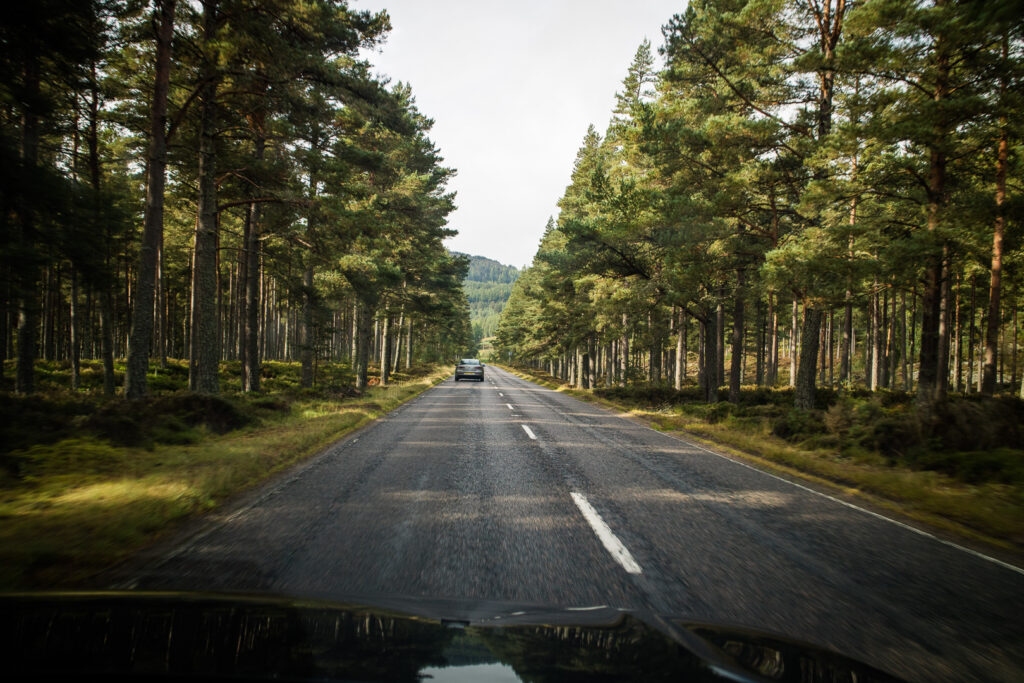
17. Alternatively, take public transport
Consider investing in a ScotRail ‘Spirit of Scotland’ Pass if you travel around Scotland by public transport. These passes usually cover trains, some buses and most ferries, and allow multiple travel days within a set period. It can, however, be cheaper to get individual tickets!
When you look up public transport, always check buses as well as trains. Buses reach more places than trains and they can be a lot cheaper.
Find out more about travelling Scotland by public transport and use my Best of Scotland itinerary by public transport .
18. Consider a guided tour
If you’d rather not drive yourself, there are many tour companies taking people around Scotland on day or multi-day trips.
My favourite recommendation is Rabbie’s . They’re driver-guides are excellent and they only use 16-seater buses, which guarantees small groups. Their scheduled tours leave from Edinburgh, Glasgow, Aberdeen and Inverness.
You could even join for just a day tour if you just need a day’s break from driving yourself.
19. Splurge on a private driver
Hiring a private driver for your road trip in Scotland is the ultimate luxury option. Not only can you lean back, enjoy the scenery and listen to the stories of your driver-guide, your itinerary will also be entirely tailored to your interests.
Expect to pay around £500 per day plus accommodation for the driver (on multi-day trips).
My Scotland Resource Library contains a few personal recommendations for private drivers.
20. Use my recommended providers & tools
Wonder where to book flights, hire cars, accommodation, train tickets, or activities?
Check out my Travel Resources page for my preferred car hire platforms, local transport companies, booking platforms, tour companies and activity providers.
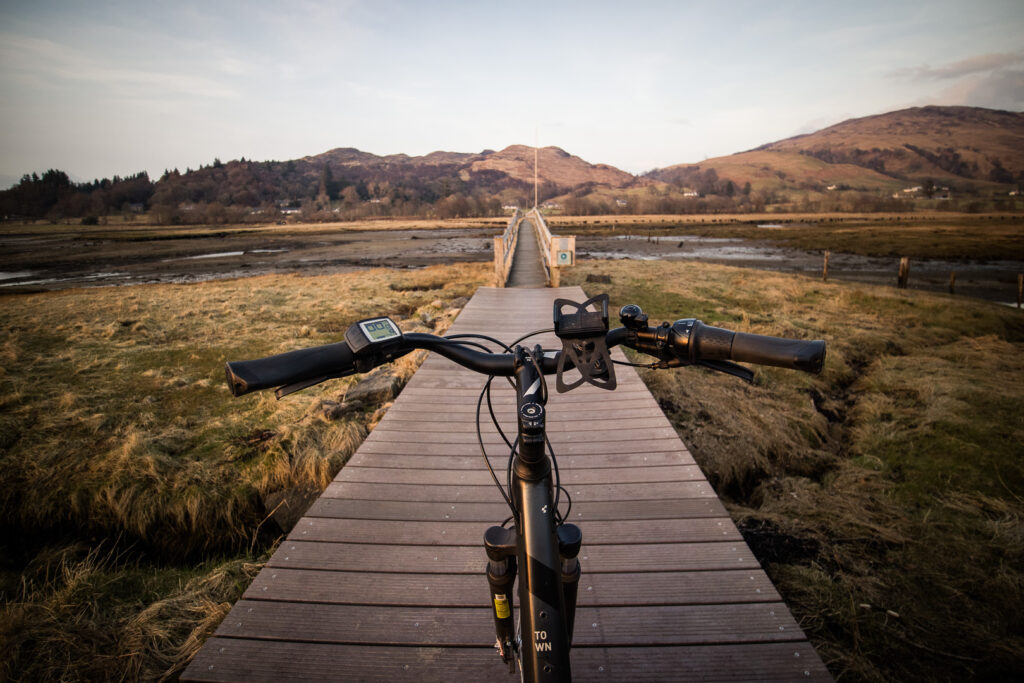
Tips for your Scotland Itinerary
21. which airport to fly into.
Most people arrive at Glasgow airport or Edinburgh airport, the two largest international airports in Scotland. There are also international airports in Inverness and Aberdeen.
I generally recommend flying into Edinburgh airport as it’s located most conveniently for trips that start and finish in Glasgow and/or Edinburgh.
Edinburgh airport is close to Edinburgh, but incredibly well connected to both cities – there is a direct airport bus from to Glasgow.
Glasgow airport is close to Glasgow, but a little further and harder to get to from Edinburgh.
Inverness and Aberdeen airports are well-located if your itinerary focuses on the north-west or the north-east respectively.
22. Listen to Wild for Scotland
Listen to my immersive travel podcast Wild for Scotland to see which regions resonate with you – then follow my travel tips to plan your itinerary.
You might also like: 12 binge-worthy podcasts from Scotland
23. Explore Scotland off the beaten path
Do more than the typical bucket list items, like Edinburgh, Loch Ness and the Isle of Skye. They are all beautiful, but Scotland has so much more to offer and it’s easy to go off the beaten track !
24. Choose “your” destinations and think outside the box
Don’t just follow the crowds.
Read up on different Scottish regions and make an informed decision. Choose destinations that tick the boxes that are important to you .
Some of my favourite regions to explore are Argyll, Aberdeenshire, Galloway and Angus.
25. Make a list of your “must have” experiences
Is there a specific place you want to visit? A dish you want to try? An activity you want to do? Don’t just think about destinations, but about experiences that will make your trip memorable.
In other words, make your own bucket list, than following someone else’s!
Maybe my list of first timer’s experiences could help?
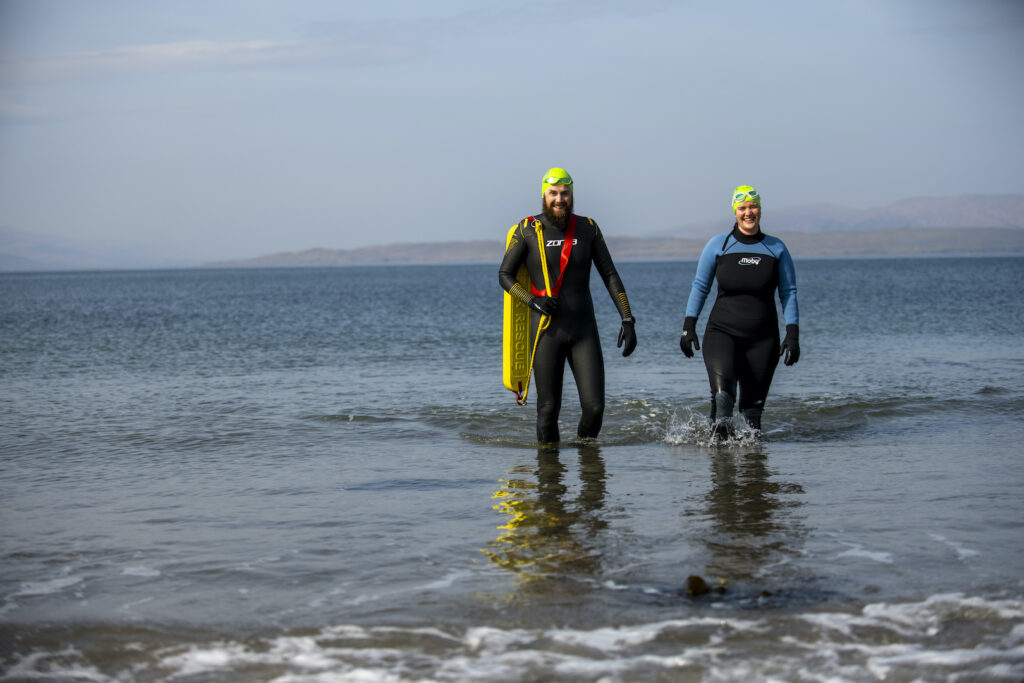
26. Go on an epic road trip
I love exploring Scotland by car and there are endless opportunities for scenic drives all over the country.
From the famous North Coast 500 which loops around the far north-west of Scotland’s Highlands, to the North East 250 in Aberdeenshire , the South West Coastal 300 in Dumfries & Galloway and the Heart 200 in Perthshire .
There is no shortage of epic road trip routes in Scotland .
27. Island hopping is easy
There are over 900 islands in Scotland, most of which are uninhabited. Since many of them are within easy reach from the mainland and/or from each other, it is easy to do some island hopping in Scotland.
One island region where island hopping is particularly easy to do, is the Outer Hebrides, also called the Western Isles. Cycling or walking the Hebridean Way , you can easily visit 10 islands in a week or two, and add a few more to the count by taking breaks for day trips to nearby islands.
Closer to Glasgow and Edinburgh, the southern Inner Hebrides are also a great island-hopping destination. Following my Inner Hebrides itinerary , you could easily hop from one isle to the next, including Islay, Jura, Colonsay and Gigha.
28. You don’t need to go far for an island adventure
The Isle of Skye is Scotland’s most popular island destination, but if you only have a couple of days in Scotland, I recommend choosing an island that is closer.
For example, the Isle of Arran makes for an amazing island getaway if you’re pressed for time. The island is easy to reach with a train & ferry combo ticket and suitable for a day trip or longer stay. The beaches and mountains are gorgeous (try climbing Goatfell ) and there are endless things to do on Arran, from Brodick and Lochranza Castle, a brewery and whisky distilleries, to standing stones and wildlife experiences.
Another island that is easy to reach is the Isle of Bute .
There are many other Scottish isles to explore that are much closer than Skye – no need to spend hours in the car only to be able to say you’ve been there.
29. Visit the Small Isles
The Small Isles are one of my favourite destinations off the beaten path. They are easy to get to from Mallaig which is a fixture on many people’s Scotland itinerary. Instead of taking the ferry to the Isle of Skye though, set sail for Rum , Eigg, Canna or Muck.
A visit to the Small Isles is also easy to connect with a road trip down the Road to the Isles or a ride on the Jacobite Steam Train .
The Small Isles are car-free and incredibly welcoming. All the islands are great for hiking and bird watching, but also if you are interested in historic sites or spending time immersed in a small Scottish community. Each island has something different to offer.

30. There are standing stones all over Scotland
There is no need to travel as far as Orkney or the Isle of Lewis to see standing stones in Scotland – unless you have time for a longer trip.
There is no shortage of standing stones and stone circles all over Scotland. Some of my favourites are the Machrie Moor standing stones on the Isle of Arran, the Nether Largie standing stones in Kilmartin Glen and the stones at Clava Cairns near Inverness .
31. Go wildlife watching
If you want to see Scottish wildlife, timing is everything. So, read up on where and when to find them.
Many marine mammals and seabirds are best observed during the summer months from mid-April to early August. This includes puffins and gannets, basking sharks and whales.
Seals and dolphins on the other hand, are more permanent residents on the Scottish coast.
If you’d like to go on boat trips or sailing, I recommend choosing a company that is part of the WiSe scheme to ensure you’re going with someone who’s wildlife-aware. On their website you can find all operators that are registered with them throughout the UK.
You might also like: The best places to see wildlife in Scotland
32. Where to see puffins?
Puffins and many other seabirds form massive nesting colonies up and down the Scottish coast, but they prefer places that are less frequented and take some effort to get to (usually a potentially choppy boat ride). Two of my favourite areas to see them, are the Treshnish Isles near Mull (Lunga) and Sanday off the Isle of Canna.

33. Where to see Highland Cows?
No trip to Scotland would be complete without seeing some Highland cows. They are not commonly used as farm animals anymore but are kept as treasured “pets” all over the country (for example by farmers or at hotels).
Great places to see them up close are Pollok Park in Glasgow, at the Loch Melfort Hotel in Argyll or at Newton Farm Holidays in Angus .
34. Visit Scottish Beaches
Ever thought about a beach holiday in Scotland?
Some Scottish beaches are so beautiful, the sand so white and the water so clear, that images have been accidentally used to promote tropical beach destinations!
Only the temperatures would give it away…
Some of my favourite beaches in Scotland can be found:
- in the Outer Hebrides on Vatersay, Berneray, and Bosta beach on Great Bernera.
- along the North Coast 500: Red Sands, Achmelvich Beach and Sango Sands.
- in Fife: St Andrews and Ruby Bay, Elie.
- in Aberdeenshire: Rattray Head, Newburgh and Balmedie.
- and the Inner Hebrides on Colonsay, Coll and Islay.
For more stunning beaches to visit, check out the book The Beaches of Scotland .
Need more help planning your itinerary? Hire me as a travel consultant and let me help you plan an itinerary that is 100% YOU!
On the Road
35. road navigation.
You could hire a GPS with your rental car, or use Google Maps on your phone. Reception in the Highlands and on islands can be patchy, but you can download Google Maps areas for offline use.
Of course, it never hurts to have a traditional paper map as backup.
36. Pay & Display Car Parks
All over Scotland, you will come across many Pay & Display Car Parks – some are run by the local council, others by private landowners. You have to pay for parking at the ticket machines and display the ticket on your dashboard.
Some – but not all – machines accept card payments. Some – but not all – machines allow you to pay via the RingGO app, but reception isn’t always great. It’s best to have some coins at hand.
Keep track of your travel memories with my Scotland Travel Journal !

37. Navigating public transport
Google Maps has a very useful public transport option to look up connections – it’s fairly reliable with inter-city connections and local buses in the cities.
For local buses in rural areas, I always check connections on Traveline as it’s more reliable than Google Maps.
For trains, I always double-check connections on the ScotRail app to make sure there are no cancellations or delays.

38. Public toilets
Toilets are not a glamorous topic, but knowing where to find them is necessary on any trip. Here is a website with a map of all public toilets in the UK .
My ready-made Scotland itineraries come with maps that point out public toilets along you route.
39. Finding WiFi on the road
Most cafes and restaurants generally have free WiFi for customers. You may want to get a local pay-as-you-go sim card – just make sure your phone is unlocked for all networks. You can pick these up at most large supermarkets.
40. Dealing with midges
Midges are tiny black flies that show up during the summer months all over Scotland. They are annoying and most people get itchy from their bites – but they won’t ruin your trip.
Midges hatch from the end of May until late September – that’s when they are around. They like overcast skies, mornings and evenings, windstill weather and standing water – expect them to be around in these circumstances. They dislike wind and sunshine, which is why they’re often not too bad on the coast.
Unless you’re camping, you can get away from them really easily by going inside. If you are camping, bring a midge net and set on spending evenings inside your tent.
There are several repellents that work for midges – first and foremost, Smidge and Avon Skin So Soft which you can pick up anywhere in Scotland.
You might also like: More tips for dealing with Scottish midges
41. Storing luggage
If you are travelling on public transport, you may want to store your luggage at some point during your trip.
Most hotels, B&Bs or hostels will allow you to drop off your bags before check-in or leaving them there for a few hours after your checked out.
There are luggage storage facilities at some train stations, but really only in large cities and towns, such as Glasgow, Edinburgh, Fort William and Inverness. You can search for station facilities at all train stations here (look for ‘Left Luggage’ facilities).
Visiting Scottish Castles + Attractions
42. visit a variety of castles.
I recommend visiting castle ruins as well as fully preserved or restored castles to experience a variety of Scottish castle architecture.
My favourite castles in Scotland include:
- Stirling Castle : very well preserved & a great self-guided tour,
- Dunnottar Castle : my favourite ruined castle in a breathtaking location,
- Balmoral Castle : only the grounds + gardens are accessible since it’s an official Royal residence, but it’s incredible,
- Kilchurn Castle : a stunning castle ruin on the way to Oban,
- and Culzean Castle: overlooking the sea and the Isle of Arran.
You might also like: 11 Educational & Science-Based Tourism Experiences in Scotland

43. Follow the Scottish Castle Trail in Aberdeenshire
If you want to see many castles in a short amount of time, follow the Scottish Castle Trail through Aberdeenshire – it covers 19 (!) castles that are all just a short drive from each other!
44. Invest in an attractions pass
Visiting many castles and attractions, most of which charge an entrance fee, can quickly add up.
It might be worth investing in an annual membership for the National Trust for Scotland (join here ), an annual Historic Environment Scotland membership, a short term Historic Scotland Explorer Pass or the VisitBritain Heritage Pass.
Note though, that privately owned castles are not included in these castles. This includes Dunvegan Castle on Skye, Inveraray Castle in Argyll, Dunnottar Castle in Aberdeenshire and many others.
Write down which castles and attractions you’d like to visit, look up entrance fees and research which passes would cover them. Then do the maths.
Edinburgh Travel Tips
45. spend at least 2 days in edinburgh.
2 days in Edinburgh gives you a good amount of time to see the highlights and explore off the beaten path.
The city is very walkable, there is an easy-to-navigate bus system or you can use Uber.
My personal highlights are:
- Scott Monument for the best views,
- the Royal Mile and its many closes, wynds and hidden gardens,
- Grassmarket for pubs + castle photos,
- Calton Hill and/or Arthur Seat for a hike – maybe at sunset?,
- National Museum of Scotland for stunning views from the rooftop,
- the Water of Leith Walkway to escape the crowds,
- the Shore + surrounding neighbourhood in Leith for pubs and food,
- the Scottish Design Exchange on George Street for shopping.
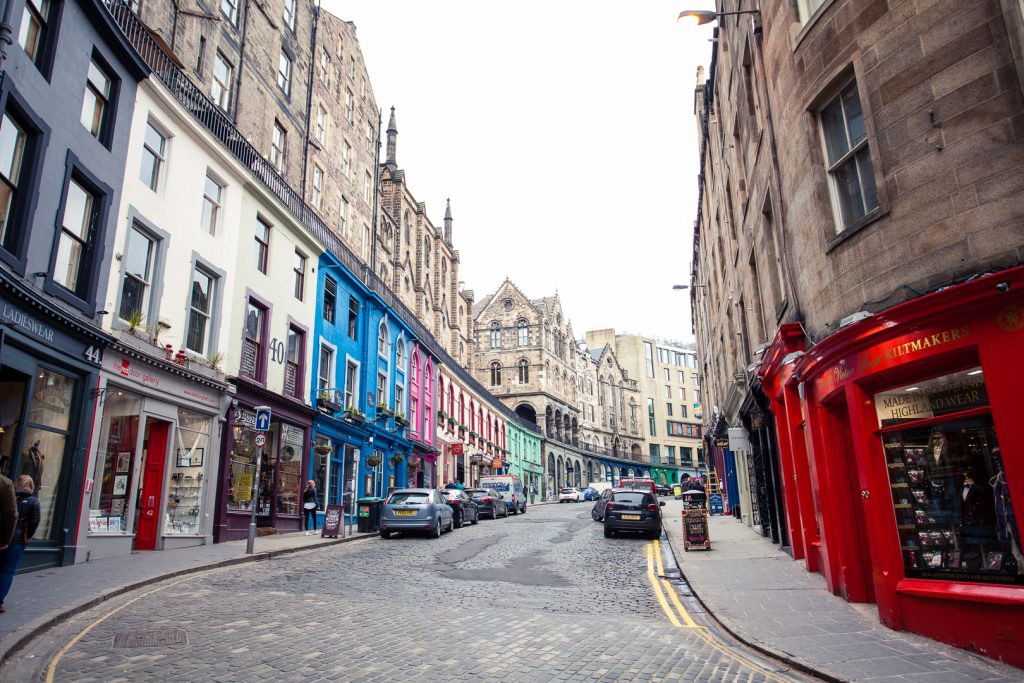
46. Start with a city tour
The Edinburgh Hop on Hop off bus tour can give you a great introduction to the city. I recommend doing this as soon as you arrive!
Read up on my favourite tours in Edinburgh here!
47. Explore beyond the Old Town
Particularly in the summer, Edinburgh is bustling with visitors – but it is easy to escape the crowds by leaving the medieval Old Town.
Explore beyond the major tourist attractions and go off the beaten path:
- Visit the Royal Botanical Gardens ,
- Wander around the Stockbridge neighbourhood,
- And explore Leith.
48. Book accommodation well ahead
Accommodation in Edinburgh can be expensive and hard to come by, so book well ahead of time. I recommend staying in the Old Town, West End (Haymarket area), New Town or Leith.
On a budget? Check hostels, avoid August and December (festival season) and stick to weekdays. Alternatively, you could stay in Glasgow or Dunfermline and take the train to Edinburgh for a day trip.
You might also like: My accommodation guide for Edinburgh
Glasgow Travel Tips
49. don’t make the mistake to leave glasgow off your itinerary.
Glasgow is an amazing city with a thriving cultural scene, beautiful architecture and parks, a great food scene and plenty of things to do. I recommend spending at least one day in Glasgow .
My personal highlights are:
- Visiting Glasgow Cathedral and the view from the Necropolis,
- Seeing the Highland coos at Pollok Park,
- Wandering around the Glasgow University campus,
- Eating haggis and drinking beer at Ashton Lane,
- Visiting the many free, public museums like People’s Palace,
- Following the City Centre Mural Trail,
- Shopping at the Hidden Lane.
You might also like: 50 useful Travel Tips for Glasgow

50. Mingle with Glaswegians
Visiting Glasgow is all about mingling with the locals – the city’s slogan is “People Make Glasgow” after all!
It’s easy to meet locals at the pub – just stand by the bar and someone will start chatting to you.
51. Discover free things to do in Glasgow
Glasgow is a budget-friendly city and there are many free things to do .
Most museums are free of charge, the City Chambers offer free tours during the week, there are beautiful parks and nearby hiking areas and lots of beautiful architecture to discover.
52. Book a walking tour with me
Glasgow is a city best seen through the eyes of a local. Whenever I can, I offer private walking tours through Glasgow to show you my favourite places, take you off the beaten track and answer all your questions about life in Glasgow.
Read more about my Glasgow tours and email me to check availability.
Packing Tips for Scotland
53. wear layers.
Since Scottish weather is unpredictable it is important to wear layers. That way you will be prepared for any kind of weather and can add or remove one or multiple layers as needed.
My Scotland Resource Library contains a full packing list & heaps of packing tips for Scotland.
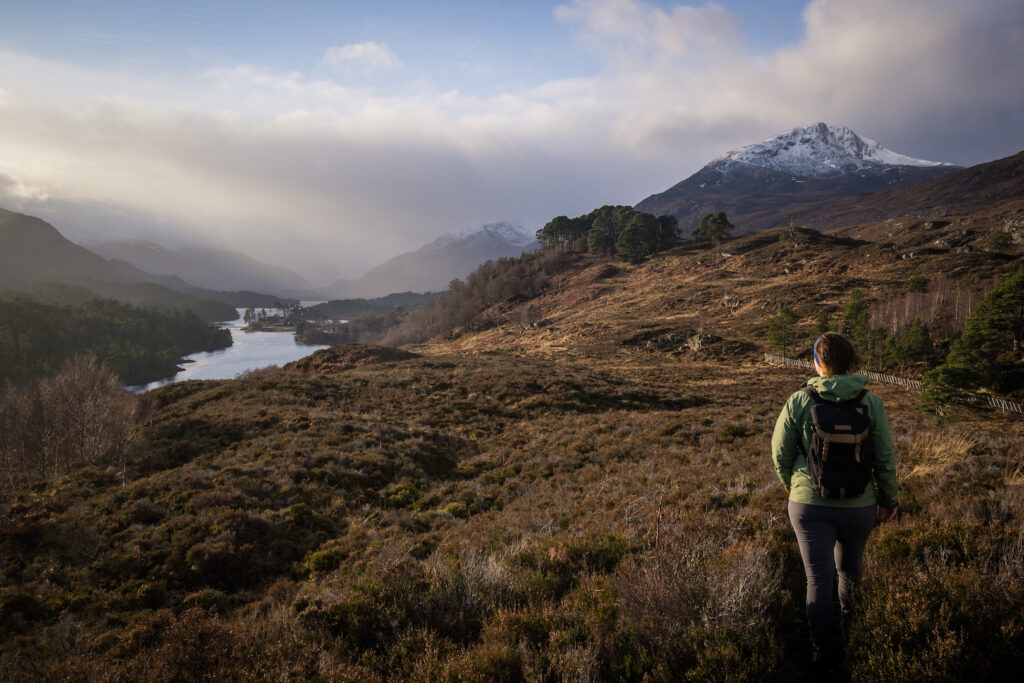
54. Invest in GOOD waterproofs – a jacket and trousers
Forget umbrellas – it’s too windy. Invest in a high-quality waterproof jacket and some waterproof trousers (pants) – the latter especially if you plan togo for walks. It’s worth the money to stay dry and comfortable!
And don’t forget: don’t let a bit of rain drag you down. It’s all part of the Scottish experience.
Check out some of my recommended shoes & clothes for Scotland here .
55. Wear comfortable walking shoes
Comfortable walking shoes are an absolute must on your Scotland packing list. They should keep your feet warm and dry.
I recommend wearing shoes that you don’t mind getting wet and dirty. Even if you don’t plan to go hiking, foot paths to viewpoints or around attractions can be muddy.
Waterproof/-resistant shoes are ideal. I love my Barbour half-wellies .
For proper hikes, I always wear my Zamberlan boots , but I may even put them on for shorter walks. They are just so comfortable and keep my feet dry.
Apart from these, I usually wear comfortable trainers to drive or walk around or Chelsea boots.
56. Pack hiking equipment
If you plan to go hiking in the Scottish Highlands, on islands or on the coast, bring proper hiking equipment to protect yourself from the elements.
This includes waterproofs (jacket + trousers), sturdy hiking boots, a map and compass, and emergency supplies. Hiking in inadequate clothes or shoes, or getting caught in bad weather without required emergency supplies can cause unnecessary search + rescue missions for the local mountain rescue teams. Make smart choices.
Never underestimate the weather in the hills and only go as far as you can safely navigate back.
If wild camping, pack what you need to leave no trace. Check out my guide to wild camping in Scotland for tips.
57. Where to buy essentials
Forgot something? Here are some useful shops you can find in most cities: Boots (drug store/chemist and pharmacy), Marks & Spencer (clothes), Tiso and Cotswold (outdoor gear).
You can literally buy anything in cities like Glasgow and Edinburgh, Stirling, Perth, Dundee, Aberdeen and Inverness. In the Highlands, Fort William has the biggest range of shops.
Experiencing Scottish Culture, Food & Drink
58. give whisky a chance.
Be open-minded when it comes to Scottish whisky.
It took me three years and multiple visits to whisky distilleries to realise that I kind of like single malt whisky. Try a few different ones to find a dram you like.
To learn more about the different whisky regions and find your preferred taste visit the Scotch Whisky Experience in Edinburgh .
If you’re a whisky lover, check out my whisky itinerary for Scotland.
You might also like: An essential guide to trying Scottish whisky
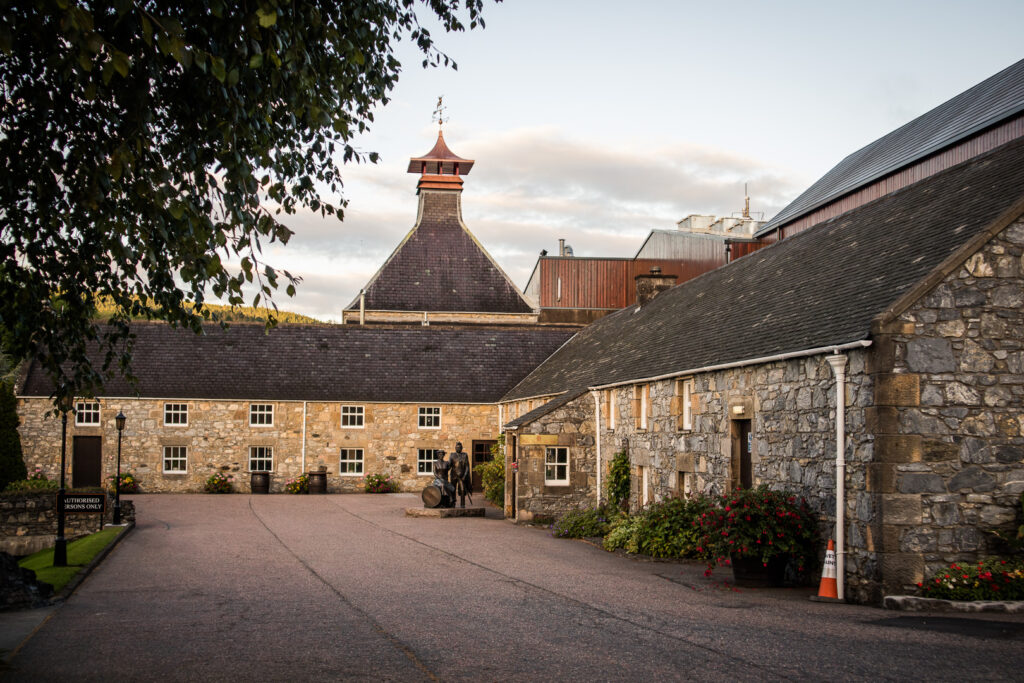
59. Just don’t call it Scotch
Scottish whisky is never spelled with an ‘e’ (whiskey) and we never call it Scotch. It’s whisky, malt, single malt, or a dram.
Bonus tip: Don’t order a single malt whisky with ice or pour water in right away. Try the whisky neat at first, then maybe add a few drops of water to release the full aroma. Only if you still insist, ask for some ice.
60. Experiment with Scottish cuisine
Scottish food is excellent, whether you go for traditional dishes like haggis or Cullen skink, or try contemporary cuisine.
If you eat meat and seafood, order typical Scottish dishes like Cullen skink (a creamy fish soup), steak and ale pie, stovies (a potato dish), fresh seafood, and of course the famous chicken tikka masala.
For the best fish & chips head to a seaside town of your choice where the fish is the freshest. I highly recommend the Anstruther Fish Bar near St Andrews !
61. Ask what’s in haggis after you tried it
Or simply, don’t ask at all – just enjoy it. Haggis is better if you don’t think about what’s in it.
If you don’t eat meat, try vegetarian haggis instead – it’s delicious!
Black pudding is not a pudding. As with haggis, don’t overthink it or try the veggie version.

62. Don’t worry if you’re vegan – you’ll find plenty to eat!
If you are vegan, find out how easy it is to travel Scotland as a vegan here !
63. Tap water is safe to drink in Scotland
There is no need to buy bottled water in single-use plastic bottles. Scottish tap water is safe to drink and tastes delicious. Bring a reusable water bottle & fill it up frequently!
64. Be aware of Seagulls
When buying fish & chips to take away, especially by the seaside, watch out for seagulls. Scottish seagulls are big and fierce – they are known to steal food out of people’s hands .
65. Taste Scottish (craft) beers
Scottish appreciation for alcoholic beverages does not stop at whisky. The Scots also love their beer!
Tennent’s is by far the most famous lager, so make sure you try a pint of that. It has been brewed in Glasgow for over 400 years. The brewery also offers a great tour + tastings.
There is a growing craft beer scene in Scotland and there are many small breweries. Some of my personal favourites are Loch Fyne Ales from Argyll, six°north from Stonehaven , and Hangman’s Rock from Colonsay Brewery.
66. Try Irn Bru in all its forms
Irn Bru is an iconic Scottish carbonated soft drink. It is bright orange and a staple in many Scots’ regular diets. Produced by Barr’s in Cumbernauld near Glasgow, only 3 people know its secret recipe.
You can drink it, or try Irn Bru-flavoured sweets or ice cream. I prefer the latter!
67. Find local live music
Scotland has a diverse music scene. Many bands and singers from Scotland are famous around the world – Belle & Sebastian, The Proclaimers, Biffy Clyro and Franz Ferdinand, just to name a few.
Traditional music is also big in Scotland and there are many bands who play old-fashioned or contemporary versions of trad music, such as Skerryvore, Talisk or Breabach.
Many pubs around the country host regular trad music nights, such as the Ben Nevis Bar in Glasgow, the Edinbane Inn on Skye, the Clachaig Inn in Glencoe or Macgregor’s Bar in Inverness.
68. Dance at a ceilidh
Another important part of Scottish music culture is the Ceilidh, a traditional social gathering that involves lots of dancing and traditional music. Many Scottish weddings end with a Ceilidh and many rural communities host regular Ceilidh dances.
An easy way to participate in a Scottish Ceilidh is by visiting Sloans in Glasgow (Ceilidh every Friday night, tickets are £12.50) or join the Edinburgh Ceilidh Club .

69. Attend a Scottish festival
Edinburgh is famous as a festival city, particularly during the summer festivals in August, such as the Fringe theatre, comedy & performance festival and the Military Tattoo.
Many islands host music, food and whisky festivals, and each city is home to a variety of cultural festivals throughout the year.
Whether it’s Hogmanay in Edinburgh or other Scottish winter festivals , a music festival, an arts festival like NEOS in Aberdeenshire , a cultural festival like Up Helly Aa , a food event or a whisky festival – the Scots love to celebrate. Join them!
70. No matter how wild the party gets, don’t lift up a man’s kilt!
Do I have to say more?
I hope my travel tips for Scotland will prove useful to you on your upcoming trip or inspire you to get started planning a trip to Scotland!
What is your top tip for a journey to Scotland?
Pin this post for later:
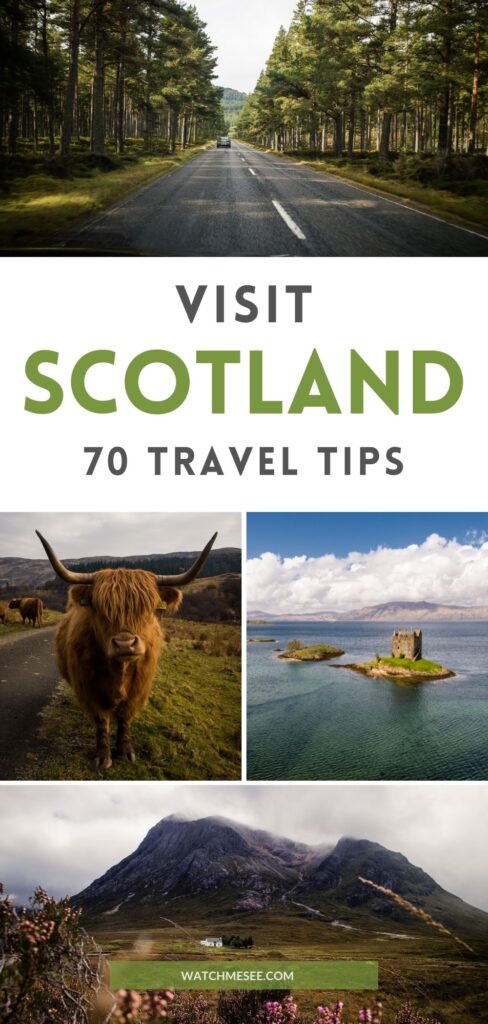
Planning a trip to Scotland?
Download my FREE Trip Planning Checklist
Join my Facebook group to find inspiration for big & small adventures
Listen to my podcast Wild for Scotland for lots of travel inspiration
Use my Scotland Travel Journal to document your trip
Make trip planning easier with my Scotland Resource Library
Save time and get one of my pick-up-and-go Scotland itineraries
Beat the overwhelm and hire me to plan a bespoke itinerary for you
67 thoughts on “ 70 Useful Travel Tips for Scotland ”
those are very valuable tipps, though picking up gaelic might prove a tall challenge 🙂
Pingback: Insider Tips For Planning a Scotland Trip With Kathi Kamleitner
Excellent advice for Scotland. I’ll save them for when I go there. The castles and the Jacobite Steam Train are two things I would especially love to visit.
very informative article. Scotland travel in my bucket list. Hope to travel there soon.
Thanks for sharing these great tips for traveling.
Superb blog thanks for sharing amazing post.
I love this list! We are heading there with our family last year on 17th March 2019 after ITB berling. Flying to Scotland for a week. Amazing destination to be in everone backlist.
I was in Scotland and did Edinburgh and Glasgow on the top of the list. It was a really good trip. I will go back again in the near future.
We will have a carhire when we visit in May. How should one go about selecting where to pick up your car once you are ready to travel outside of Edinburgh? Airport, train station, city outskirts?
I’d probably get it from the airport – it’s easy to get to from the city after sightseeing for a few days, easy to navigate because signage is good, and usually also a bit cheaper than city offices!
Thank you SO much for the wonderful info, ESPECIALLY including vegan and vegetarian info and options! Your site is fantastic!! I hope to be traveling to Scotland with my hubby in 2020 for our first time and your blog has been extremely helpful!
Thanks for taking the time to comment, Tomina! I hope you have fun planning your trip to Scotland – and a great time here, when it comes!!
Here is my plan in May. 2020 Inverness – Fortrose Cromarty Dingwall Fodderty carbisdale castle Dunrobin castle Backies Dunbeath castle Wick castle sinclair Girnigoe Keiss – old keiss castle bucholie castle john o groats duncansby head and stacks Castle of Mey dunnet head lighthouse Crosskirk Puffin Cove,Drumhollistan Tongue – castle bharrich Durness scorie drumbeg Clashnessie and falls Lochniver Ardvreck castle and peach and horne memorial ullapool poolewe torridon – am ploc open air church Applecross Plockton- duncraig castle Caisteal Maol Fort augustus -falls of foyers Dores Inverness
Then Nairn Brodie castle Culloden battlefield Lossiemouth Spynie palace Dufftown – Glenfiiddich Distillery Bow fiddle rock Banff – temple of venus Pennan Rattray lighthouse peterhead prison museum bullers of buchan Cruden bay Slains castle Aberdeen banchory – abergeldie castle Braemar castle Balmoral castle Glen lui blairgowrie bon scott statue linn of tummel Airlie monument newtonmore blair castle garry bridge Carrbridge and back to Inverness
Some great sites on your list! How much time do you have?
amazing blog loved going through it thank you so much for sharing
I really love for traveling mostly i have travel to Europe for business purpose next time i will try to travel Scotland and visit this unique places. overall thanks for share this informative blog.
I’m so excited to be returning to Scotland for a 4th time! With my 82 year old mom who just hurt her knee pretty bad, so hoping to do some things that don’t involve a lot of walking or hiking. We’ll have a car and wanted to go to Inverness and beyond. Oban sounds interesting! Any islands that wouldn’t involve a ton of walking? We love castles! Thanks for a great post!
Hi Lynne, Thanks for your comment and question! Have you seen my Scottish islands post – I summarise all the islands in it: https://watchmesee.com/blog/the-best-scottish-islands-to-visit/ Oban is wonderful and a great starting point for many islands. I’d recommend Mull because it’s near and there is lots to do that isn’t necessarily hiking or walking too far, incl a castle and a whisky distillery! You could also explore the region around Oban (Argyll) and head down towards Tarbet – there are tons of castles in that region and such a meandering coastline, it feels almost lie you’re on an island! I also have lots of posts about Argyll – you can find them by browsing the menu. I hope this helps! Have a fab trip! Cheers, Kathi
Ahh! Thank you so much! Will do all of the above! Can’t wait!
Can I ask one more question – do you recommend the Historic Scotland or Heritage Pass? I can’t figure out if it will pay for itself or not for us. I didn’t see you comment on that one. And also if we should purchase that before we come to Scotland or purchase it there. Thanks!
Hi Lynne, there are three passes you could consider – 1) National Trust of Scotland membership (1-year validity), 2) Historic Scotland membership (1 year) and 3) Heritage Pass (7 days). Each includes different attractions and has a different price point. Whether it’s worth it or not, really depends on what you want to see – some castles cost £13-18 entrance fee, so if you want to see three expensive castles a pass might be worth it. Check which attractions you want to see along your route, look up entrance fees at their individual websites and then check which pass would cover them. It’s a bit more work to prep for your trip, but then you know you don’t have unnecessary expenditure! And since you do the research in advance, why not also buy it in advance 😉
I write about the three passes in this post too: https://watchmesee.com/blog/backpacking-scotland-on-a-budget/
Thanks for the great insights into Glasgow – myself and my partner are heading there for a conference in late August via a few nights in Edinburgh to catch the tail end of the Fringe Festival. Your blogs on Glasgow have made us much more optimistic for what Glasgow can offer tourists – my partner was fixated on Glasgow’s knife crime and very few Kiwis who had traveled there had anything positive to say about Glasgow – we can now see from your blogs it offers so much more and are looking forward to our time there! We are seriously thinking of using your 7 day classic intinery from Glasgow to Skye to Inverness back to Endinburgh (potentially taking in a bit of Adberdeenshire & the Cairngorms if time allowed) – do you think this is too much traveling for 7 days? We are also thinking of heading out of Glasgow after 5pm on a Thursday night – is there anywhere an hour or so from Glasgow that is nice to stay on the way north? Looking forward to seeing your wee adopted country. Thanks again for a great informative blog from the Edinburgh of the south – Dunedin, New Zealand!
Hi Rebecca, I’m so glad you found my blog – honestly! It’s such a shame that Glasgow is still ringing with these negative stereotypes. Don’t worry about knife crime at all – any crime actually – and enjoy your time here. There is so much to do and see, lots of new tour companies, museums, parks, viewpoints, great food and lots of cultural venues! It’s a beautiful city that has changed a lot in the last few decades!
Regarding your road trip, you could stop in Arrochar near Loch Lomond – a gorgeous place and just about one hour away from Glasgow. Check out Ashfield House B&B – Cristina is a fantastic host! If you only have a week and want to follow my 7-day itinerary, you wouldn’t be able to also add the Cairngorms and Aberdeenshire. My 7-day itinerary is already pretty busy and I actually recommend to spend 9-10 days on that route to see everything on the list and relax a little too! If you have longer, it’s a different story.
I hope you have a fantastic trip to Scotland. I’d love to hear how you got on!
All the best, Kathi
Fantastic info off to Dumfries and Galloway next week been before but a few years ago Always loved Scotland Just learned what wee meant hear it a lot
Well done. At last a sensible and non-patronising list of dos and don’t for visiting Scotland. The England thing is the most crucial! My only slight cavils are: Balmoral isn’t really a castle but a mid-victorian fantasy house. There are plenty of authentic ancient castles in Scotland but Balmoral isn’t one of the. Then, why does nobody on these blogs mention the New Town in Edinburgh as a wonderful place to explore. It’s not new, but street after street, square after the square of Georgian architecture of the very highest quality, and the main reason that Edinburgh is a World Heritage site. It dates from the 1760s and was the home of famous Scots like Robert Louis Stevenson.
Hi Janet, I’m glad you found the list useful! I’m actually going to New Town next week to try and review an accommodation there and can’t wait to explore that part of Edinburgh more in-depth. This list only has four tips regarding Edinburgh, but if you look at my 2-day Edinburgh guide you will find New Town among my essentials: https://watchmesee.com/blog/edinburgh-in-two-days-weekend-trip/ , so I’m not sure what you mean by “these blogs”. I loved Balmoral – the gardens were among the most beautiful I’ve seen and it’s so close to other castles in the region. You can see a great variety of castles and big houses in this area!
Wow.. this list of informations is so amazing! Can you advice me april is good time to visiting Scotland. Waiting for your reply….
Absolutely! April is when all the Spring flowers usually start blooming. I guess just stay aware of he Easter holidays when you book accommodation. Enjoy!!
Scotland is really nice country. I am reading your blog and i get the awesome tips about traveling to Scotland. Thanks!
Nice blog. Saved lots pins to my Scotland board. I am guessing you live in Scotland? We don’t have pound notes any more!
Sorry, if it’s unclear, but I’m speaking about 5-, 10- and 20-pound notes, not the old £1 notes… Yes, I live here!
Hi there, We’re leaving for Scotland in 3 days. Attending the wedding of a highschool friend in Inverness. Will be in Edinburgh 3 days, Inverness & Culloden 4 days, then have a week of driving to Oban, out to Tobermory, Maillig & About. Will attend the Edinburgh Military Tattoo, stay one night in Barcaldine castle, an Airbnb & some small guest houses. Thank you so much for your suggestions – even about the haggis :>. We’re looking forward to the adventure, weather, sheep, music, culture, views & Scotch!
That sounds like such a lovely and relaxed trip – you will see so much and get a real sense for the country 🙂 Enjoy your holiday and thanks for checking out my blog!
Beautiful post! Thanks so much for the inspiration.
THANK YOU!!!! We are going to Scotland for our honeymoon next May and I’ve been reading blogs through Pintrest for several months now. Yours is all I need!! It answered every question I had and more! I am so exited about the vegan fish & chips in glasgow!! I honestly can not thank you enough! ☺☺☺
Myrna, thank you so much for your comment! I’m so happy to hear from readers who find my blog useful. Let me know if you need any assistance on planning your perfect Scotland holidy!!
I’m really enjoying your web content. Thanks for sharing these tips. It will help other users as well :). Big Love and Big Support!
I appreciate your sharing and I must say that you have shared such nice and useful information about Scotland with all of us which is really good. I also visited there for having enjoyment. It is a best place for having fun and tourists can enjoy there hiking and many other outdoor activities. I hope you will have a joyful time there.
great tips you shared, i love your blog only for this reason that you share true fact. Next month we all going to scotland and lots of activity we will do. Thanks to you and your article, who suggested me good option.
Oh, my. Thanks for the giggles. I have been to Scotland four times from The States, and am planning my fifth go for late summer – early fall. Your fun insider’s take on the endless joys to find there are inspiring. And I haven’t gotten to your take on The Shetlands. I hope you have some info on The Orkneys in here too. Have joined your newsletter. Well done and thanks again!
Unfortunately, I’ve not been to the Orkney’s myself yet, but I can recommend this post by Migrating Miss, https://www.migratingmiss.com/things-to-know-before-you-visit-orkney-scotland/ , for some more info on the Orkneys! Thanks for joining the newsletter too!! 🙂
I like that you provided some tips when traveling to Scotland such as looking for public transportation when getting around. It is recommended that you tour the city via public transportation as this can definitely save you lots of money. Plus, you are able to communicate with locals who can give you tips and recommendations on the best local restaurants and bars. If I were to visit Scotland in the near future, I would make sure to keep this in mind. Thanks.
Pingback: How to Plan a Trip to Scotland: Driving in Scotland
Pingback: How to Plan a Trip to Scotland | WatchMeSee.com
Pingback: 50 Useful Travel Tips for Glasgow | Watch Me See
Oh my god, this list is amazing! I am actually planning on visiting Scotland in November, so now I really can’t wait for this weird country. (Weird in a good way) …Thank you .)
Have a fantastic trip – November can be a bit rainy, but also so eery and mysterious in the mountains. And the colours are amazing – I love it!
My husband and I will be visiting August 31st to September 14th. We plan to take the train to get around (Edinburgh, ft William, skye, Inverness, pitlochry & Glasgow) Are there any tips or websites you recommend. I’m a little nervous about it honestly. Thanks
That’s absolutely doable, although you’ll have to take a bus to Skye. For trains I always use trainline.co.uk – I find the best deals around three weeks prior to my intended travel dates, and the site is a lot more user-friendly than the Scotrail websites; plus it lists various train companies in its search results! For buses check our citylink.co.uk, which is as far as I know the main bus company operating in rural Scotland. Prices are usually reasonable if you book in advance or do short routes! Traveling by public transport can be a bit more time consuming, but particularly the train routes are so scenic, you’ll actually want them to last longer 😉 Have a great trip!
Gonna hold my hands up and say I came to read this list (as a Scot in Scotland) to see what ridiculous advice was being doled out. I’ve never been happier to admit I am completely wrong and this was a very useful, interesting and well-written list – a must-read for anyone coming to visit Scotland. I would add that for number 28, Fife (an area north of Edinburgh, over the iconic Forth Bridge) is also worth a mention in terms of cheaper accommodation if you want to see Edinburgh, even in August. There are very regular trains (more and later running during the festival) and it’s as little as 35 minutes away.
Good shout about Fife – I’ll add this tip to the article if I may. I’m glad I could surprise you with my list! I’ve lived here for several years and was hoping that by now I’d have a pretty good idea of what travelers should know about 🙂 I hope you’ll share it with friends coming to visit you! X
Love this list! We are heading there in March and will only be there for a week. I wish I could stay a month or longer and do so much more. Still working out our itinerary, though, so this has given me many ideas. (Sorry to hear the highland cows aren’t as easy to spot as the travel websites make them seem. But it’s good to know. 🙂 )
Oh a week really isn’t enough, but it’s a good time to get a first overview! In terms of highland cows – maybe I was just always not lucky enough… I wish you a great journey and all the best spotting coos 😀 Thanks for your comment!
Believe me, Adele is from Tottenham, London. Definitely not Scottish
Haha I was totally thinking of Amy Macdonald there – neither of them make it into my playlists, so it’s easy to mix up 😀
Love this so much! And agree with all of them!! The thing about not lifting a man’s kilt made me laugh, it’s my man’s biggest fear when we’re out and he’s wearing his kilt. At graduation in St Andrews, people randomly asked him to take photos because he was wearing one. Also, I invested in a Craghoppers last year and it was by far my favourite purchase ever! It’s doing really well in currently -15 Canadian weather too! And agreed about the classic trifecta, Edinburgh, Loch Ness and Isle of Skye. I always try to get people to think further than that!
Thanks for your comment – I’m glad I picked some you could personally relate to. I wish my partner was wearing a kilt more often – he’s Scottish, but he doesn’t have one – I’m often disappointed ha ha 🙂
Thanks for the advice! I will be heading to northeast Scotland in March (Inverness and the Black Isle), I will definitely be using some of your advice. This is my first time to Scotland and really appreciate your time to dish out some advice.
Oh what a fantastic trip waiting for you! I’ve never been to the Black Isle, but they have a great brewery up there, if you’re into that sort of stuff! Have a fab trip! 🙂
I was interested in your take on Scotland, as I once lived there, and still have relatives there, it is a beautiful country, except for the dreaded Scottish mid he, especially in the west, it absolutely eats you to bits, especially the English, so be warned from May to October beware the midge
You’re right – the midges are the worst! They can really ruin your trip to some extent – but the landscape makes up for it 🙂 Thanks for your comment!
Hi Edith — just beginning exploring the possibility of traveling to Scotland alone – and I am kinda old but good shape! I do not know what a midge is — is that a mosquito? A gnat? And you mention the Scottish mid he — what is that? Is bug spray enough to ward them off? Thanks for any input!
Hi Mary, I think Edith’s had a typo there – she’s of course also talking about midges (not mid he) 😉 I would describe midges as a mix between mosquitos and flies – they’s quite small (hence there are specific midge nets to keep them away – they can slip through normal mosquito nets), they bite and can itch like crazy! Mosquito repellent might work, but there is also a spray called Smidge, which you can pick up in most outdoor shops here, which was specifically designed with the Scottish Highland midge in mind. It helps really well, but it is also advisable to wear long sleeves around sunset to keep them off your skin! Hope that gives you an idea of how to protect yourself from the ‘wee beasties’ – as we call them here!
Great tips for Scotland. I will bookmark them for when I visit. I would especially love to see the castles and the Jacobite Steam Train .
Thanks for your comment! The steam train really is a great experience – hope I get to take it maybe this year 🙂
I was just in Scotland and did the Loch Ness, Isle of Skye, and Edinburgh. It was all we could fit in for that trip, but I really wanna go back and see more. I will put Glasgow on the top of the list. I did try haggis while I was there and loved it!
Thanks for your comment! Those three places are a great introduction and all classics! Next time do Glasgow for sure, and maybe Oban <3
Leave a Reply Cancel reply
Your email address will not be published. Required fields are marked *
Scotland Travel Guide
Book your individual trip , stress-free with local travel experts
Select Month
- roughguides.com
- Travel guide
- Itineraries
- Local Experts
- Travel Advice
- Accommodation
Plan your tailor-made trip with a local expert
Book securely with money-back guarantee
Travel stress-free with local assistance and 24/7 support
As befits the home of tartan and whisky, Scotland defies simple definition. It’s a spirited, captivating, complex country. An alluring blend of ancient heritage, and wild landscapes that stir the soul and offer outdoor adventures in magical surroundings. And, as all visitors who travel to Scotland discover, it’s a distinctly dynamic and thoroughly modern entity too.
Travel Facts about Scotland
Best places to visit in scotland - regions and areas, top attractions - what to see in scotland, best things to do in scotland, when is the best time to visit scotland.
- How to get to Scotland
How to get around Scotland
Where to stay in scotland, food in scotland you need to try, culture and festivals in scotland, nightlife in scotland, plan your trip to scotland, things you need to know before going to scotland, typical cost and money saving tips for scotland, what to pack for a trip to scotland, is scotland safe for travel, what you should avoid in scotland, useful resources for your travel to scotland, travel ideas for scotland, created by local experts.

20 days / from 3042 USD
The Great British Road Trip
Get ready to explore Britain on this unique self-drive road trip. Choose the car of your liking before you hit the road: from the Cotswolds and its picturesque villages over the Beatle's favorite hang-out in Liverpool to Scotland's capital Edinburgh: this trip includes many highlights to be explored

6 days / from 622 USD
Festive Feelings around Christmas in Scotland
Experience the magic of Christmas in the heart of the Scottish Highlands! Lovely Christmas Markets and winter festivals await visitors during the winter months, but this itinerary can also be turned into a summer festival hop!

11 days / from 1087 USD
Scotland's Wildest Natural Scenery
Want to lose yourself in Scotland's wildest natural scenery? This itinerary is a breath of fresh air and perfect to explore the most enchanting landscapes of the Highlands. It will allow you to get to know the wildest landscapes of Scotland, its fast-paced history and its amazing traditions.

7 days / from 691 USD
A true 'Outlander' Adventure
Calling all Outlander lovers…you are in luck! Who would like to follow in the footsteps of the nurse Claire Beauchamp on her trip to Scotland in 1743? We have designed the perfect itinerary to experience the most charming corners that feature in the series.
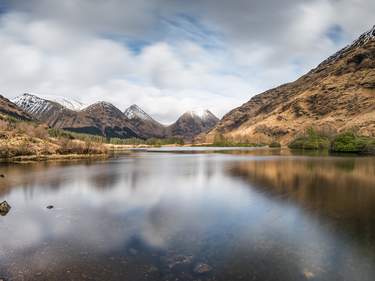
7 days / from 1372 USD
Magical 7-Day Family Adventure in Scotland and England : From Harry Potter to Loch Ness!
Searching for an unforgettable family adventure? Scotland is the perfect destination! With a perfect balance of nature, adventure, and Scottish culture. This 7-day trip offers a delightful mix of activities that everyone in the family will enjoy. Get ready to create life long lasting memories!

9 days / from 1524 USD
Highland Tour: Isle of Skye, Loch Ness and Edinburgh
Discover the beautiful region of Perthshire, the famous Loch Ness and Inverness – the capital of the Highlands. Get a chance to admire Europe’s oldest mountain, stroll along sandy beaches on the Scottish West Coast, and visit the mysterious Isle of Skye.
The information that follows - and much more besides - can be found in The Rough Guide to Scotland - check it out for top Scotland travel advice and inspiration. You might also want to discover the most beautiful places in Scotland — as voted by you.
- English has been the main language of Scotland since the 18th century. Around 60,000 people also speak Gaelic.
- The population of Scotland is just over 5 million. 480,000 reside in the capital, Edinburgh, while Glasgow has a population of 580,000.
- Scotland covers an area of just over 30,000 square miles, with a 2300-mile-long coastline and over 31,460 lochs.
- Scotland is a constituent territory of the United Kingdom of Great Britain and Northern Ireland. Elements of government business are devolved to the separately elected Scottish Parliament

Clouds reflecting in the surface of Loch Lomond - shutterstock
From culture packed city breaks in Edinburgh or Glasgow, to the awe-inspiring wilds of Scotland’s Highlands and islands, you’ll be spoiled for choice when it comes to choosing where to go during your Scotland travel adventure. For orientation and to plan your route, use the map of Scotland . Also, check out the most beautiful places in Scotland as voted by Rough Guides' Readers, as well as the most remote places in Scotland and the must-visit places you haven't heard of yet.
Famed for its magnificent castle and historic Old Town, dramatic Edinburgh remains the obvious draw for visitors. Come in August and you’ll find it transformed by the Edinburgh Festival , the world’s largest arts event - a sure-fire highlight of any Scotland travel experience.
An hour west of Edinburgh, Scotland’s biggest city, Glasgow , has an entirely different vibe. Once a sprawling industrial metropolis, it boasts impressive architectural heritage and a lively social and cultural life - check out the insiders's guide to Glasgow .
Scottish Highlands
You don’t have to travel far north of the Glasgow–Edinburgh axis to find the first hints of Highland landscape, a divide marked by the Highland Boundary Fault which cuts across central Scotland. The lochs, hills and wooded glens of the Trossachs and Loch Lomond are the most easily reached.
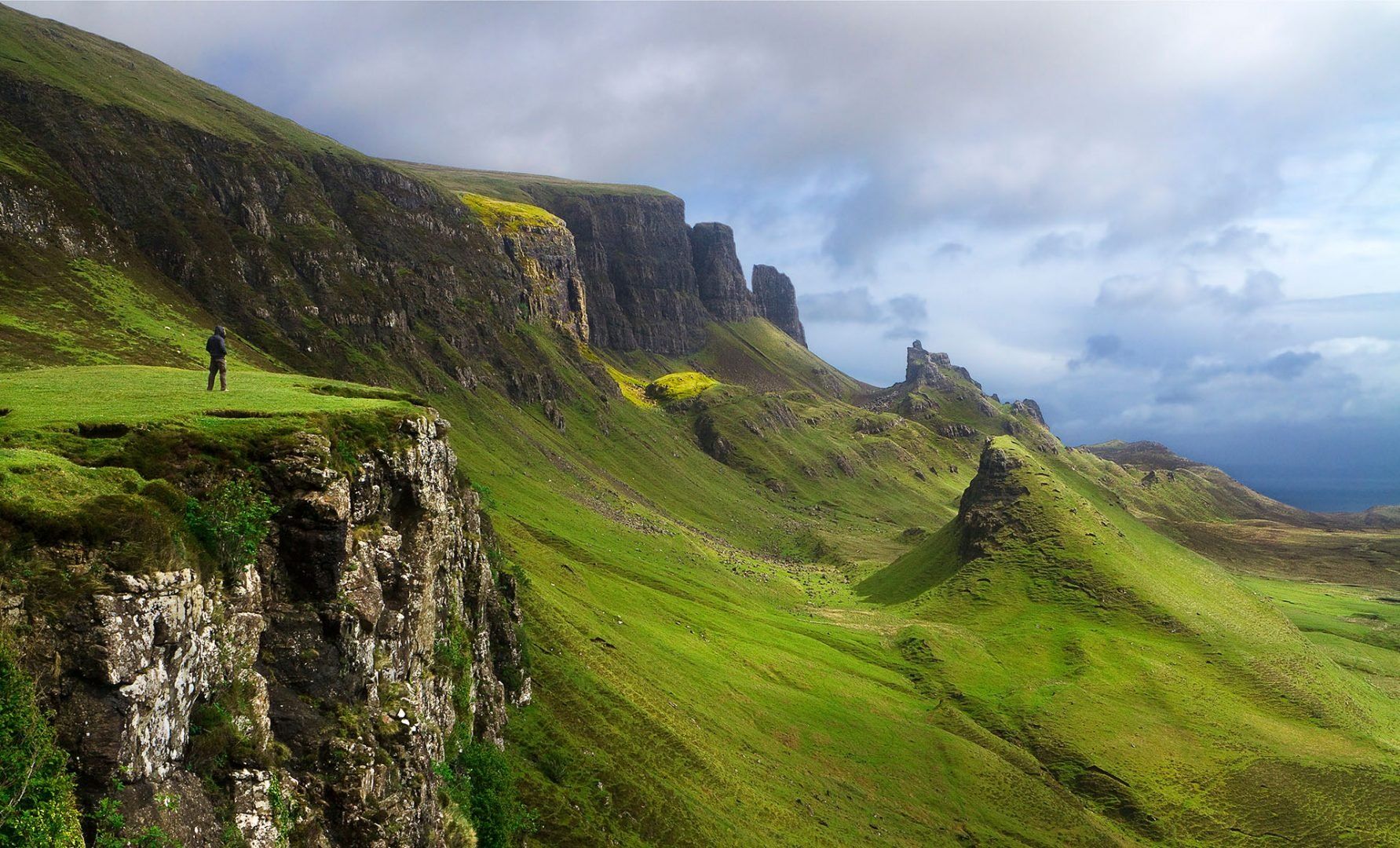
Landscape on the Isle of Skye in the Scottish Highlands, Scotland © David Redondo/Shutterstock
Further north, Perthshire and the Grampian hills of Angus and Deeside show the Scottish countryside at its richest, with colourful woodlands and glens rising up to majestic mountain peaks.
The Great Glen
To reach the far north, you cross the Great Glen , an ancient fissure which cuts right across the country from Ben Nevis to Loch Ness . Scotland’s most memorable scenery is to be found on the jagged west coast, stretching from Argyll all the way north to Wester Ross and the looming hills of Assynt.
The islands
Assorted in character and accessibility, the rocky Hebrides include the Isle of Mull and its nearby pilgrimage centre of Iona ; the Isle of Skye , the most visited of the Hebrides, where the snow-tipped peaks of the Cuillin rise from deep sea lochs; and the Western Isles , an elongated archipelago that is the country’s last bastion of Gaelic language and culture. Off the north coast, Orkney and Shetland offer some of the country’s wildest scenery, birdwatching and best archaeological sites. As such, they’re among the best places to travel in Scotland for nature-lovers and culture vultures
Here’s an overview of just a few famous landmarks and attractions in Scotland everyone should see in a lifetime - suggestions you’ll definitely want to consider when planning to travel to Scotland.
- Edinburgh’s skyline : from Calton Hill, the Old Town appears as an unforgettable vista of tightly packed tenements and spires that rise to the immense castle.
- Caledonian Forest : among the gnarled survivors of the great ancient forests you’ll find one of Scotland’s largest populations of the elusive red squirrel.
- Loch Ness : take the old road around the east shores to find tiny lochans and pretty pubs.
- The Cullin Range : the most spectacular mountain range on the west coast: superb to see, breath-taking (literally) to climb.
- West Highland Railway : from Glasgow to Mallaig, this is one of the great railway journeys of the world - 264 miles of ever-more spectacular scenery, with steam trains in the summer
Discover more great places to see in our ultimate list of things not to miss in Scotland .
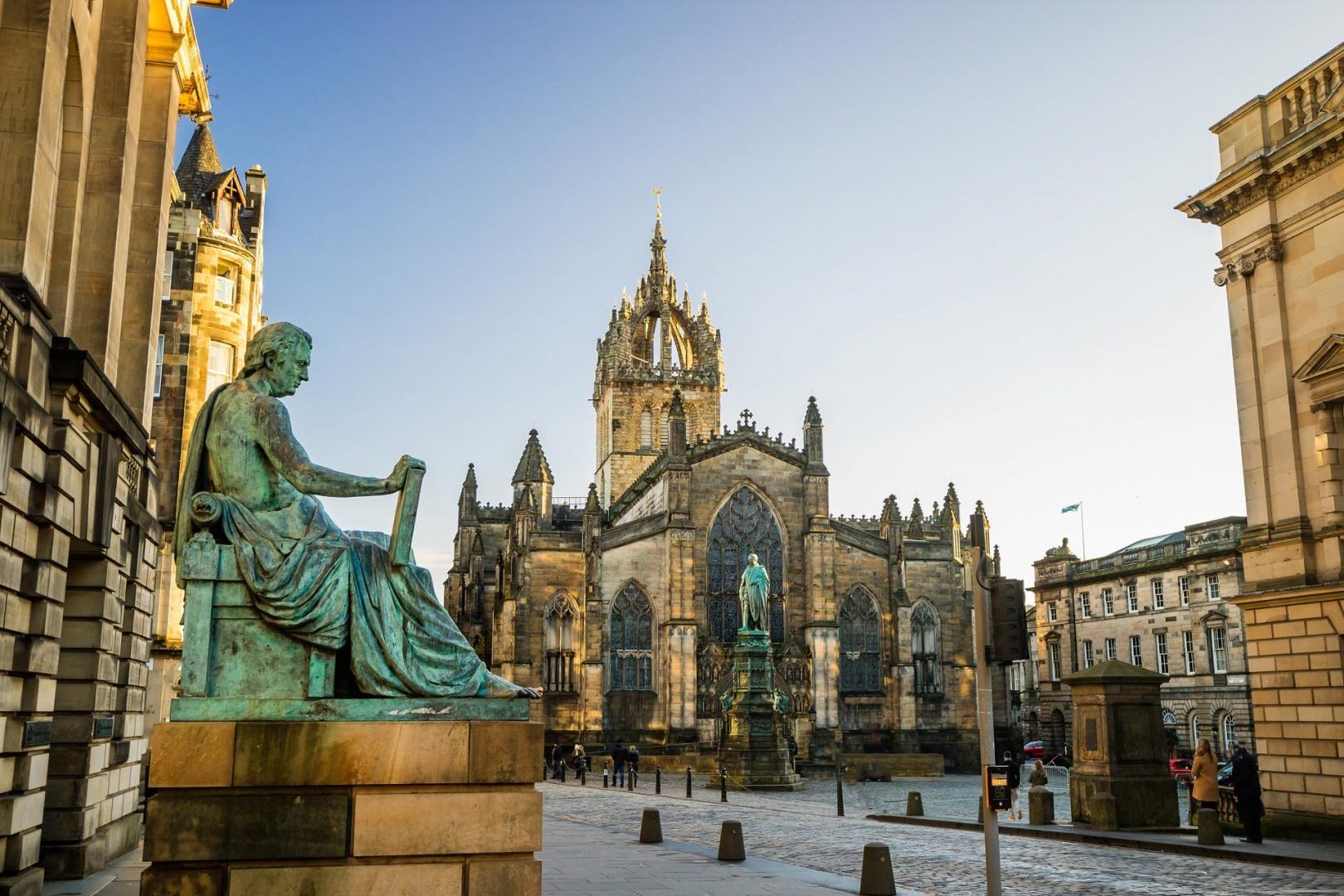
Street view of the historic Royal Mile, Edinburgh, Scotland © f11photo/Shutterstock
The whole of Scotland offers superb opportunities for walking . There are several long-distance footpaths, such as the well-known West Highland Way, which takes between three and seven days to walk. Paths are generally well signposted and well supported, with a range of services from bunkhouses to baggage-carrying services.
Cycling and mountain biking
Travelling in Scotland on a cycle tour is a great way to see some of the remoter parts of Scotland and navigate city streets, and Scotland is also regarded as a top destination for off-road mountain biking. The Forestry Commission has established more than 1150 miles of excellent off-road routes. Some of the tougher routes are best attempted on full suspension mountain bikes, although the easier (blue/green) trails can be ridden on a standard mountain or road bike.
Winter sports
Skiing and snowboarding take place at five locations in Scotland: Glen Coe, the Nevis Range beside Fort William, Glen Shee, the Lecht and the Cairngorms near Aviemore. When the conditions are good, Scotland’s ski resorts have piste and off-piste areas that will challenge even the most accomplished alpine or cross-country skier.
Watersports
Opportunities for sailing around Scotland are outstanding. However, even in summer the full force of the North Atlantic can be felt, and changeable conditions combined with tricky tides and rocky shores demand good sailing and navigational skills. Scotland’s top spots for windsurfing and kitesurfing are Troon on the Ayrshire coast, St Andrews and Tiree. The latter is renowned for its beaches and waves and has an excellent surf.

Glenfinnan Railway Viaduct, Scotland © Nick Fox/Shutterstock
Explore ancient heritage
From Iron Age forts, burial grounds and mysterious standing stones, to remains of Neolithic settlements, the ancient archaeological sites scattered across Scotland provide a window on past civilisations going back thousands of years. On Orkney, on the West Mainland, the best known of these is the Neolithic village Skara Brae . West Mainland is also the site of one of Europe’s most impressive Neolithic burial chambers. Like Skara Brae, Maeshowe is well preserved – and even contains some racy Viking graffiti.
Uncover atmospheric castles
Castles in Scotland ooze centuries worth of history. There are atmospheric, crumbling ruins, such 15th-century Kilchurn Castle, at the tip of Loch Awe, in Argyll. And there are grand, wonderfully preserved, architectural piles, such as Dunrobin Castle in the north, and Blair Castle in Perthshire.
Entertainment
Attending a Highland Games can be a true highlight of travel to Scotland. While tossing cabers will feature, there’s a whole lot more to the games than that alone - including dancing competitions involving the Highland Fling, and bagpipe-playing competitions. There’s also money to be made from winning, which adds a thrilling sense of drama. The games take place between May and mid-September, and the best-known events are held at Braemar - which usually sees a royal in attendance.
Road-tripping
To take in all of the above (and more of, you could explore five fantastic Scottish road-trips – arguably the best way to visit Scotland for off-the-beaten-track experiences.
Deciding the best time to travel to Scotland may well be wedded to the weather. June, July and August tend to be the most popular months to visit Scotland - days are generally mild (or even warm) and the light lingers longs - though local school holidays make them the busiest period. August in Edinburgh is Festival time, and midges can be a nuisance if you’re exploring the countryside. For these reasons, the best month to visit Scotland might be May or September, when the weather stands a good chance of being clement, and the crowds are less of a problem.
If you’re wondering how to get to Scotland from outside the UK, your best option is by plane. Scotland has three main international airports, with Glasgow handling most nonstop scheduled flights from North America. If you’re travelling to Scotland from elsewhere in the UK, coach and train services are good, though for speed you could consider taking a plane to reach the more remote islands.
Read on for the best ways to get to Scotland .
Given that most Scots live in the central belt - Glasgow in the west and Edinburgh in the east - public transport in these areas is excellent, with pretty much everywhere accessible by train and bus. If you’re wondering how to travel around Scotland in more remote areas, it has to be said that further south and north it can be trickier, though, with services much reduced and some remote areas not covered, so you might need to consider hiring a car, or else plan your routes carefully.
Learn more about transportation and how to get around Scotland - a key part of any Scotland travel guide for travellers who are keen to get off the beaten track.

Sunny and cloudy at the same time at Rannoch Moor, Scotland © Shutterstock
As in the rest of Britain, accommodation in Scotland comes in all shapes, sizes and guises, with hotels ranging from cheap and (if you’re lucky) cheerful chains, to grand country mansions offering five-star luxury in impossibly pretty surroundings. For an authentic, friendly Scotland travel experience, you might want to explore the country’s varied B&Bs and guesthouses, while visitors on a budget (or those of an adventurous bent) won’t be disappointed with the hostel and camping options.
Discover how to find the best accommodation in Scotland .
While Scotland isn’t seen as a culinary destination, the country offers some exceptional opportunities to eat fresh and eat local, like sumptuous wild salmon and smoked herring (try the latter in Cullen skink - a soup of smoked haddock, cream and potato). Sweet tooth? Then traditional clootie dumplings (a filling fruit pudding) is a must-try when you travel to Scotland. And of course, the malt whiskey is a world-beater, with a burgeoning cask-conditioned real ale scene adding to the heady mix.
Read more about local food and drink in Scotland .
Scotland has a rich calendar of cultural events and festivals, kicking off with Hogmanay (New Year’s Eve) and New Year’s Day street parties. Then comes Burns Night on 25th January, when Scots worldwide commemorate Scotland’s greatest poet, Robert Burns. Early May heralds the Spirit of Speyside Scotch Whisky Festival, while June brings the beginning of the Highland Games season across the Highlands, northeast and Argyll. Come August, Edinburgh fizzes and throngs with one of the world’s greatest arts jamborees - the Edinburgh International Festival.
To uncover more authentic experiences during your Scotland trip, check out places in Scotland you’ve probably never heard of (but won’t want to miss).
Inevitably, Edinburgh’s nightlife is at its best during the Festival, but its club scene can be enormously enjoyable, and you can hear live jazz, folk and rock in many pubs. For Edinburgh’s best eating options, head to the cobbled Shore of Leith - it’s awash with good-quality seafood bistros and a concentration of Michelin stars.
Meanwhile, Glasgow has an incredible performing arts scene - it’s home to the Scottish Opera, Scottish Ballet, Royal Scottish National Orchestra, and the BBC Scottish Symphony Orchestra. Elsewhere, university towns like Aberdeen, St Andrews, Stirling and Dundee offers plenty of evening action, while, even the remotest villages and islands will have a local pub for you to get cosy in, often with live music.
If you’re wondering how many days you need in Scotland, you might be pleased to know you can experience a fair bit in just a few days. Edinburgh, for example, has plenty to entertain for at least a (long) weekend. If you have 5-6 days, you could also take in St Andrews, Loch Ness, Fort William and the Highlands on an easy trip from the capital.
Among the best ideas for spending a week and more in Scotland, you could consider a more immersive Highland tour to discover the beauties of Perthshire and Inverness (capital of the Highlands) allowing yourself time to amble sandy beaches on the Scottish West Coast, and visit the mysterious Isle of Skye - Scotland travel at its most immersive.
For more inspiration, see some of the Scotland itineraries from our Scotland travel guide and local travel experts .

Cairngorms, Highlands, Lecht, Scotland © taboga/Shutterstock
- Scotland is not England. Scots are not English - don’t confuse the two. Scotland and Scottish people have their own identity and heritage.
- Don’t confuse “Scots” with “Scotch”. The former refers to people from Scotland, while Scotch means things of Scottish origin, like Scotch whiskey, or shortbread.
- If you pause to listen to a bagpiper performing on the streets, leave a tip (especially if you’ve taken a photo). It takes a lot of skill to get a tune from those pipes.
- That said, you don’t need to leave a tip in pubs, and 10% is customary in restaurants.
Practical travel tips for Scotland
From travel safety to visa requirements, discover the best tips for traveling to Scotland
- Eating and drinking in Scotland
- Getting around Scotland: Transportation Tips
- Travel Tips Scotland for planning and on the go
- The Unit of currency in the UK is the pound sterling (£), divided into 100 pence (p).
- Note that the Bank of Scotland, the Royal Bank of Scotland (RBS) and the Clydesdale Bank issue their own bank-notes – all are legal tender throughout the UK (no matter what shopkeepers south of the border might say).
- You’ll find a branch of at least one big Scottish high-street banks in every sizeable town, usually with an ATM attached. That said, on some islands, and in remoter parts, you may find there’s only a mobile bank that runs to a timetable.
- Plugs - the current is the EU standard of approximately 230v AC. All sockets are designed for British three-pin plugs.
For advice about practical matters when travelling in Scotland, check the travel advice for Scotland .
Scotland is a relatively expensive place to visit, with travel, food and accommodation costs higher than the EU average. If you’re renting a car, staying in comfortable B&Bs or hotels and eating well, you should reckon on at least £100 a day per person. Staying at budget B&Bs, eating at unpretentious restaurants and visiting the odd tourist attraction, means that you’re looking at around £75 each per day. That said, Scotland travel doesn’t have to break the bank. The expenditure for a couple travelling on public transport, self-catering and camping, is in the region of £30 each a day (rising to around £50 a day if you’re staying in hostels and eating the odd meal out).
- Water proof jacket and umbrella - chances are, it will rain during your trip.
- Comfortable shoes - even if you plan to be based in a city, you won’t want to be held back by footwear that’s not great on cobblestones and hills.
- Insect repellent - essential in the summer, especially if you’re planning to explore the great outdoors. The midges can be mightily annoying.
- Travelling from outside the UK? Bring a three-pin plug adaptor.

Glasgow riverside © Shutterstock
As with any country, Scotland’s major towns and cities have their danger spots, but these tend to be inner-city residential areas where tourists rarely roam. The chief urban risk is pickpocketing, so carry only as much money as you need, and keep all bags and pockets fastened. Out in the Highlands and Islands, crime levels are very low.
For up to date information about safety and travel requirements for Scotland, check government guidelines - see Foreign, Commonwealth & Development Office advice , while travellers from the US should check governmental travel advisory guidelines for Scotland .
- Beautiful as it is, avoid only visiting Edinburgh. As with all capital cities, it’s not representative of the wider country and, given that the area is easy to get around, there’s no excuse for not exploring little wider.
- Related, when it visiting come lochs, don’t just hone in on Loch Ness (lovely as it is). Scotland has 30,000 lochs to choose from.
- Don’t expect wonderful weather. Even August can bring rain and cooler temperatures, so come expecting it to be (at best) changeable - you’ll be all the more appreciative when that sun does shine through (it does happen).
Check out The Rough Guide to Scotland - an in-depth Scotland travel guide covering everything you need to know before you go and while on the road.
If you’re travelling to Edinburgh, our pocket guide is very handy. If you’re heading to the Highlands and Islands , we have that covered too. Explore Rough Guides' Scotland travel guide range .
If you’re pressed for time, guided tours can be rewarding and convenient. For example, you could book a Best of Scotland’s Highlands tour , or how about a History of Whisky with Tasting and Story-telling experience?
Alternatively, if you’d prefer to leave the entire planning process to someone else, check out our Scotland itineraries - curated by experts, and fully-customisable.
Related articles from the blog

The Rough Guides to Scotland and related travel guides
In-depth, easy-to-use travel guides filled with expert advice.

Find even more inspiration here
Planning your own trip prepare for your trip.
Use Rough Guides' trusted partners for great rates
written by Rough Guides Editors
updated 26.04.2024
Ready to travel and discover Scotland?
Get support from our local experts for stress-free planning & worry-free travels.
- Where to stay
- Travel advice
Edinburgh Travel Guide

Why Go To Edinburgh
Burrowed beside long-dormant volcanoes and reigning over green moorlands, Edinburgh (or Ed-n-bruh in Scots speech) is known for more than its staggering landscape. The Athens of the North, as Edinburgh is sometimes nicknamed, also claims a cast of near-mythic characters: Rebel leader Sir William Wallace (aka Braveheart); the tragic Mary, Queen of Scots; the Enlightenment thinkers David Hume and Adam Smith; "James Bond" actor Sean Connery; and prolific wordsmiths Sir Arthur Conan Doyle and J.K. Rowling – are all woven into this very old, yet very relevant city.
But if your impression is confined to bagpipes, tartans, crests and kilts, you'd be wrong. The second most-visited city in the United Kingdom (after London ), Edinburgh offers an abundance of things to do . History buffs will enjoy Edinburgh Castle , Holyroodhouse Palace and other attractions found along the Royal Mile . Those in search of an authentic live-as-the-locals experience will find it in the outer-lying neighborhood pubs, shops and parks. Shoppers will find retail bliss in New Town; art aficionados will enjoy the free Scottish National Gallery ; and theater hounds will meet their match at August's Edinburgh Festival.
Find Flight and Hotel Deals
Navigate forward to interact with the calendar and select a date. Press the question mark key to get the keyboard shortcuts for changing dates.
Navigate backward to interact with the calendar and select a date. Press the question mark key to get the keyboard shortcuts for changing dates.
- # 5 in Best Destination Wedding Spots in Europe
- # 6 in Best Places to Visit in June 2024
- # 11 in Best Family Vacations in Europe
See All 4 Rankings
Best of Edinburgh
Best hotels in edinburgh.
- # 1 in The Balmoral Hotel, a Rocco Forte Hotel
- # 2 in Fingal - A Luxury Floating Hotel
- # 3 in Waldorf Astoria Edinburgh - The Caledonian

Best Things to Do in Edinburgh
- # 1 in Edinburgh Castle
- # 2 in Holyrood Park and Arthur's Seat
- # 3 in Royal Yacht Britannia

Popular Tours

Loch Ness, Scottish Highlands, Glencoe and Pitlochry Tour
(4673 reviews)
from $ 78.74

Edinburgh Castle Guided Walking Tour in English
(3062 reviews)
from $ 43.24

Edinburgh Castle: Guided Walking Tour with Entry Ticket
(2496 reviews)
from $ 45.18
Edinburgh Travel Tips
Best months to visit.
The best time to visit Edinburgh is June through August when the average high temperatures rise to a balmy 65 degrees Fahrenheit. But this is also the city's busiest time for tourism, especially in August when festivals fill up the calendar. To avoid spending a small fortune, you'll have to bundle up: winter (November to March) offers the best low-season deals, except during the city's New Year's celebration, Hogmanay. Spring and early fall are the sweet spots – relatively mild weather and thin crowds pair with the chance to find hotel and airfare deals.
Weather in Edinburgh
Data sourced from the National Climatic Data Center
What You Need to Know
Brrr, it's cold out there Edinburgh is located in the Northern Hemisphere, so expect chills year-round. Bring a sweater or two, even in the summer.
Edinburgh vs. Glasgow The two Scottish cities are pretty competitive, so it's not a good idea to trash talk one or the other in a mixed crowd.
Know the ingredients Scottish specialties, such as haggis and black pudding, have some ingredients American palates might not be accustomed to. A food tour is a great way to sample Scottish favorites with the guidance of a local.
How to Save Money in Edinburgh
Walk Most of Edinburgh's biggest attractions are within a 2-mile radius of one another, so hopping on a bus or tram is unnecessary most of the time.
Visit in the winter An influx of visitors come to Edinburgh during the summer for festival season. The colder months see fewer visitors and lower room rates.
Veer off the beaten track Stray from the touristy Royal Mile and Princes Street and you'll likely find better shopping and dining options for a fraction of the price.
Culture & Customs
Although the language is the same, Scots inflect their speech with a Sean Connery-esque brogue, which might be difficult to understand. You shouldn't be afraid to ask Scottish people to repeat themselves; no one will be offended. But be advised that residents are extremely proud of their city; don't exalt Glasgow at the expense of Edinburgh unless you're willing to argue it out. For the most part, visitors will probably be surprised by the warmth and friendliness of the Scots.
The official currency is the pound sterling. Since the pound to U.S. dollar exchange rate fluctuates, be sure to check what the current exchange rate is before you go. Major credit cards are accepted at most restaurants and shops. Much like the rest of the U.K. and Europe, tipping is not required. However, if you feel so inclined and your service was exceptional, a 10% tip will be more than enough.
What to Eat
Scotland is known for haggis, which – if you really want to know – is sheep's heart, liver and lungs minced together with onions, oatmeal and some seasoning. It's usually served with neeps and tatties , or mashed turnips and potatoes. But note that Edinburgh also offers an array of international cuisine as well, from Thai to Italian. Edinburgh's pubs offer traditionally British cuisine and other comfort food items, including fish and chips and hamburgers, which are also reasonably priced. But if you're willing to take on the haggis challenge, pop on over to Greyfriars Bobby's Bar , the pub located in front of the Greyfriars Bobby memorial, which honors the dog who guarded his deceased master's grave for more than a decade, or Arcade Haggis & Whisky House .
Not keen on trying haggis? Not to worry, Scotland has plenty of other food offerings. One traveler favorite is Makars Gourmet Mash Bar Company , which dishes up hearty favorites like sausages, lamb shank and vegetarian haggis atop mashed potatoes. For a small snack, pop by Pickles . It serves charcuterie boards along with pate, wine and other beverages. For a special occasion, visit Aizle for its delicious seasonal fare.
Many of Edinburgh's restaurants are clustered around Old Town's Royal Mile and New Town's Princes Street. Thanks to its location right by the water, the northern village of Leith is the place to go for fresh seafood. South Edinburgh, or anywhere outside of the city center, also has a variety of cheaper cafes and restaurants for budget-minded travelers. If you want a little help navigating the Edinburgh dining scene, consider signing up for a food tour led by a local.
Edinburgh is a safe city. It's generally safe to walk around at night, but make sure to know where you're going. Parts of the city, especially Old Town, are filled with winding alleys, closes and wynds, making it easy to get lost at night. Exercise caution for pickpockets in tourist areas, but keep in mind that Edinburgh's low crime rate make pickpockets uncommon in comparison to other big European cities.
Getting Around Edinburgh
The best way to get around Edinburgh is by foot. This hilly city may have you a little out of breath at certain points, but it's still small enough that walking makes the most sense. When you grow tired or want to explore out-of-the-way areas, the city's efficient bus can cart you the rest of the way. A bus – Airlink Shuttle , to be exact – can also bring you from Edinburgh Airport (EDI) into the city center in about the same time as a cab, but for fewer pounds. Once there, you can hop on the city's tram system or explore the city via bus or black cabs, which can be found on high streets (main thoroughfares) and other points of interests throughout town.
Entry & Exit Requirements
A valid travel document is required for United States citizens traveling outside the mainland by air or sea, as well as for U.S. citizens trying to re-enter the country. A United States passport is the preferred form of documentation, and children must have them, too. Note that U.S. citizens do not need a visa unless they plan on staying longer than six months. Visit the U.S. State Department's website for the latest information on the U.K.'s foreign exit and entry requirements.
Calton Hill offers spectacular views of the city below.
Explore More of Edinburgh

Things To Do
Best hotels.

You might also like

Scottish Highlands

# 4 in Best Day Trips from London
If you make a purchase from our site, we may earn a commission. This does not affect the quality or independence of our editorial content.
Recommended
The 28 Best Water Parks in the U.S. for 2024
Holly Johnson|Timothy J. Forster May 8, 2024

The 18 Best Napa Valley Wineries to Visit in 2024
Lyn Mettler|Sharael Kolberg April 23, 2024

The 25 Best Beaches on the East Coast for 2024
Timothy J. Forster|Sharael Kolberg April 19, 2024

The 50 Best Hotels in the USA 2024
Christina Maggitas February 6, 2024

The 32 Most Famous Landmarks in the World
Gwen Pratesi|Timothy J. Forster February 1, 2024

9 Top All-Inclusive Resorts in Florida for 2024
Gwen Pratesi|Amanda Norcross January 5, 2024

24 Top All-Inclusive Resorts in the U.S. for 2024
Erin Evans January 4, 2024

26 Top Adults-Only All-Inclusive Resorts for 2024
Zach Watson December 28, 2023

Solo Vacations: The 36 Best Places to Travel Alone in 2024
Lyn Mettler|Erin Vasta December 22, 2023

26 Cheap Beach Vacations for Travelers on a Budget
Kyle McCarthy|Sharael Kolberg December 4, 2023

How much of Scotland can I experience in a week?

Aug 3, 2023 • 4 min read
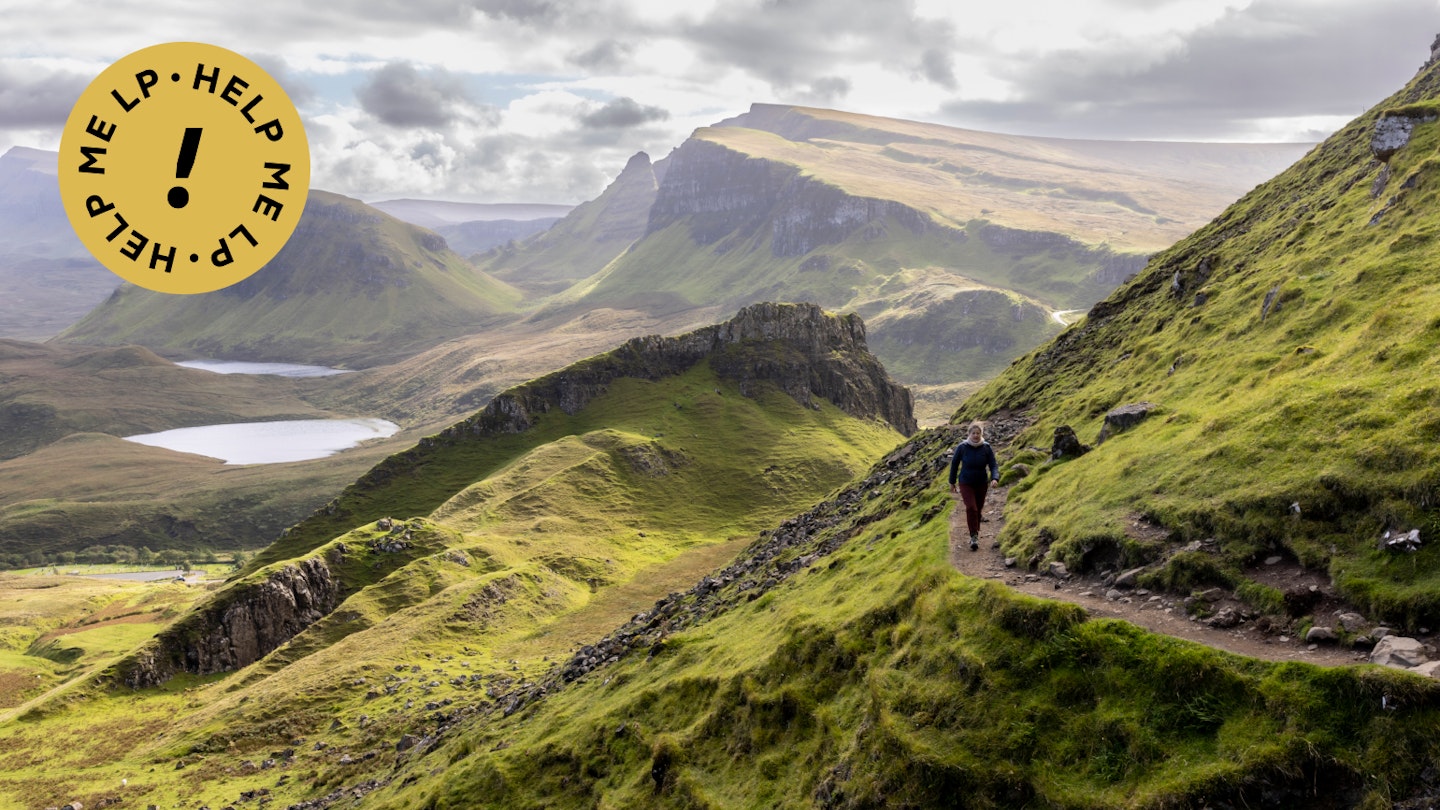
You’ll want to stop to take in the spectacular views hiking the Isle of Skye © iStock
A reader asks whether it’s possible to traverse much of Scotland in just one week. Our expert has some thoughts.
Lonely Planet’s team of writers and editors is here to address your travel problems and provide tips to help you plan a hassle-free trip. Lonely Planet author Luke Waterson, who has written three guidebooks and numerous travel articles on Scotland. helped us out with this Scottish query.
Question: We are spending a week in Scotland . Is it possible to do Inverness , Portree on the Isle of Skye and a few days in Edinburgh within this time? If not, what else do you recommend? We love scenery and historical sites.
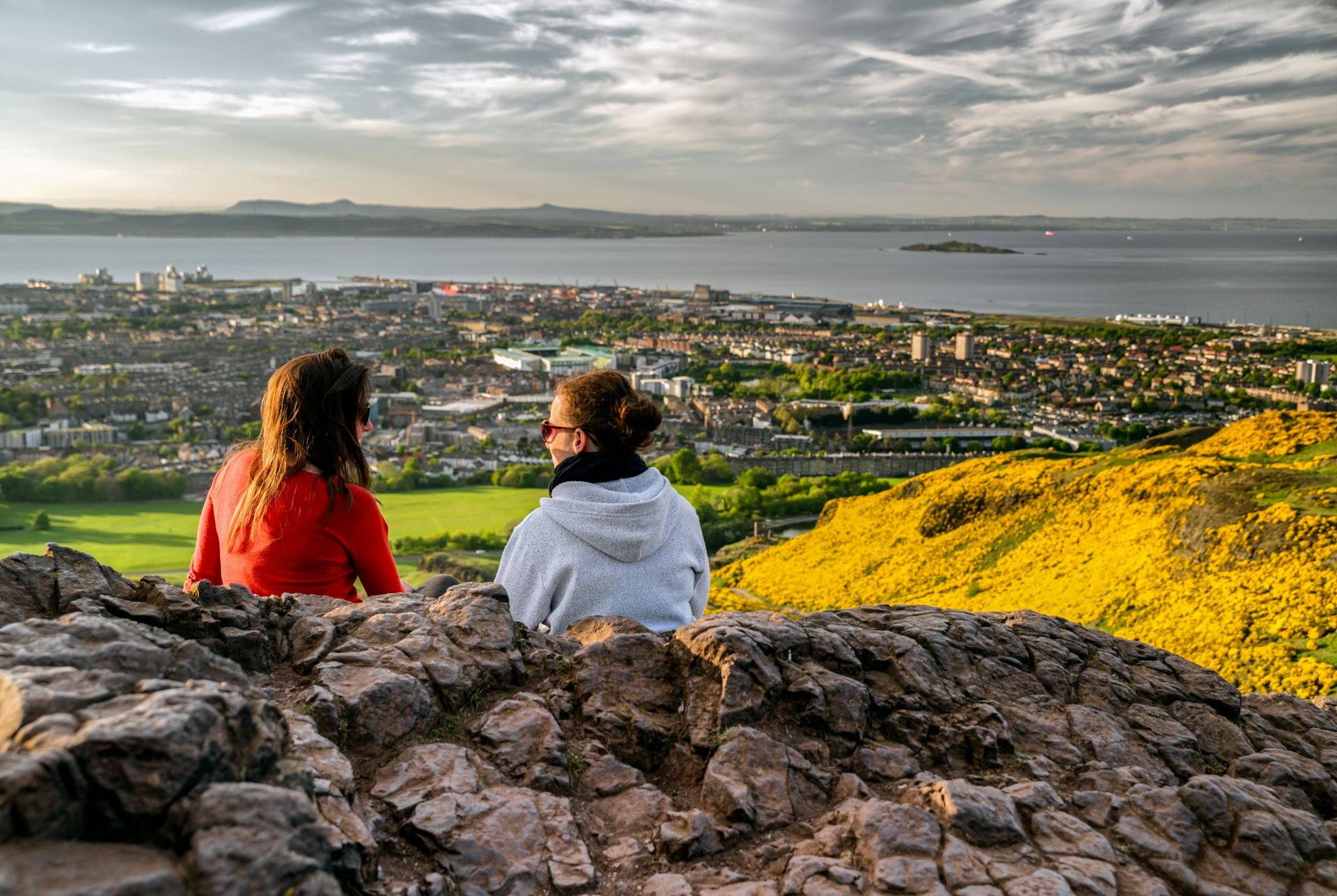
Luke Waterson: All these are worthy destinations for a best-of-Scotland trip. Hitting them all up in a week can certainly be done – but it will be fairly frantic. For the sake of a less hectic holiday, and so that you remember Scotland as fondly as possible, consider a couple of itinerary edits.
While it doesn’t seem that way on a map, Edinburgh, Inverness and Portree on the Isle of Skye are far apart indeed in terms of time: driving non-stop between the three alone takes a good seven hours – and that’s assuming the going’s good. You mention Inverness as a starting point, yet logistically this would come in the middle of any itinerary featuring these places. Given Edinburgh’s better international flight, rail and road connections, it makes sense to start your adventure there.

Setting off for Skye
After some time in one of Europe’s most dazzling capital cities, the best option is to rent a car for exploring everywhere else on your trip, given where you want to go and the time you have. You’d need to leave Edinburgh on day three in order to spend two nights in Inverness, then on day five leave by lunchtime to drive the three hours to Portree for a late-afternoon arrival. Day five evening and all of day six could indeed be spent in Portree, before you’ll have to head back fairly early on day seven to make onward connections from Edinburgh (or Inverness or Glasgow, the other two transport hubs you could use). However, I’m guessing you will be wanting to see some of Skye if you’ve made it this far. And here is the caveat: the roads get slower, the scenery more staggering and the desire to stop en route more frequent…meaning you are sure to be frustrated and frazzled by the tightness of your schedule.
My suggestion: skip Inverness. It’s nice enough if you need to be there, but the reason most folks visit is to take a cruise on Loch Ness , one Scotland’s most underwhelming sights. It’s not unattractive – just way down the league table of Scotland’s loveliest lochs, despite the huge crowds it attracts.

An alternative: linger in Edinburgh, and explore the Highlands
Linger another day in Edinburgh; it has so much to offer. You can squeeze in the must-see Edinburgh Castle and Royal Mile sights in a day, then spend two days getting under the city’s skin with visits to the likes of laid-back Stockbridge, with its Georgian architecture and well-to-do cafes and delis; Calton Hill , writer Robert Louis Stevenson’s favorite city viewpoint; Leith for exquisite seafood and the Royal Yacht Britannia ; and charming fishing village suburb Cramond. Then, drive to Portree on day four. You can make the journey memorable by stopping somewhere like Glencoe, even taking the three-hour out-and-back to Coire Gabhail (the Hidden Valley) and soaking up some of the most impressive Scottish Highlands mountain scenery, or pausing at probably the country’s most fetching fortress, Eilean Donan Castle , which sticks out on a causeway-connected island in Loch Duich. This approach gives you three days on Skye.
Here, I think your plan of basing yourselves in Portree is sound. Your extra day opens up intoxicating possibilities, too. Drive around Trotternish peninsula to wander among some of Britain’s craziest rock formations, like the Quiraing and the Old Man of Storr . Or head to Glenbrittle or Elgol for knockout views of what general consensus has as the UK ’s most picturesque mountain range, the Cuillins. You’ll also have ample time to appreciate Portree’s candy-colored harborfront houses and inviting places to eat and drink.
Perhaps most importantly, you’ll feel that you can relax a bit.
Explore related stories
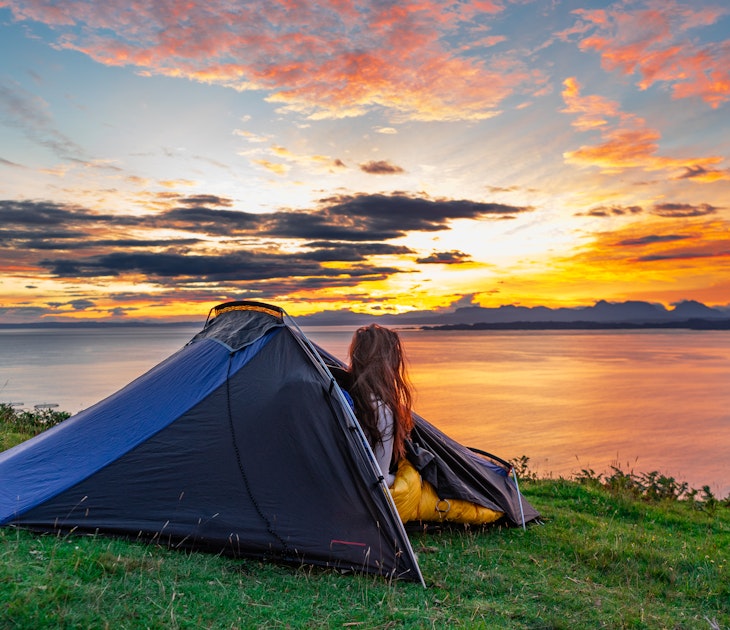
Nov 19, 2023 • 10 min read
Wondering where to go in Scotland? Here are 14 of the best places to visit, from cities and grand castles to wild glens and Britain’s best driving route.
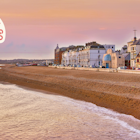
Aug 16, 2023 • 6 min read
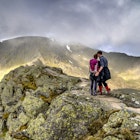
Jul 25, 2022 • 8 min read
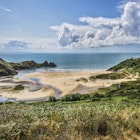
Sep 25, 2021 • 5 min read

Jun 12, 2024 • 12 min read

May 14, 2024 • 7 min read

May 13, 2024 • 7 min read

May 4, 2024 • 5 min read

Apr 15, 2024 • 10 min read

Mar 14, 2024 • 16 min read
EURO 2024: All you need to know
Sunday, June 16, 2024
Article summary
When is it? Where is it? Who's qualified? How does it work? All your UEFA EURO 2024 questions answered.
Article top media content

Article body
Where is euro 2024 being held .
Germany is hosting EURO 2024, having been chosen to stage the 17th edition of the UEFA European Championship at a UEFA Executive Committee meeting in Nyon on 27 September 2018. Türkiye was the only other nation that bid to hold UEFA EURO 2024. West Germany hosted the 1988 edition, but this is the first time Germany has staged the UEFA European Championship since reunification. The 2006 FIFA World Cup also took place in the country.
What are the dates for EURO 2024?
The UEFA EURO 2024 final tournament began on 14 June and runs until 14 July 2024. The group stage concludes on 26 June, with the knockout stage beginning on 29 June.
As the host nation, Germany were seeded in Group A and occupied position A1; they therefore played the opening match – a 5-1 win against Scotland – at the Munich Football Arena on Friday 14 June. Germany/West Germany have featured at every EURO since 1972. West Germany won the 1972 and 1980 editions, while the reunited Germany triumphed at EURO '96 .
Who qualified for EURO?
The draw for the final tournament was held in Hamburg on Saturday 2 December.
Group A : Germany, Scotland, Hungary, Switzerland Group B : Spain, Croatia, Italy, Albania Group C : Slovenia, Denmark, Serbia, England Group D : Poland*, Netherlands, Austria, France Group E : Belgium, Slovakia, Romania, Ukraine* Group F : Türkiye, Georgia*, Portugal, Czechia
* Qualified via play-offs
Sign up for a free MyUEFA account to watch live streams and on-demand content, play games and challenge your friends, win money-can’t-buy prizes, and apply for tickets to Europe’s biggest games.
What is the tournament format?
The format is the same as it was for UEFA EURO 2020 . The top two in each of the six final tournament groups proceed to the round of 16 along with the four best third-placed finishers.
Where and when will the final of EURO 2024 be played?
Berlin's Olympiastadion will stage the final on Sunday 14 July 2024.
What are the EURO 2024 host cities?
The ten venues chosen to host games at the tournament include nine of the stadiums used at the 2006 World Cup, plus the Düsseldorf Arena.
Uniquely, the Munich Football Arena is staging matches for the second EURO in succession; Bayern München's home ground was one of 11 arenas that held games during UEFA EURO 2020.
Host venues are as follows:
Berlin : Olympiastadion Berlin (current capacity: 71,000) Cologne : Cologne Stadium (43,000) Dortmund : BVB Stadion Dortmund (62,000) Dusseldorf : Düsseldorf Arena (47,000) Frankfurt : Frankfurt Arena (47,000) Gelsenkirchen : Arena AufSchalke (50,000) Hamburg : Volksparkstadion Hamburg (49,000) Leipzig : Leipzig Stadium (40,000) Munich : Munich Football Arena (66,000) Stuttgart : Stuttgart Arena (51,000)

When did EURO 2024 tickets go on sale?
The latest UEFA EURO 2024 ticketing information can be found here .
What sustainability measures are in place at EURO?
In line with increased societal expectations around football needing to accelerate action on social and environmental sustainability, the UEFA EURO 2024 tournament wants to lead by example through targeted measures and investments. The full Environmental, Social and Governance strategy can be found here .
Are there EURO 2024 fan zones in Germany?
Every host city will welcome supporters to dedicated fan zones with public viewing installations. Check out the event guide for each host city for further details on how to prepare for your EURO 2024 experience in Germany, whether you have a ticket or just want to soak up the atmosphere during the football festivities.

What is the best way to get around Germany?
Travelling by train and public transport is the most convenient and sustainable option to travel during the tournament. EURO 2024 ticket holders have access to discounted national and international train tickets, as well as a 36 Hour Travel Pass for public transport at no extra cost .
Is there an official EURO 2024 match ball?
FUSSBALLLIEBE, the Official Match Ball of UEFA EURO 2024, is being used during the final tournament . It was unveiled in November 2023 by UEFA and adidas at a special event in front of the Olympiastadion in Berlin. German for "love of football", FUSSBALLLIEBE features adidas Connected Ball Technology for the first time at a UEFA EURO.
Who is the EURO 2024 mascot?
The official tournament mascot is named Albärt following a vote conducted among UEFA.com users and schoolchildren across Europe, through the UEFA Football in Schools programme. Albärt, a teddy bear, won 32% of the vote. The ursine mascot was first introduced to Germany fans in Gelsenkirchen in June 2023, ahead of the national team's friendly game against Colombia.

Who are the city ambassadors for EURO 2024?
Berlin : Kevin-Prince Boateng Cologne : Harald Schumacher Dortmund : Roman Weidenfeller, Annike Krahn Düsseldorf : Martina Voss-Tecklenburg, Sandra Mikolaschek, Selin Oruz Frankfurt : Alex Meier, Deborah Levi Gelsenkirchen : Gerald Asamoah Hamburg : Patrick Esume Leipzig : Professor Dr Jörg Junhold, Anja Mittag, Jürgen Zielinski Munich : Dr Felix Brych Stuttgart : Cacau, Niko Kappel, Eli Seitz
Is there a EURO 2024 volunteer programme?
The volunteer team is complete! Over 146,000 football enthusiasts submitted their applications to become a volunteer at EURO 2024, with 16,000 volunteers from 124 nations subsequently selected.
Being a volunteer is a one-of-a-kind adventure: a hands-on job that encompasses everything from interacting with fans to driving trucks and assisting with accreditations. The volunteers will represent Germany in the ten host cities and stadiums during the event, welcoming guests from all over the world, as well as playing a central role in making the tournament a EURO for all, bringing to life the motto 'United by football. Vereint im Herzen Europas.'

Is there an official EURO 2024 song?
FIRE – from Italian producers Meduza, American pop-rock trailblazers OneRepublic and German singer-songwriter Leony – has been released on all streaming platforms. The song, written by Ryan Tedder of OneRepublic and produced by MEDUZA, merges the Italian group's much-loved anthemic house production, OneRepublic's compelling soundscapes and Leony's pop expertise into a track that embodies the fervour and spirit of football and music fans alike.
Is there an eEURO?
UEFA eEURO 2024 began with the online qualifiers in March 2024 and will conclude with the final in Germany this summer. EA SPORTS FC™ 24 is the official platform for UEFA's eEURO.
Selected for you

EURO 2024 match schedule

EURO 2024: Host cities

EURO 2024 fixtures by venue

EURO 2024 fixtures by team

IMAGES
VIDEO
COMMENTS
An important Scotland travel tip to know is that you should expect clouds, rain, wind, sideways rain, fog, and the occasional sun even in the summer. In Scotland, the saying goes, " a dry day is a good day. " If you're coming to Scotland for a suntan, you may want to rebook your flights to Greece.
Don't buy the Scotland tourist outfit. One of the biggest Scotland travel tips is to avoid shopping at tacky souvenir shops that sell imported stuff. You'll find polyester tartan, cheap plastic toys, and a whole plethora of clichés. These shops are plentiful, especially on and around the Royal Mile in Edinburgh.
Scotland Travel Guide: Money-Saving Tips. While Scotland is expensive, there are lots of ways to lower your costs. Here are some tips to help you save money in Scotland: Get the Edinburgh City Pass - If you're planning to explore Edinburgh, get the City Pass. For 45 GBP, you get access to 22 attractions as well as free transportation to and ...
Wayward sheep and red deer might also take over the road. Patience is key, and a car or camper will get you to where you want to go faster - and more efficiently - than using Scotland's skeletal train and bus network. Or take your bike, inflatable kayak or canoe on a Scotrail service, now amped-up with more bike carriages and space for ...
1. Know the difference between Scotland, England, the UK & Great Britain. Alright, let's kickstart this list of Scotland travel tips with a simple but very important distinction: the difference between Scotland, England, the UK & Great Britain.. While I'd like to think not too many people use them interchangeably, here's what you need to know: Scotland is located in the northern portion ...
Jess Macdonald/Travel + Leisure. The clue is in its name: the Highlands are the mountainous upper half of Scotland, covering 10,000 square miles of picturesque scenery. The region's lively capital ...
To explore Scotland away from the crowds, travel south to the Borders and start with these eight spectacular stops. Read article. Things to Know. If you're looking to get the lowdown before visiting Scotland, start with these insider local tips. Read article. Transportation.
Welcome to Scotland. Scotland is a place of epic natural landscapes, engaging cities and rich cultural heritage. Start your adventure and discover our hidden gems to create memories with friends and family. But don't just take our word for it. National Geographic has just included Scotland in their Best of the World 2024 list, and Far North ...
Weather. When in Scotland, you need to be prepared for all sorts of weather no matter when you visit. During the summer months, the average temperatures are a high of 59-63°F (15-17°C) and lows are between 47-52°F (8-11°C). In the winter, temperatures drop to 41-45°F (5-7°C) with lows of 32-37°F (0-3°C).
Getting around Scotland. Find out how simple it is to get around Scotland. You could soon be sitting back, admiring the view out of the bus or train window. Explore Scotland Via Bus & Coach Tours. Train Holidays in Scotland - Getting Around by Rail. Driving an Electric Vehicle in Scotland. Campervan, Motorhome & Caravan Holidays.
Your ultimate Scotland travel guide, with tips, and things to see and things to do in Scotland. Great for first-time and returning travelers. Found in the northern third of the United Kingdom is the great country of Scotland. Known for the warmth of its people, lush greenery and mountains, beautiful coastlines and beaches, medieval castles, and ...
Rugged, colorful, and feisty, Scotland stands apart. From its stony architecture to its striking landscape to its charming people — and their peculiar fondness for haggis — this little land packs a big punch. A proud identity unites the sparsely populated country, which boasts misty glens, brooding castles, windswept moors, peaty whisky, and Celtic ambience. Its leading cities, Edinburgh ...
Scotland's main roads include the A1 from London to Edinburgh; the A74(M)/M74 from Gretna to Glasgow; and the M9/A9, stretching from just outside Edinburgh to Thurso on the north coast.
Packing + Adventure Tips For Scotland Travel 9 | Use every opportunity to exercise Scotland's 'Right to Roam' law, but be respectful of the land and clean up after yourself. Back in 2003, Scotland passed its 'Right to Roam' law that allows both tourists and locals to enjoy Scotland's land and waters no matter who owns them.
Read more: 50 Travel Tips For Scotland. They also have free cancellation up to 24 hours before your activity in case your plans change, and 24/7 customer service. I also like Get Your Guide because ticket prices are the same as purchasing direct but you can keep all your tours and activities in one place on the app. Passes that will save you money
The Kingdom of Fife. The Kingdom of Fife is a mere bridge away from Scotland's capital, and this county has lots to offer those who love quiet beaches, gory history, fresh fish and a round of golf or two. Golfers will find St Andrews and East Neuk some of the best places to visit in Scotland because of their scenic golf courses.
5. Loch Lomond. Best place for a lakeside hike. Despite being less than an hour's drive from the bustle and sprawl of Glasgow, the bonnie braes (banks) of Loch Lomond - immortalized in the words of one of Scotland's best-known songs - comprise one of the most scenic parts of the country.
Sure, five days might seem like a short stint to explore everything that Scotland has to offer — but this is still enough time to make for a fantastic trip. Here's our comprehensive guide to crafting the perfect 5 days itinerary in Scotland, complete with tips and example itineraries from our seasoned travel experts.
2. Be sure to include at least ONE hidden gem in your itinerary. Some of my suggestions include South-West Scotland, the Scottish Borders, the Cowal Peninsula, an island that isn't the Isle of Skye, the Moray coast, and Aberdeenshire. The Peebles Cross Kirk in the Scottish Borders. 3.
Travel Tips for Visiting Scotland. Scotland is the proud country of whisky, mountains, and fantasy-esque medieval castles. Because of its mild weather in the summer (well, mild for Scotland, at least), rich culture, and gorgeous scenery, it attracts millions of tourists a year who love to camp, hike, tour distilleries, and see local nature.
Inverness and Aberdeen airports are well-located if your itinerary focuses on the north-west or the north-east respectively. 22. Listen to Wild for Scotland. Listen to my immersive travel podcast Wild for Scotland to see which regions resonate with you - then follow my travel tips to plan your itinerary.
The information that follows - and much more besides - can be found in The Rough Guide to Scotland - check it out for top Scotland travel advice and inspiration. You might also want to discover the most beautiful places in Scotland — as voted by you.. Travel Facts about Scotland; English has been the main language of Scotland since the 18th century.
Guide to the best hotels and things to do in Edinburgh. Maps, travel tips and more.
TRAVEL. 10 whimsical ways to experience Scotland. TRAVEL. The essential guide to visiting Scotland. TRAVEL. Northern California's oyster capital is a hidden gem.
A reader asks whether it's possible to traverse much of Scotland in just one week. Our expert has some thoughts. Lonely Planet's team of writers and editors is here to address your travel problems and provide tips to help you plan a hassle-free trip. Lonely Planet author Luke Waterson, who has written three guidebooks and numerous travel ...
The UEFA EURO 2024 final tournament is scheduled to take place from 14 June to 14 July 2024. The group stage runs until 26 June, with the knockout stage beginning on 29 June. As the host nation ...